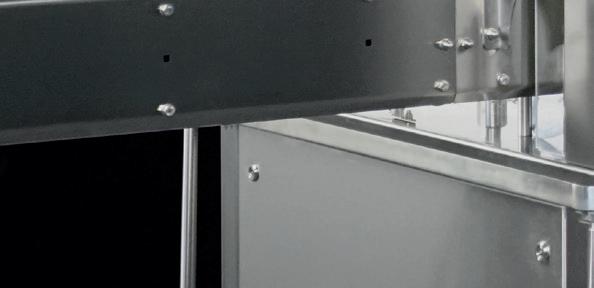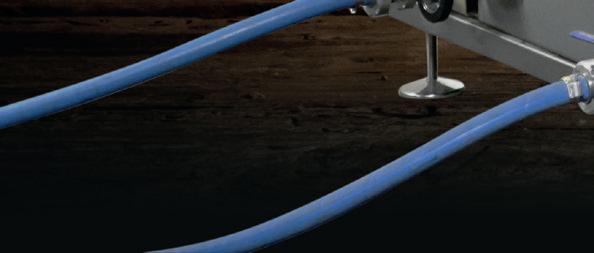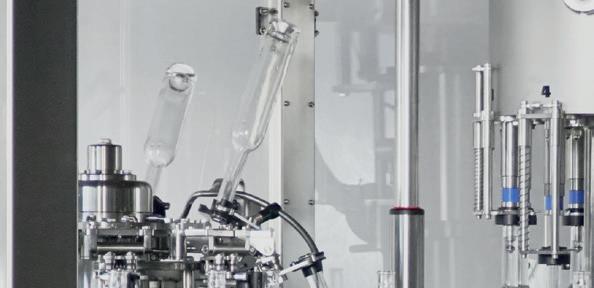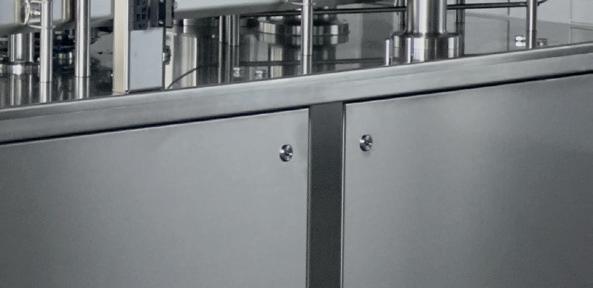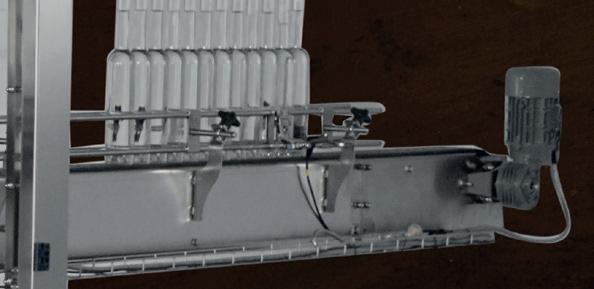




www.vineyardmagazine.co.uk
VINEYARD
Kelsey Media, The Granary, Downs Court
Yalding Hill, Yalding, Maidstone, Kent, ME18 6AL 01959 541444
EDITORIAL
Editor: Rebecca Farmer vineyard.ed@kelsey.co.uk
GRAPHIC DESIGN
Jo Legg
Flair Creative Design jo.legg@flair-design.co.uk
ADVERTISING & MARKETING
Jamie McGrorty 01303 233883 jamie.mcgrorty@kelsey.co.uk
PHOTOGRAPHER
Martin Apps www.countrywidephotographic.co.uk
MANAGEMENT
DIVISIONAL MANAGING DIRECTOR: Steve Kendall
PUBLISHER: Jamie McGrorty
RETAIL DIRECTOR: Steve Brown
SUBSCRIPTION MARKETING MANAGER:
Claire Aspinall
PRINT PRODUCTION MANAGER: Kelly Orriss
DISTRIBUTION
Distribution in Great Britain: Seymour Distribution Limited
2 East Poultry Avenue, London EC1A 9PT Tel: 020 7429 4000 www.seymour.co.uk
Distribution in Northern Ireland and the Republic of Ireland:
Newspread
Tel: +353 23 886 3850
Kelsey Media 2023 © all rights reserved. Kelsey Media is a trading name of Kelsey Publishing Ltd. Reproduction in whole or in part is forbidden except with permission in writing from the publishers. Note to contributors: articles submitted for consideration by the editor must be the original work of the author and not previously published. Where photographs are included, which are not the property of the contributor, permission to reproduce them must have been obtained from the owner of the copyright. The editor cannot guarantee a personal response to all letters and emails received. The views expressed in the magazine are not necessarily those of the Editor or the Publisher. Kelsey Publishing Ltd accepts no liability for products and services offered by third parties.
Kelsey Media takes your personal data very seriously. For more information of our privacy policy, please visit Kelsey Media takes your personal data very seriously. For more information of our privacy policy, please visit https://www.kelsey.co.uk/privacy-policy/ . If at any point you have any queries regarding Kelsey’s data policy you can email our Data Protection Officer at dpo@kelsey.co.uk.


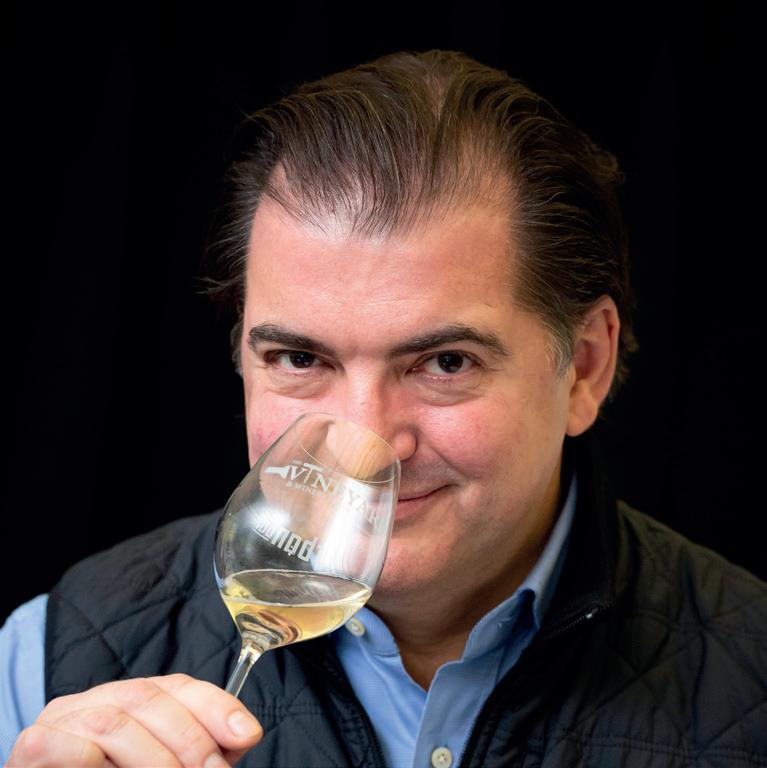
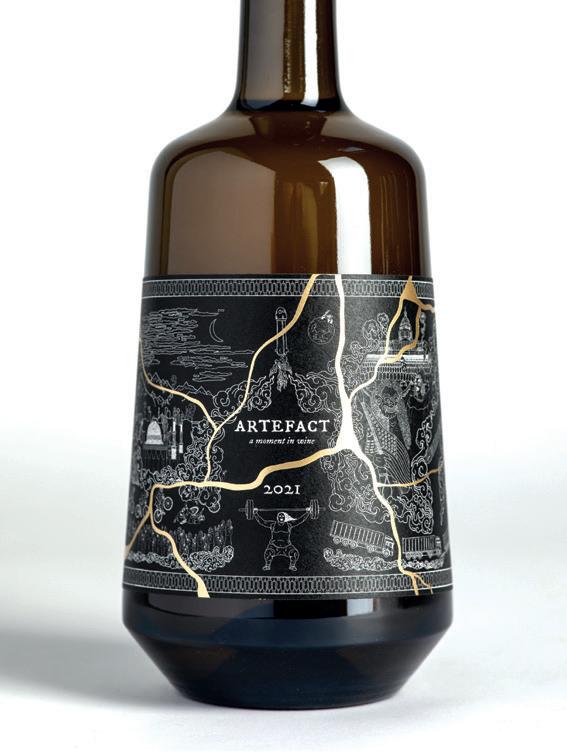
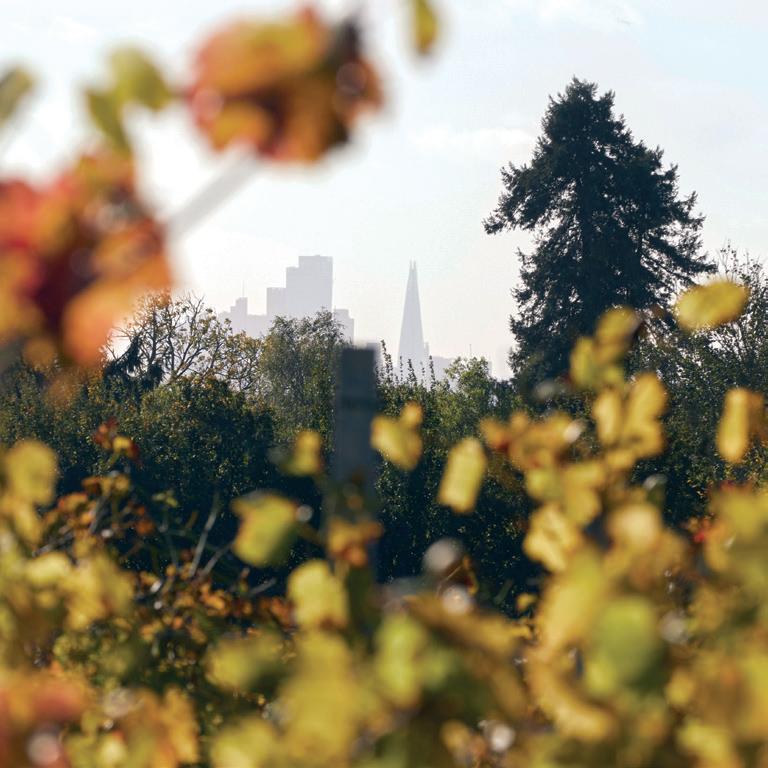


The London Wine fair is always able to provide visitors with something a bit different and this year was no exception.

Making sustainability sustainable
Vineyard Magazine joined Pleasant land Distilley to celebrate one year of trading for this young but thriving business. 22


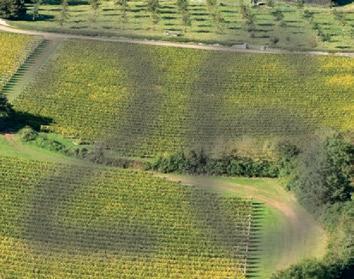
A knowledge of the past helps us move into the future. This was evident as Vineyard visited Sandridge Barton, the home of Sharpham Wine.

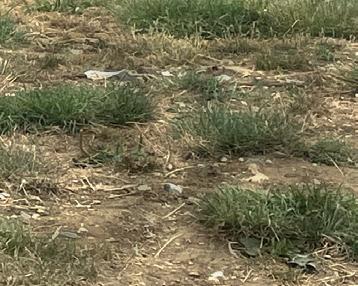
Managing your vines in the post-flowering period is crucial to grape quality and yield, not just in this season but also in the next.
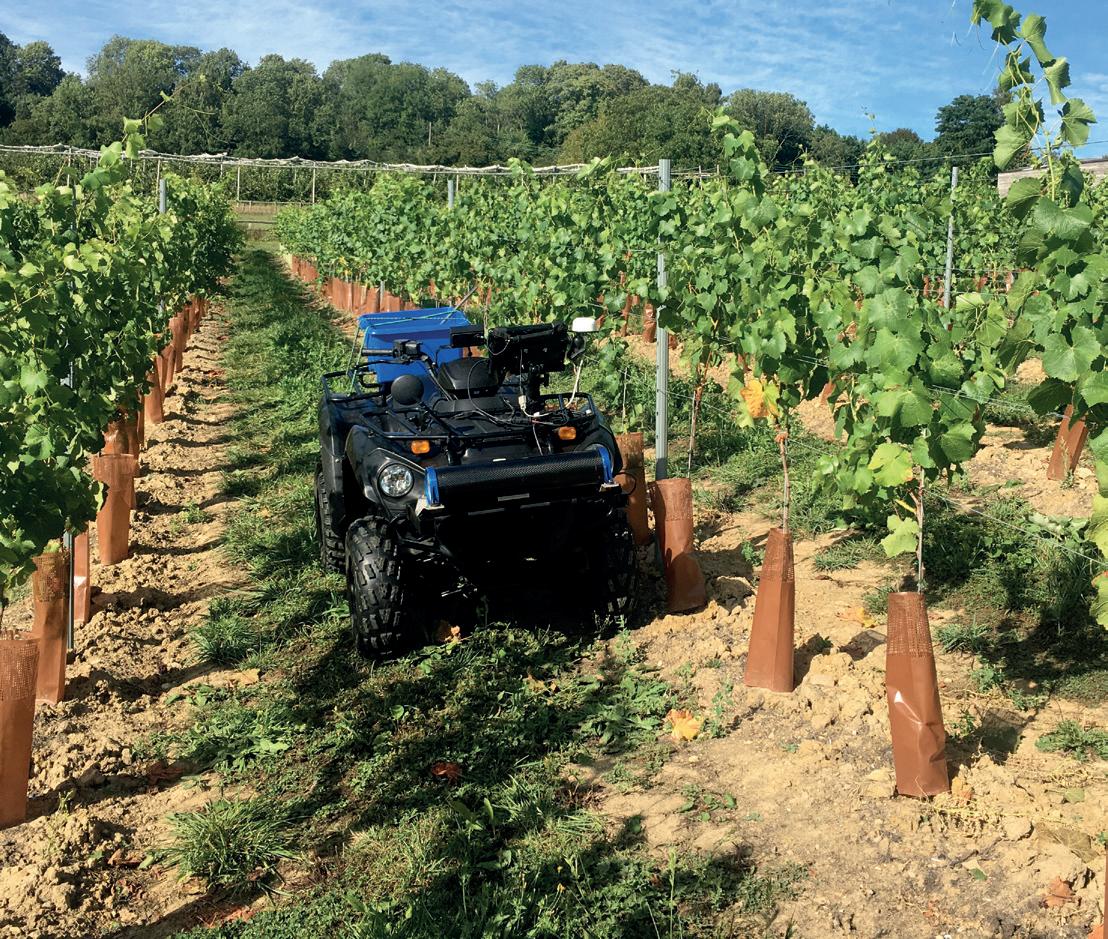
Backed by an unrivalled range of services
• Vineyard site selection
• Soil health strategy
• Omnia and TerraMap soil scanning
• Farm business consultancy
• Agrochemical input supply
• Biological and sundry products
• Environmental Stewardship advice
• Specialist packaging division
Talk
Your local depots:
HUTCHINSONS
Canterbury: (01227) 830064
PRODUCE PACKAGING
Marden: (01622) 831423

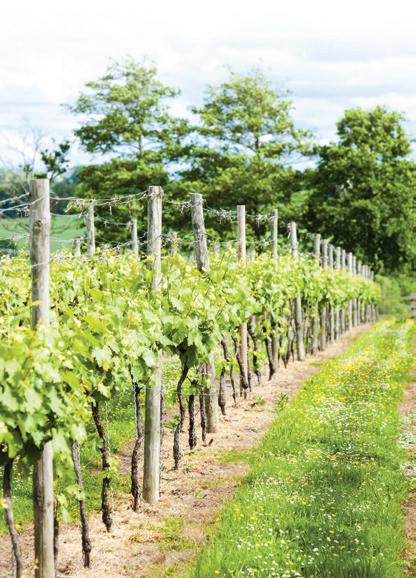
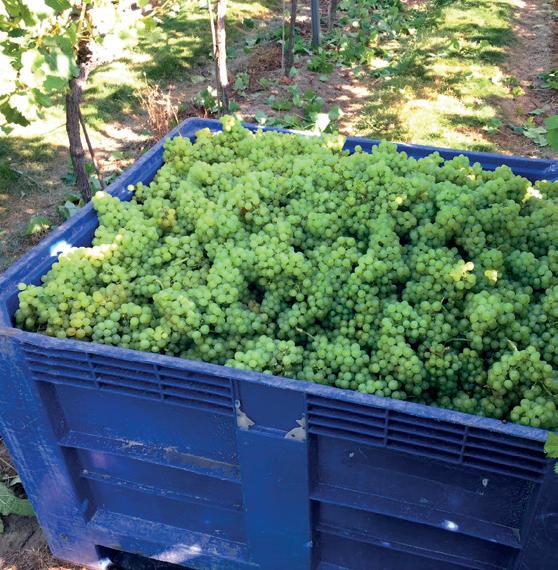
Tel: 01945 461177
e: information@hlhltd.co.uk
www.hlhltd.co.uk
www.producepackaging.co.uk

"The reward for work well done is the opportunity to do more," said Jonas Sark –
American Scientist.
Opportunity is definitely a word that could be associated with the London Wine Fair this year. The drinks Britannia section was audibly louder than many other parts of the show.
A growing reputation for excellence and innovative styles meant buyers were willing to patiently queue for tastings from English producers. This reputation for excellence was highlighted by three wines from Sandridge Barton, the home of Sharpham wine (featured this month on page 26) being listed on London Wine Fair’s Wine Writers Edit 2023 (a list of 30 must try wines at the show, chosen by ten of the leading UK wine writers).
Talking to Half Penny Green at the show, foreign buyers said that they could no longer afford to exclude English wines from their wine lists as it was being requested by customers and visitors to the vineyard stand were excitedly talking about the stories behind the wines. It became a common theme of conversation that end consumers want to identify with the wine they drink. Sustainability (the theme of the show) regionality and an engaging story were emerging as reasons people choose a particular wine. As a very small part of the international wine community it can be easy to feel lost in what one seminar claimed is a 36 billion bottle industry but this year enthusiasm for English Wine was infectious and reinvigorating. Surprisingly disparaging comments about price were noticeably reduced with many effectively agreeing that price is a reflection of the quality.
Without a doubt it felt like the international wine community had come together in London and English wine had received a collective hug. I hope this encourages more UK producers to attend and promote their wines in 2024.

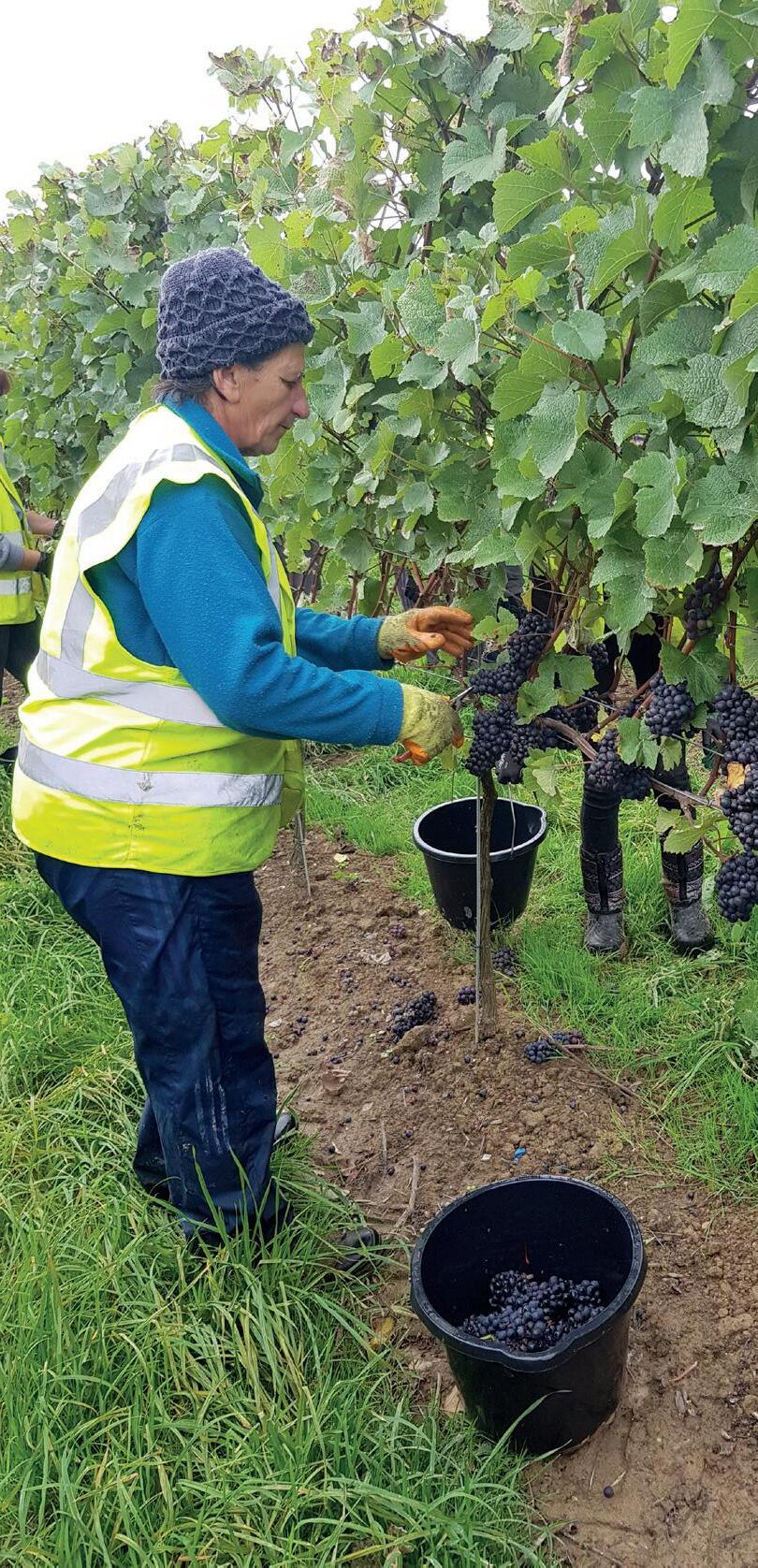



Forty Hall Vineyard is London's only commercial-scale vineyard, certified organic and largely cared for by a passionate team of dedicated volunteers. It produces award winning still and sparkling wines from its unique North London terroir, in partnership with expert organic wine maker Will Davenport. A social enterprise, it delivers health and wellbeing benefits to local people, with all income from the wines being put back into maintaining the vineyard and supporting this valued community asset.
Originally planted in 2009, the vineyard has grown into a nurturing environment for all. But after three years of poor harvests – due to adverse weather conditions, devastating powdery mildew and a lack of adequate resources to control it – they are now in need of vital funds to enable them to continue their work and become commercially sustainable. Without urgent funding for improved equipment and additional resources within the next few weeks, there is a very real risk to the 2023 harvest. Sadly, another poor vintage will mean no more wine to sell and,
consequently, the end of the vineyard. Head of Operations, Emma Lundie says: “This year really is make or break for us. We have managed ourselves well to keep the project going, despite three poor harvests and a pandemic, but we cannot survive another year and be sustainable in the long term without the right infrastructure in place to manage the vines.”
The vineyard needs a total of £85,000 in order to be self-sufficient, with the biggest element of this investment being a reliable tractor. This is required for the timely application of the essential organic sprays to feed and protect the vines and stop the spread of disease, as well as other essential vineyard maintenance, the timing of which is critical and often weather dependent.
Emma explains: “At the moment we share a tractor with Forty Hall Farm, where we are based, and it is not always available on the very specific days when we need to use it for essential spraying. The tractor we use also has a nasty habit of breaking down at crucial times. We simply cannot operate as a sustainable vineyard without our own tractor, that is fit for purpose.”
If the vineyard were to wither, it would be a tremendous loss to the over 100 registered volunteers who undertake all the tasks throughout the year – from winter pruning, through weeding and mulching, to harvesting the grapes. It would also impact all those who join for one-off team days, community lunches and to enjoy the vineyard’s Garden of Sanctuary status; not to mention those from across London and beyond who quickly snap up places for tours and tastings as soon as they are announced. It would sadly mean an end, too, for community outreach work with groups such as the local Ukrainian refugee women’s support group.
Karen Cunningham who has been part of the Forty Hall team since 2016 said:
“For us volunteers, the vineyard is about more than making wine. For some, it helps with personal challenges like loneliness, depression, bereavement and anxiety; for others it’s a place to meet, be outdoors and work together as part of something worthwhile. After all the effort that many people have put in to this so far, and after all our successes, it would be such a loss if London's vineyard disappeared.”
Please
 Photo: Miles Willis
Photo: Miles Willis
Sugrue South Downs announce acquisition of Bee Tree Vineyard in East Sussex, and long-term partnership with Coldharbour Vineyard in West Sussex.
Sugrue South Downs, widely admired as perhaps the UK's leading boutique producer of English sparkling wine, has announced the purchase of the 1.4ha Bee Tree Vineyard, in East Sussex. Just ‘15 minutes by tractor’ from Sugrue's "Grand Cru" Mount Harry Vineyard, source of their iconic "The Trouble With Dreams" and Cuvée Dr Brendan O'Regan since 2013.
“Bee Tree is the perfect location to establish our own boutique winery” said husband and wife team Dermot & Ana Sugrue.
In addition to Bee Tree, which is planted mostly with Pinot Noir on a clay loam topsoil over Lower Greensand and sandstone, Sugrue has secured a long lease on the 7.35ha Coldharbour Vineyard established on chalk and flint soils near Pulborough in West Sussex in 2005. Sugrue will release their first Coldharbour Single Vineyard 2015 Blanc de Blancs under their Cuvée BOZ label next month, their first of many wines made exclusively from this site.
"I've made every wine that has been released from Coldharbour since 2011" said Dermot Sugrue. “Since 2015, we've sourced a lot of fruit for Sugrue South Downs from this fabulous site and I’ve worked closely with the management team Liesa and Geoff for 20 years now – since our Nyetimber days together –so to consolidate this long-term collaboration and bring them into the Sugrue family could not be a better fit. It's an exceptional and unique vineyard, and they are some of the most experienced viticulturalists in the UK.”

With Bee Tree and Coldharbour now fully integrated in the business, when added to the 2.2ha Mount Harry, planted in 2006, Sugrue's vineyards under management have increased from 3.5ha to 11ha in 2023. "These are exceptional sites, I know them very well, as well as the people who established them. I have worked with them, over many, many years", said Dermot Sugrue.
Dermot is no stranger to a few well earnt rewards. During his tenure at Wiston they received WineGB Winery of the Year four times in his last five years. It was during this period, that he continued to build stock, lease vineyards, and release his own wines. They have been described by Hugh Johnson OBE as, "Spectacular. Honestly, England's best" and "Perfect for lovers of grower Champagne", by Jancis Robinson MW.
The news of Bee Tree Vineyard's acquisition comes just six months after one of the UK's leading boutique hoteliers, Robin Hutson, of The Pig hotels, revealed he had invested an undisclosed sum in the Sussex wine producer. Hutson, a long-time supporter of English wines, himself planted a vineyard at his most recent hotel, The Pig in the South Downs, Madehurst, West Sussex, in 2020.








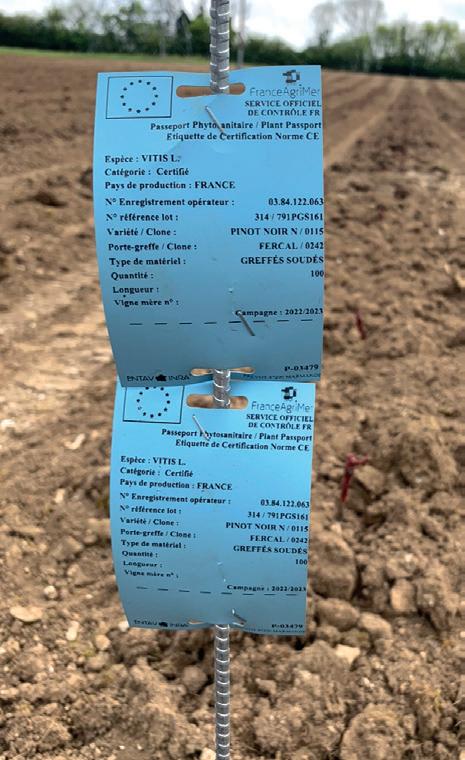

James and Lynsey Drabble planted 6,000 vines at Pett Bottom, Kent in early May 2023. As always at this time of year apprehensive eyes were turned on the weather but James and Lynsey were delighted to have avoided the rain. Planting went well and the Bacchus, Chardonnay, Pinot Noir and Pinot Meunier vines have all now got stakes and guards and the vineyard has a name – Epèron wines.
James and Lynsey had been thinking about diversification for several years and even attended the Farm Diversification Show at the NEC, Birmingham. There was more information about camping ideas than vineyards however but after the pandemic things changed. "The
pandemic restrictions meant we weren't able to visit Kent for a lengthy time, and upon our return, I was stunned to see so many 'traditional' farmers in the area had diversified and planted vineyards,” said Lynsey.
Little Bursted Vineyard is also located in Pett Bottom and was planted in 2022 with their vines exactly a year ahead “we are watching and following with interest,” Lynsey said. “It’s impressed us quite how friendly and helpful the wine growing community is,” Lynsey concluded.
James and Lynsey have a fascinating story to tell and Vineyard magazine will visit them to see how their journey is progressing and find out the inspiration for the name.

Itasca Wines will be running a demo of the new Vogelsang wine pump at their winery in Hampshire in June.
Richard Love, Area Manager for Vogelsang, said: "We're really pleased to be showcasing this new pump with such a well-known and respected name in the winemaking industry. Our wine pump is specially engineered to help move wine, liquids and fruit without compromising the integrity of the end product; the finished wine.
"The beauty of this pump is its gentle operation. As it's a lobe pump, it moves liquids and solids without oxygenation or turning the pumped medium too greatly. No
matter what is being pumped – wine, must or grapes – it remains intact and unchanged by the wine pump."
Observers of the demonstration will get to see first-hand how the pump is set-up, its portability, and its various uses in recirculating, bottling and storage.
John Simmons, Sales Director for Itasca Wines, said: "This is a fantastic new pump for the wine industry, and we're encouraging winemakers to join us for the demonstration to see how it works for themselves."
If you're interested in attending the wine pump demonstration, please contact John Simmons on 07788 561 464 or email john.s@itascawines.com

Berlin Packaging have launched a new sustainable aluminium sparkling wine bottle. The NEXT 750ml bottle is perfect for sparkling wines, the bottle combines the elegant and traditional wine bottle shape with an innovative, sustainable and lightweight material; aluminium.
"This bottle is a significant step forward in our commitment to true design innovation with sustainability at its heart. NEXT 750ml is a great way to engage with consumers to enjoy sparkling wine in a more sustainable way. The bottle is lightweight and portable, making it ideal to offer at events that would prohibit glass. Additionally, the bottle can have multiple designs, making it a stylish and trendy option,” said Mark Crumpton Business Development Manager.
Key highlights of this innovative new product are:
◆ It is fully recyclable at the end of its life, without any loss of quality. This means that it can be recycled into new aluminium products, reducing the need to extract new
aluminium from the earth.
◆ It is much lighter than a glass bottle, which means that it requires less energy to transport and store. This results in consistent energy and carbon savings across the supply chain.
◆ The aluminium bottle provides maximum product protection thanks to its total barrier to light, CO2 and moisture. This means that the sparkling wine inside will stay fresh and flavourful for longer.
◆ The aluminium bottle has a higher thermal conductivity than glass, which means that it can cool the sparkling wine inside faster. This is ideal for consumers who want to enjoy their sparkling wine chilled.
◆ This bottle is ideal for packaging sparkling wine for events where glass bottles are prohibited, such as arenas, festivals and sports events. This is because the aluminium bottle is lightweight and shatter-proof, making it safer to transport and handle.
◆ The new aluminium sparkling wine bottle features a classic cork wine closure, with the

metal cage, in one aluminium bottle. This provides the traditional look and feel of a cork wine bottle, while also offering the sustainability benefits of an aluminium bottle.
◆ This bottle can be fully decorated, with shoulders and neck included. This allows for a wide range of creative design options, making it possible to create a bottle that perfectly reflects the brand and personality of the sparkling wine inside.








Kenward Construction based in Horsham, West Sussex offer a full design and build service for your next steel framed building including composite cladding, concrete panels, roller shutter doors and bespoke designs to meet individual planning conditions. Kenward Construction also offer a wide range of services offering a truly one stop shop for your next building project. Demolition, plant hire, access roads, drainage, sewage treatment plants, rainwater harvesting, paving, concrete floors/ slabs, walling and site landscaping.
Hampshire-based winery, Black Chalk, has released the 2020 vintage of its two sparkling wines – “Classic” and “Wild Rose”; the first vintage to be made as estate wines. Black Chalk, which was founded in 2018, acquired four Test Valley vineyard sites totalling 12 hectares at the beginning of January 2020, and completed the winery build in mid-September, just before the first grapes from harvest were brought in.
The vineyards comprise 36 different rootstocks all of which are handpicked and vinified separately before deciding on the final blends. The 2020 vintage also marks an increase of 56% in volume of these two



wines which will satisfy the growing demand from independents and the on-trade in the UK and across its key international markets.
The new wines were launched to the UK trade and media at London’s Oxeye; founder and chef Sven-Hanson Britt has championed English wine and British seasonal produce since opening in 2021. Commenting on the release of the 2020s at the launch, winemaker & CEO, Jacob Leadley said: “Each new vintage is essentially a time capsule and Black Chalk’s 2020 was particularly memorable for so many reasons. We were picking our own grapes from our own vineyards for the first time which was incredibly exciting, but it was set against a backdrop of extreme uncertainty. The winery build had been somewhat chaotic thanks to Lockdown and was only just finished in time – 48 hours before picking was underway. But growing conditions for the 2020 season were near perfect, and the quality was the best I had ever seen in 10 years making wine in England.”
Assistant winemaker, Zoë Driver, added: “Everything was early; Spring was early with above-average temperatures and unusually high sunshine hours – more than double the norm. The vines rocketed out of dormancy and saw budburst more than two weeks earlier than usual. The summer was warm, and largely dry – breaking records for the highest sustained temperatures –and resulted in our earliest picking to date such was the ripeness of the grapes. It was completed by 10 October, around five days earlier than the harvest usually begins. Alongside the winery build, managing acidity was our big challenge in 2020, to best showcase the extraordinary purity of fruit.”
Alongside the release of the 2020s, Black Chalk is launching its first still Chardonnay. “Little White Lie” marks a departure for Black Chalk; this inaugural 2022 vintage has been made from Kent grapes, from a chalk subsoil vineyard on the Kent North Downs. “Last summer’s record-breaking temperatures resulted in really ripe Chardonnay, and when I was offered this parcel it was impossible to turn down,” said Jacob. “When we first embarked on the Black Chalk journey, we were keen to explore other territories and innovative winemaking techniques, so this limited-edition wine firmly fits with our original ethos”. Little White Lie 2022 was fermented in stainless steel, with 16% in new French oak. There was no malolactic fermentation, and this has resulted in a super fresh and vibrant wine, with pure, balanced fruit. Only 2,600 bottles were made. Little White Lie will be released in late May.
A site visit to the vineyard or winery is usually done at the start of deciding to buy, lease or finance a vineyard or winery, but at the very latest it needs to be done before the transaction completes.
The agent will usually accompany you on the visit, but it is a good idea to bring your solicitor along as well so they can get a feel of the property. If that is not possible however, ask the agent or solicitor for a copy of the Land Registry Title Plan and take this along with you so you can check the following:
Using the Title Plan walk the boundary of the property line checking that it matches up with the red outline on the Title Plan. With rural land you may notice that the boundary line is marked on the ground by a natural feature like a hedge or a stream, otherwise it may follow a man-made boundary like a fence. If the Title Plan does not match up with what you expect or what is happening on the ground let your solicitor and the agent know as soon as possible.
Land can have public rights of way over it which means the public can cross over your property and you cannot block or build over the footpath. This could scupper your vine planting or building plans. Trodden ground which shows a used footpath can be a sign of this as well as gates around the boundary. Usually, public footpaths will come to light in property investigations which your solicitor will undertake, but some of these rights can arise by the footpath simply existing for a long time. In any event it is helpful for you to mark these footpaths on the Title Plan and share this with your solicitor so they can check with the seller.
This is important for your solicitor to have so they can check you have proper legal rights to access the property without trespassing onto someone else’s land. Many properties I review are accessed over private land belonging to other people so it is vital to check that the proper legal rights are in place to reach the property. The access could be directly off a public highway like a main road, but in some cases it may be over other people’s land in which case your solicitor will check you have been granted ‘a right of way’ otherwise you may not be able to use that access point.
If any of the access points are blocked by a gate please take a photo of the gate as well and mark the position of the gate on the Title. Again, this is so your agent or solicitor can raise it with the seller to check who controls that gate to make sure you can reach the property.

Again, the issue of water supply and drainage comes up quite regularly in properties like this. This is important for all properties, but especially so for vineyards and wineries that use a large amount of water. When you are walking the site ask if the property is connected to mains water, how the water drains and if septic tanks are used. If septic tanks are used ask when they were last serviced.
The above points are helpful to sort out as soon as possible and can help your transaction proceed smoothly. If you have any questions on the above, please feel free to contact me.


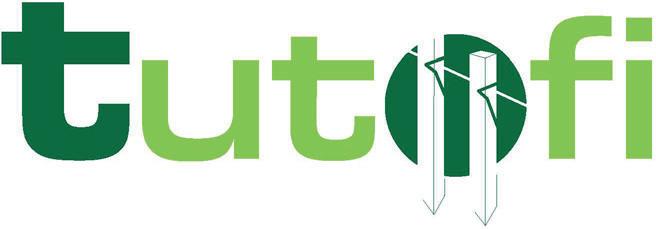


• Made from repurposed plastic & aluminium waste
• Guaranteed for 10 years
• 100% recyclable posts
• Smallest carbon footprint on the market

• Resistant to mechanical weeding
• Square shape: 2cm x 2cm
• Custom heights: from 0.6m to







In your efforts towards greener winemaking, you may well already use natural pest control and avoid harmful chemicals, but eco-friendly practices don’t stop there. If sustainability is one of your top priorities, you can go one step further by opting for green vineyard supplies.
Cavi Group are committed to making vineyards more sustainable places by designing products for vine training. Its first eco-innovation was Amidograf, the first biodegradable foliage wire vine clips that compost in-situ. Then, a year ago, Cavi group released Tutofi, stakes made from recycled & repurposed plastic and aluminium waste, which in turn are fully recyclable themselves.
Tutofi is the result of the shared expertise of Replace, a French organisation committed to zero waste, circular economic consumption, and Cavi Group. Replace brought new recycling technology to the table, which offers an energy efficient way to recycle plastic to produce 100% recycled, 100% recyclable metal-plastic products.
Cavi Group’s sales director, Basile
Gautherot, saw an opportunity to bring longlasting eco-responsible stakes to vineyards with Tutofi, stakes guaranteed for 10 years with a minimal carbon footprint.
Tutofi stakes boast many advantages: they are resistant against UV, humidity, frost and soil chemistry. They don’t rot or rust. They are resistant to tillage tools and can be attached to the binding wire. What’s more, each stake is reusable and at the end of its life can be recycled by the same process that produced it.
These stakes are made from waste that, until now, had no way of being recycled and ended up in incinerators or landfill. What better feeling than planting your vineyard stakes and realising that this equipment started out life as a toothpaste tube, a make-up container, food packaging, a road sign, and knowing that you’ve done your bit to contribute to zero-waste winegrowing.
Replace’s first machine started operating in early 2022 in their headquarters in

Champagne, and was soon joined by a second machine. To ensure that they practice what they preach, Replace source waste within a radius of less than 60 miles of their locale, and the transformed products, including Tutofi, are also manufactured locally. Whilst the number of vineyard stakes needed annually in the UK doesn’t (yet) justify a Replace machine on this side of the Channel, other products are also currently being trialled, including fence posts, tree stakes, pallets and garden furniture. It’s easy to see the potential of this technology on British soil, recycling British waste to combine the circular and local economy, while reducing landfill, and our carbon footprint, to produce more best-selling products.
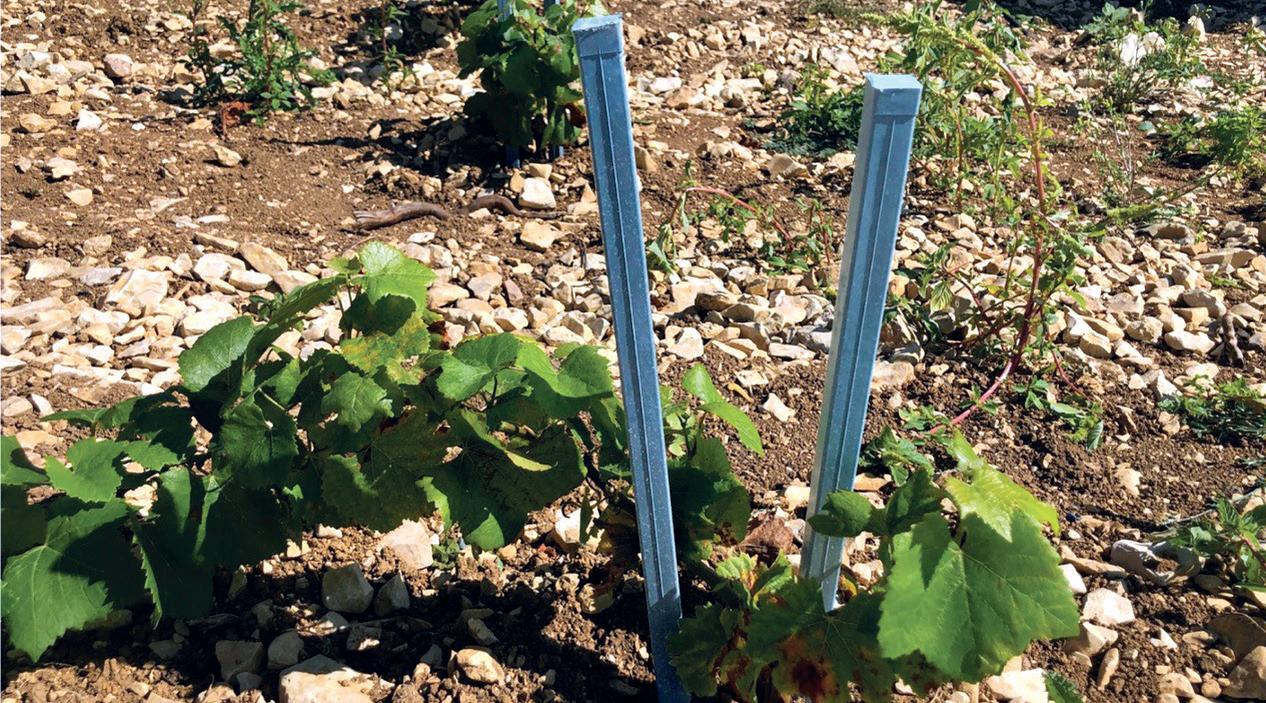
With this year’s Vineyard & Winery Show just under six months away, Vineyard Magazine are pleased to announce a number of new brands that will be exhibiting for the first time.
Knight Frank, Rootwave, WBC and Pinks Group have all booked space to appear at the third instalment of what has quickly become the main event for the UK’s viticultural industry.
RootWave, the Warwickshire based electrical weed control (eWeeding) manufacturer, will be promoting it’s first electrical powered weeding machine at this year’s show.
In independent trials in orchards last year, the company’s patented highfrequency eWeeding system delivered full control of weeds, similar to results from trials in sugar beet and maize during the same summer (2022).
The RootWave machine treats weeds in the rows of vines using treatment electrodes on purpose-designed hydraulic arms, to work seamlessly between different row widths. The treatment uses electricity to create heat within the weed and roots boiling them from the inside out.
Growers can reserve a machine now, with those first in the queue able to secure delivery in spring 2024.
In 2018 the company successfully launched a professional hand-held eWeeder RootWave Pro, and has sold over 150 units in the UK and Europe.
CEO Andrew Diprose said: “RootWave delivers better weed control in fewer treatments at a lower cost. It will become the indispensable tool for growers that want effective weed control without any environmental issues.


“Our technology is certified organic and helps nature restore its soils, water and biodiversity.”
In the company’s own tests eWeeding provided full control of weeds at a lower total energy use than chemical herbicides. Mr Diprose said: “RootWave delivers the most effective, economical, environmentally friendly and safe weed control on the market.
“It works so well because the plant and roots are killed by heat generated within the weed itself. And because it works so well, the number of applications you need in a season is comparable to that of herbicides and less than required for mechanical weeding. We are the only eWeeding provider using highfrequency electricity, which has significant advantages over standard 50Hz or DC wave forms.”



Specialising in the manufacture of vineyard maintenance equipment such as flail mowers, mulchers and ATV attachments such as toppers and spreaders, Voxx Machinery will occupy a large space near the entrance of the Maidstone building at this years Vineyard & Winery Show.
Founded in 2017 by Robert Burr, their specialised range of machines cater specifically for fruit and vineyard application, with all manufacturing taking place in the UK. Robert said "Our aim and passion is to manufacture our UK machines to not only be stronger and more durable than others but ensure they are built to be ergonomically pleasing, minimising areas such as water traps, areas debris can collect and reducing down time when it occurs. As well as this, having a common sense approach to positioning of items such as grease points, service hatches and chains for hanging PTO shafts. We take pride in manufacturing our machines so you can enjoy using them as much as we enjoy making them”.
Drinks Packaging experts WBC were so keen to attend this year's Vineyard & Winery Show that their marketing manager Enzo Dell’armi contacted the Vineyard team the very day after last year's show to reserve a spot for 2023.
Holding in stock the UK’s largest collections of gift and hamper packaging, protective packaging, bar and wineware, retail supplies and furniture and printed bags for life, all of WBC's products are available in low volumes, at wholesale prices.
Born the same year Nintendo released the Gameboy and Lisa Stansfield went all around the world (can you guess the year?) WBC were previously known as the Wine Box company and before that Liquid iD, they began their journey with the help of a £5,000 loan from the Prince’s Trust.
WBC founders bought a van, designed some wine packaging
and started trading.
Today, three decades later WBC supply more than 9,000 UK customers with more than wine boxes. This is a talented team of nearly 50 staff from 12 nationalities speaking a total of eight languages.
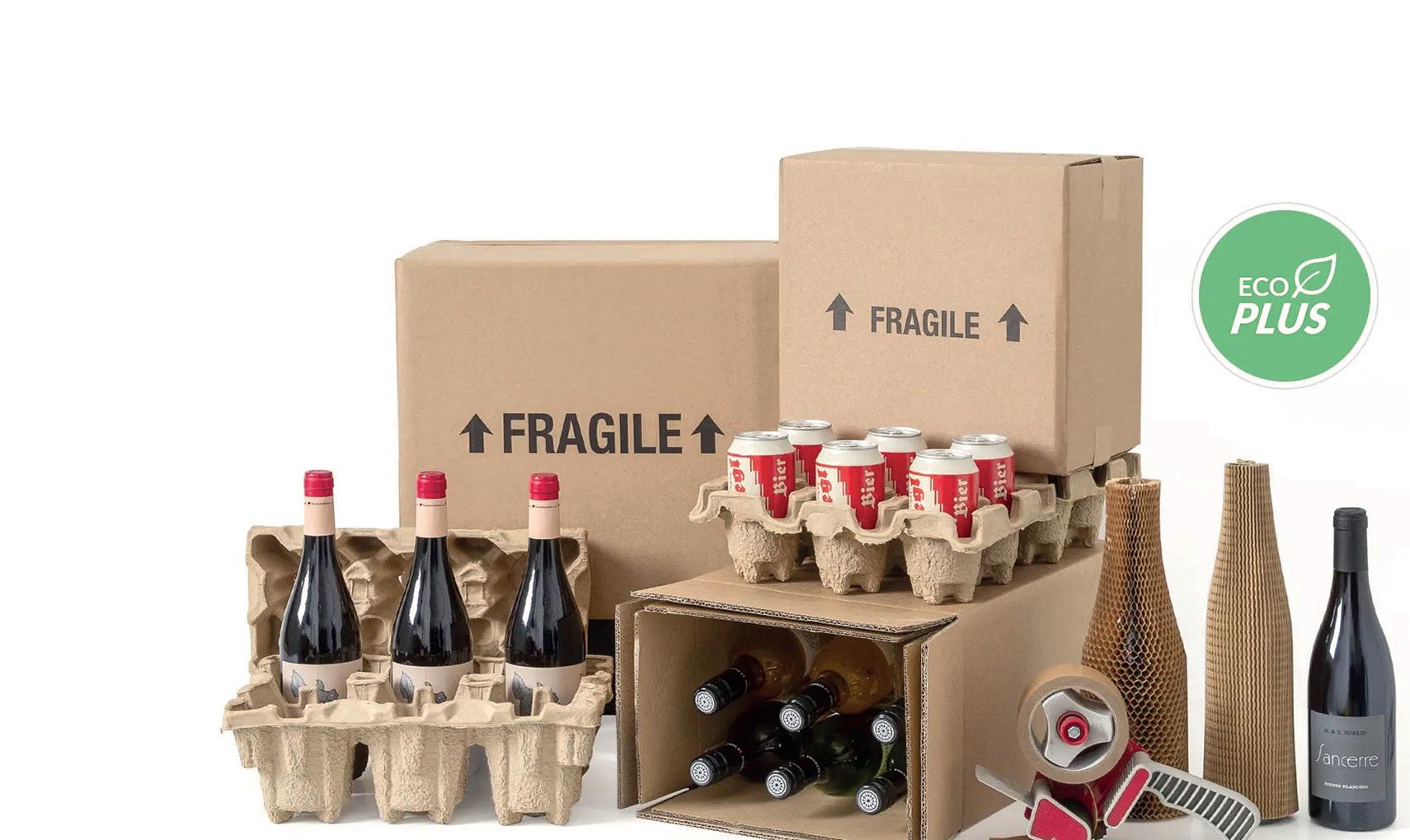
Land Agents Knight Frank, fresh from recently appointing James Osbourn previously of Squerryes Wine Estate, have taken a prominent position near the WineHub in the Maidstone Hall.
Assisting UK vineyard owners to find suitable land using their bespoke digital mapping tool, which reviews data on soil type, altitude, slope direction, historic weather patterns along with title ownership, Knight Frank are well worth speaking to if you are looking for suitable viticultural land. For the established Vineyard and winery business, Knight Frank are specialist advisors in investment and sales, renewables and grant funding.
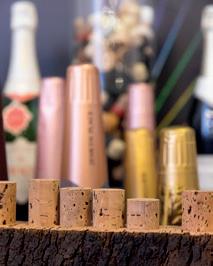



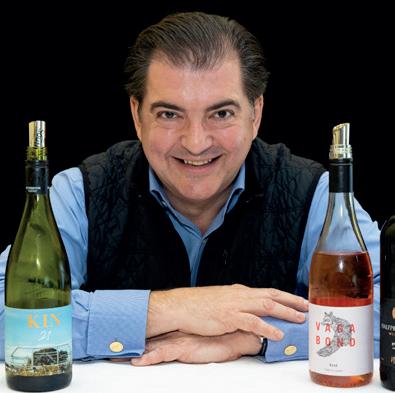
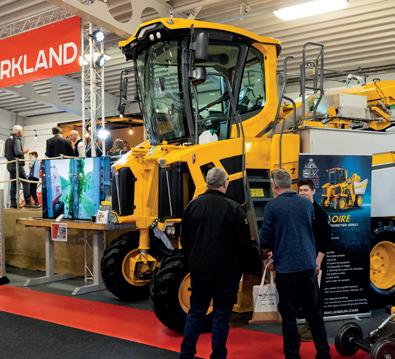



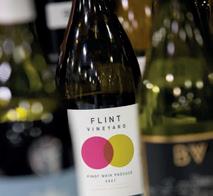
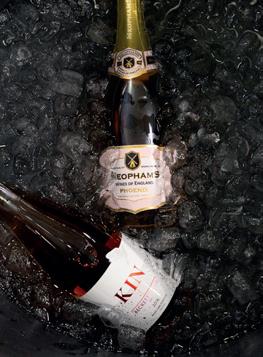




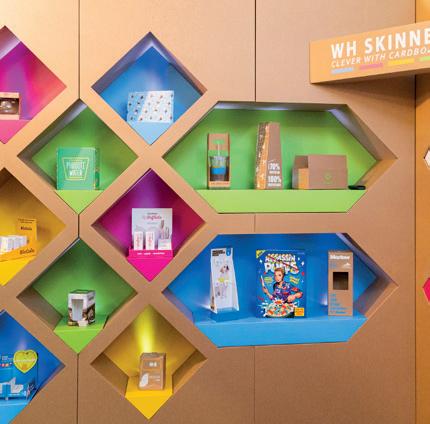
The London Wine Fair took place at Olympia from 15-17 May. Vineyard magazine was pleased to be able to invite three producers to join us at the show, offering visitors to the Vineyard stand tastings of wines that have featured in recent editions alongside some new releases. On Monday Vineyard welcomed the team from Greyfriars which is based in Surrey. Stopham Vineyard in West Sussex were our guests on Tuesday and Gusbourne in Kent joined the Vineyard team for the final day of the show. Vineyard would like to thank all those who joined us for what was an amazingly busy three days.
The WineGB stand was crowded with visitors for all three days of the show. Artelium, Halfpenny Green, Defined Wine, Court Garden, Bluebell Vineyard, Silverhand Estate, Sandridge Barton and Everflyht were part of the WineGB stand for the first time. Everflyht were able to offer visitors tastings of the NV Brut and their Rosé De Saignee 2019. Luke Spalding, the general manager, described the

Rosé as “a field to bottle wine.” The new Rosé De Saignee will be released in June 2023 and visitors to the WineGB stand were able to get a first look at the new release.
Returning to the London Wine Fair with WineGB were Denbies, being one of the UK’s largest producers, along with The Uncommon who were able to showcase both English sparkling wine and spritzers in the alternative format of a can. House of Coren, whose brand has been a breath of fresh air since their launch several years ago were inviting trade buyers to sample their new Boco Rosé.
The London Wine fair is always able to provide visitors with something a bit different and this year was no exception. Loxwood Meadworks in west Sussex produce an English Honey Wine with a surprising balance of honey and acidity. Owners Danny Bacon and Emily Lambert were at the show introducing their products to the adventurous and the curious. Stocked at the Dorchester and London’s oldest wine bar Gordon’s Wine Bar, Loxwood Meadworks are going from strength
to strength. Emily is a Ritz trained sommelier and Danny is the organiser of a medieval jousting festival and working together they have an eco-conscious brand that appeals on so many levels. Providing a local option to add to a wine list in the off dry category, Loxwood Meadworks are also signed up to One Percent for the Planet (a global initiative where members all give 1% of turnover to create a healthier planet.)
The Wine Cellars based in Fulham and Hammersmith were on hand to inform visitors about the services they offer. Alongside wine storage for personal use the company are able to offer temporary solutions for businesses that might have had breakdowns in their wine fridges or may need temporary storage whilst they refit or move premises.
Throughout the three days of the show, visitors were treated to talks, debates and masterclasses. On Tuesday morning the Vermentino grape from producers of the


island of Sardinia provided a fascinating look at a grape variety that can create wines in such varying styles. In the north east of Sardinia is Gallura, which has a unique pink granite rock covered by sand. This sandy soil means there is no phylloxera and so some of the vines are not grafted. Gallura also has mild winters with rain during the dormancy period. The Vermentino grape loves the sea breeze and retains acidity in high temperatures. It was described by Frederica Zanghirella of the UK Sommelier association as “vibrant and exciting but also versatile,” enabling the production of wines ranging from light and refreshing to full bodied and quirky. “It is a grape variety with growing popularity in the UK because it is great with food,” explained Frederica. Nearly six million bottles are produced a year from 40 wineries and Frederica was able to talk the audience through a selection of wines with different styles and flavour profiles. Lagrimedda –Cantina Li Seddi 2022 was the second of eight wines and was interesting in that it was made from ungrafted vines allowing for a longer lifespan, and an increase in grape quality. Also within the Italy section of the London Wine Fair, Vineyard magazine were delighted to meet Matteo Parolari of the Bosio Family Estate Piedmont, Italy. It was interesting to explore the various grape varieties within their organic wine range, Passato.
On Tuesday afternoon in the Education Zone Michael Karams introduced the wine making history of Lebanon to a packed audience. Michael summed up this history in five ways:
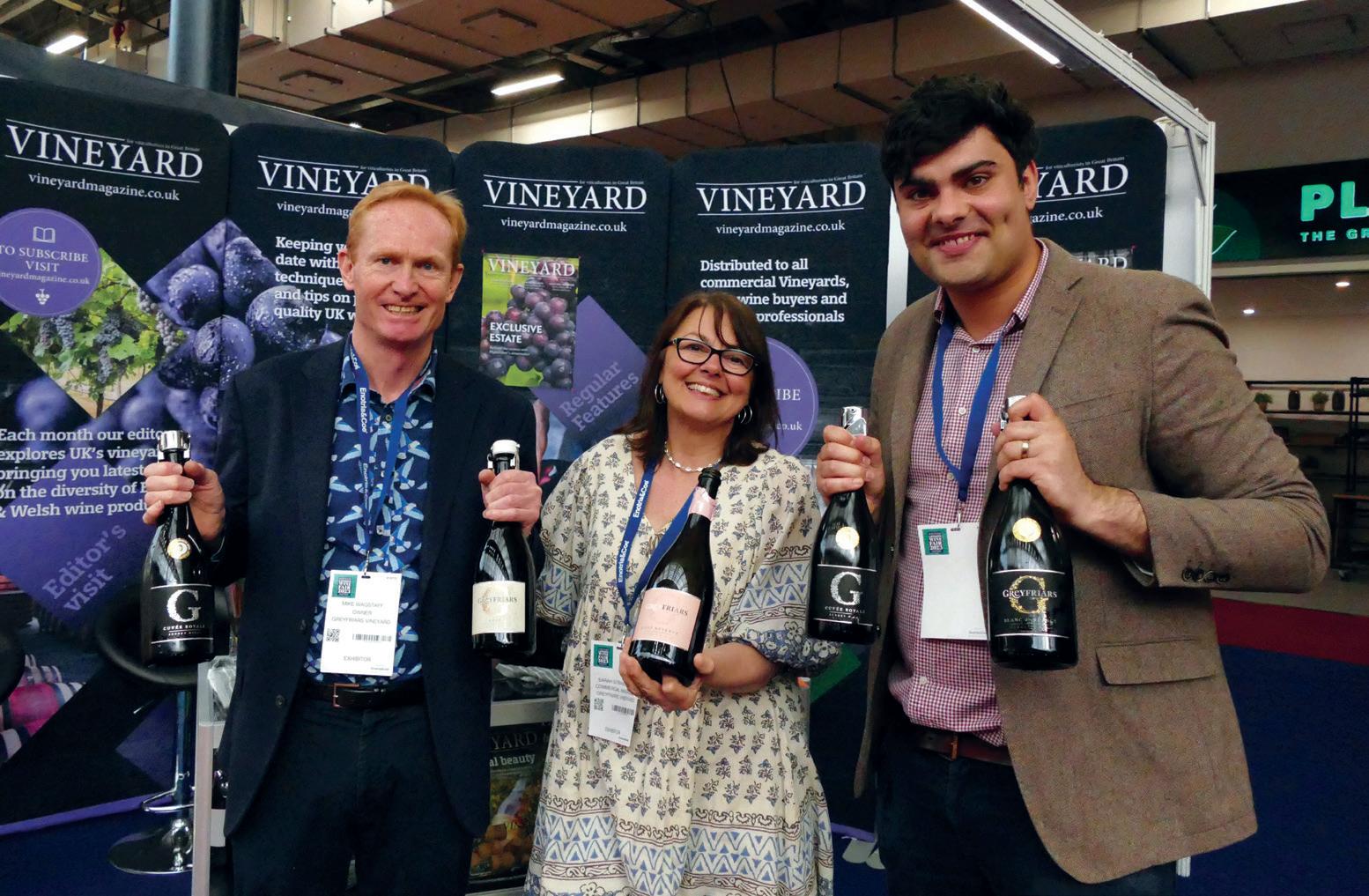

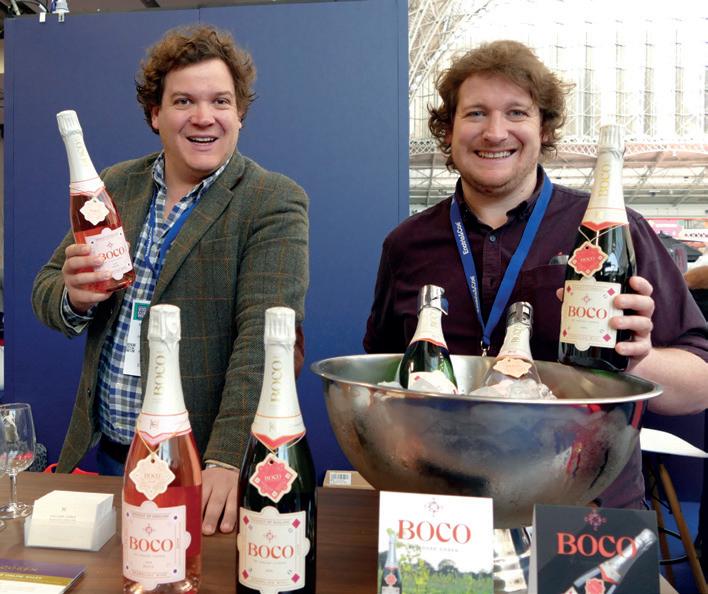

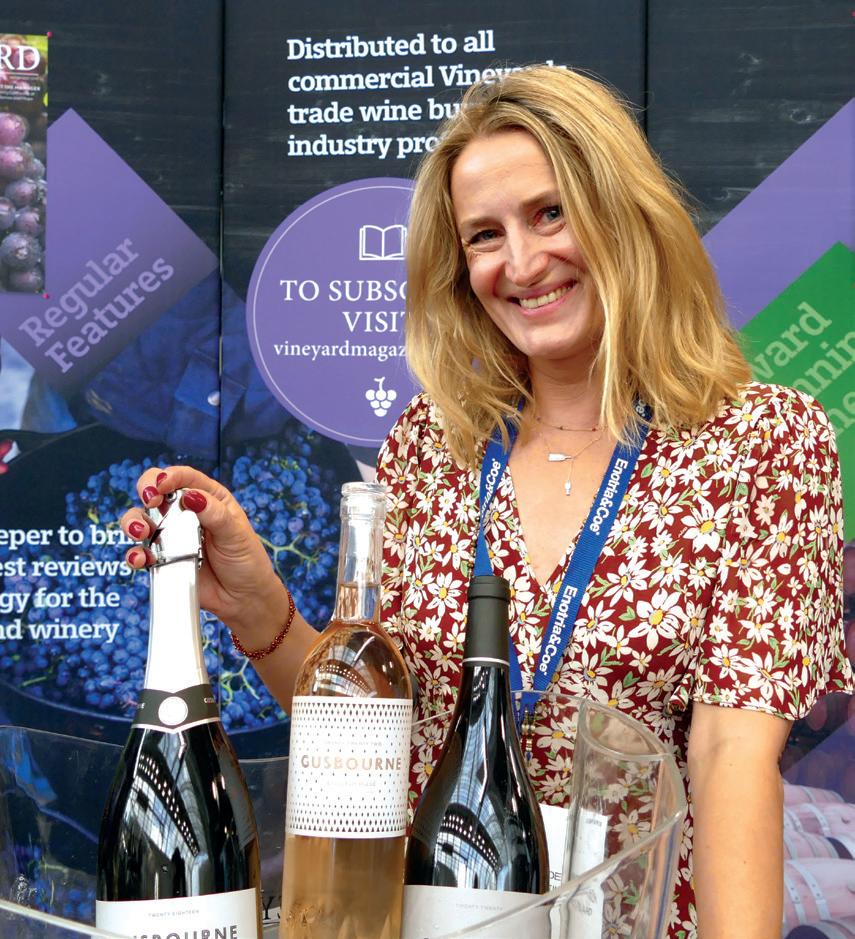

Old: Wine production in Lebanon is ancient. Michael explained: “The Phoenicians sold wine, glass and purple dye to Greece, Rome and Carthage so in effect they were the first wine merchants.”
<<



Small: “Lebanon is a small country about the size of Yorkshire,” said Michael. The annual production for the country is 10 million bottles. Putting that in context Michael compared this figure with the 350 million bottles of wine produced in Brazil.
Heavily influenced by France: Lebanon was part of the mandate system and as such under the control of France for 23 years after the First World War. At that time French soldiers were allocated 1.5 litres of wine a day and so a wine industry was created. When Lebanon became independent in 1943 the country had an established wine industry.
High: “Mountains are at the forefront of Lebanese consciousness,” explained Michael. The lowest vines are planted just below 1,000m above sea level and can still be found at 2,000m above sea level. Snow melt provides plenty of water.
Diverse: There are 45 different varieties across the country. The principal Indiginous grapes are Marweh and Obeidy.
Vineyard Magazine caught up with three producers from Lebanon that are part of the Reservin Collective. Wines carrying the Reservin label are all produced by vineyards near to or inside protected areas. Wine makers that are part of Reservin are from four countries in the Mediterranean, being Tunisia, Italy, France and Lebanon and all share the same ethos. They are committed to sustainable viticulture and aware of the
unique historical links of the region to the production of wine.
Eddy Naim is the winemaker at family run Chateau Qanafar and he explained that he feels “wine is made in the vineyard,” and so they only work with grapes they have grown from their own vines. The vines are planted at 1200m above sea level harvested by hand and the vineyard incorporates minimal intervention practices. Blanc de Qanafar is a Sauvignon Blanc with a beautiful balance. Chateau De Qanafar 2015 is an unfiltered and unfined red wine blend of Syrah and Cabernet Sauvignon aged in French oak for 12 months; it is a true reflection of the terrior.
Chateau St Thomas is a vineyard of the Bekaa valley. The vines are planted at 1,350m above sea level and include the indigenous grape variety Obeidy and the winemaker at Chateau St Thomas is working on the development of other indigenous varieties. There is a single varietal wine available from the Odeidy grape but Obeidy is blended with Syrah and Carignan to produce Noor El Ain which refers to the world’s largest pink diamond but is also a Lebanese saying meaning ‘light of my eye’, being an expression of affection for someone that you are close too. The wine tastes like summer and with its diamond shaped bottom – a nod to the meaning behind the name – it’s sure to have been a favourite with all those who were introduced to Chateau St Thomas at the London Wine Fair.
Chateau Cana, planted 900m above

sea level was the lowest of the Lebanese vineyards that Vineyard spoke to at the show. The vineyard has been working to ensure that the wines they produce reflect different styles. Chateau Cana are one of only two wineries in Lebanon to make wine from the Mekssassi grape. They also produce Jardin Secret using the Sobbaghieh grape which means colourant or dye. Chateau Cana are the only winery in Lebanon to use this grape. This variety not only has red skin but the flesh of the grape is red and even the grape stems have an unusual hue.
How many different types of wine bottle are actually in use? What prevents a bottle from being reused? These are the million-dollar questions that a three-way partnership between The Porto Protocol, London Wine Fair and Sustainable Wine Solutions (SWS) hopes to answer.
The LWF23 Bottle Collection Initiative, the first edition of a yearly initiative, will categorise all waste bottles collected at the show according to bottle type, label and country. A post-event report, which will be the most comprehensive research into wine bottle reuse to date, will be published based on these results and help catalyse reuse bottle schemes by showing the number of bottle types in use; how many were reusable; and if they were not reusable, identify why.
The Porto Protocol, whose mission is to accelerate climate action in the wine world, jointly with SWS – the UK experts in wine bottle return – challenged LWF to platform this initiative. Although there are many instances when the bottle could be replaced by alternative formats, the glass bottle will still be around for years to come. However, the manufacturing of bottles is the single biggest contributor to carbon emissions within the wine industry.
An estimated 30,000 bottles (based on the number of the exhibitors, Bottlebooks data



on the number of wines exhibitors upload and the number of bottles we recommend exhibitors provide per wine) will be collected during the three days of The Fair, which will generate significant data. Using the LWF waste as its benchmark, the report aims to bring awareness to the challenges facing the reuse supply chain and to measure progress year on year.
Recycling is no longer the preferred option for glass bottles going forward. In the UK alone there is a 70% recycling rate, meaning 30% of wine bottles end up in landfill. Several of Europe’s leading wine producing countries have already passed laws and initiated measures to encourage and enforce bottle reuse. It is expected that other countries will follow suit, so it is vital that producers understand how to manage this globally. Furthermore, resource scarcity and rising inflation since the start of the War in Ukraine, is putting significant pressure on producers. Within this context, reusing bottles makes financial sense and is an additional catalyst to environmental concerns.
Head of London Wine Fair, Hannah Tovey, commented: “Sustainability is the central theme for this year’s show and we are delighted to be platforming so many discussions, tastings and launches with a
green agenda. The LWF23 Bottle Collection initiative takes this to another level, creating a practical solution for the circular economy. We are delighted to be the launch pad and look forward to seeing the resulting report and a roll out of the scheme to subsequent events around the world.”
Adrian Bridge, CEO, The Porto Protocol, commented: “This is a pioneering initiative that demonstrates the leadership role that the wine industry is taking on climate change issues. At the Porto Protocol we highlight the initiatives that members are involved in, with the aim of raising awareness and promoting change through providing case studies of solutions that work. The fact that legislation regarding packaging is being implemented and that the time frames are short – most government targets are 2030 – it is time to think hard about what the wine industry is doing and can do.”
Muriel Chatel, Managing Director, SWS, commented: “We believe that all bottles should be reusable, but if we want to bring change it is important to know what we are dealing with. How many bottles are actually in use? No one knows. We are hoping that gathering and sharing data from one of the biggest wine fairs in the world, will spring the industry from ambition into action and head down the road to standardisation.”

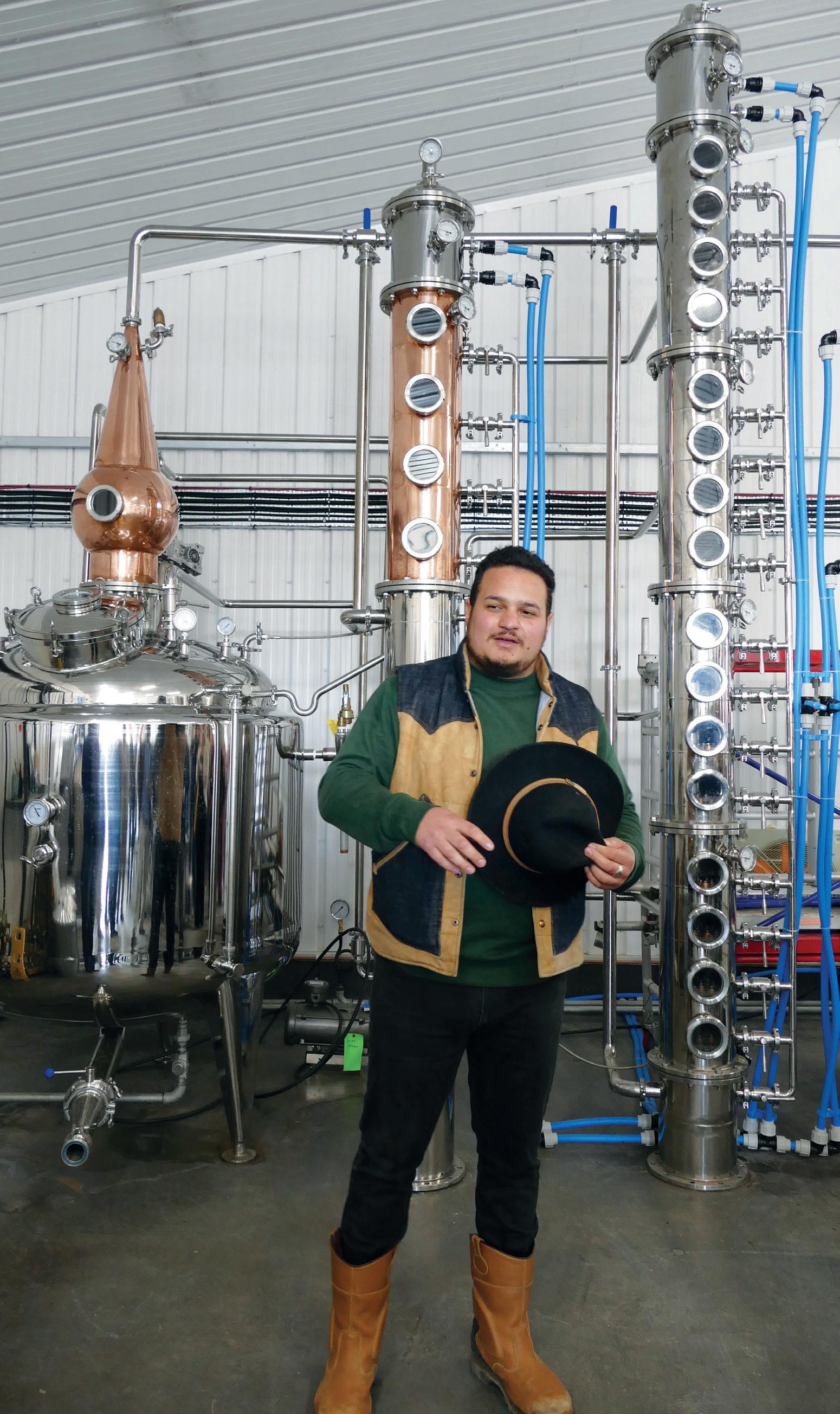
Sebastian started his career as an officer in the Royal Navy and was medically discharged after six years. Those years have given him a passion for life and a spirit of adventure (he even tells a tale about pirates). Both of these qualities he would need in abundance when many years later he decided to launch Pleasant Land Distillery, based in Ashford Kent.
After life in the Navy Sebastian applied for an apprenticeship with Liberty wines. He gained the WSETDip and winemaking experience all over the world. Working at wineries in both Austria and South Africa gave Sebastian an incredible depth of insight into the wine industry and the vastly different wines that can be made but it was a chance encounter in South Africa that eventually led him to setting up Pleasant Land Distillery on a farm in the Kent countryside.
He met winery apprentice Johann Monig who was also head distiller at Wilderer. After a day in the winery Sebastian and Johann would take the waste grape skins and would distil at night creating a whole new product in the evening. Although Sebastian remained in the wine trade for a while a fire had been lit and the creativity of distilling was in his blood. After achieving his distilling qualifications, he decided to embrace a new challenge. Sebastian said: “Like most successful businesses, we started with a healthy injection of cash and confidence.”
In the case of Pleasant Land Distillery both of these came from Sebastian’s father Charles. It is quite heart warming to note how each member of this hardworking family gives credit to each other and how through team work they have managed to accomplish so much. The business originally started with Sebastian working long and lonely hours but has now grown to 6 members of staff.
On 16 April 2022 the first liquid began to flow at Pleasant Land Distillery. Sebastian was heavily influenced by those days in South Africa that made use of a waste product and that really shows because there is so little waste at this sustainable distillery. Solar energy
provides the electricity and the stills are run using a biomass boiler, the heat produced in the distilling process is then captured and also put to use. “It is a closed loop system,” explained Sebastian. Waste management takes several interesting forms such as black soldier fly larvae growth, which literally eat most forms of organic matter, Vermicomposting, using worms to break down waste quickly and Bokashi fermentation, a closed anaerobic system that creates liquid fertiliser from organic matter.
It has been an amazing first year for the young business, something that Sebastian pointed out during his speech at the celebration that marked the exact date of the production of the first liquid on site. At the gathering, which was held in a 15th century Kent Peg barn at Bank Farm he extended his “thanks and gratitude for support over a critical first year in business.”
Acknowledging that the journey has not always been a smooth one Sebastian was smiling as he said: “Thanks to the farmers who have sheltered us and grown our products and helped with our tractor skills, working together with trust and compassion.”
Cash flow is vital to any business and whilst “the plan was to create fruit spirits and whisky, inspired by the terroir of Kent, using 100% renewable energy,” it was vital that the business could sustain itself at the same time as promoting planet sustaining practices. “The best way for a distiller to do that is by distilling. Making the most of my network, expertise, outstanding equipment and small amount of distilling notoriety, we started making spirits for other people. This has gone from strength to strength and we have become a stationary Bouilleur du Cru with a growing reputation for distilling excellent brandies and marc from grapes, skins and ciders,” said Sebastian
Speaking of the English and Welsh wine industry Henry Sugden from Defined Wine said: “Our waste can create a new product, many vineyards can benefit by adding diversity to their product range and also boost their sustainable credentials simultaneously.” Henry
also pointed to other uses for winery waste and the possibilities for red grape skins to be used in the pharmaceutical industry for the production of resveratrol.
With his international experience as a winemaker, Sebastian is uniquely placed to provide vineyards the benefit of his creativity offering a bespoke service from conception, recipe creation, production, bottling, labelling right through to delivery. In effect he is literally in a position to bottle your ideas.
Sebastian explained some of the services he can offer to wineries:
◆ Distillation of grape skins
◆ Fermentation and distillation of Piquet
◆ New product development and production of gins/vodkas/vermouths/brandies and liqueurs
◆ Cask selection, filling and maturation
◆ Distillation of year 1/2 grape harvests
◆ Distillation of low pH/underripe grapes
◆ Distillation of rebeche and hard pressing
◆ Distillation of lees
◆ Creation of ratafias and marcs
◆ Contract bottling of spirits.
“If it has alcohol, we can make it,” Sebastian said. “This adds a branded wine adjacent product created from things that would otherwise go to waste. This can be sold through existing sales channels generating further revenue,” he added.
Of course vineyards produce grapes and the idea of turning a waste product into another delicious creation cannot be underestimated but “there are so many levels to creativity,” said Sebastian. “Between distillations of English Chardonnay, Pinot Noir grape skins, ciders, regeneratively farmed wheat and of course, Jersey Royals, we made time for some small batches of single vintage Eaux de Vie made from exceptional-quality local damsons, Victoria plums, apricots and Conference pears… we are looking forward to the next fruit season in the Garden of England.” This is a reminder that many vineyards often have other fruit trees on their land that could be put to a creative use by Sebastian and his team.












I read a tweet from a fellow wine writer the other day. He is someone I very much respect in our industry and he said, ‘Why isn’t the trade – and consumers – more excited about English wine? Is it dull? Inconsistent? Not as good as we think?’
Of course, this is the point of Twitter – say something contentious and then sit back and watch the pile-in. He knows he is poking a hornet’s nest, which is his point.
We all need to talk more, engage consumers more, stop hiding our light under a bushel, and sing about our very



best wines. As you know, faithful reader, I have been doing this for decades, not least in this wonderful magazine, but the main issue here is that while we all have fantastic stories, we need to tell them more often and with a lot more conviction. Stand out from the crowd, show your personality, and be brave – these are topics I have covered on this page over the years. Some more established brands work hard to differentiate themselves from the pack, while others refuse to conform. Some buck the trend, others look to the future, and to my mind, the most exciting innovators in our business enjoy pushing the envelope. Many years ago, I remember an Aussie winemaker telling me he had to run fast to stand still. I could not agree more. You only have to look to one of the most reliable














and sagacious personalities in our industry, Bob Lindo, at Camel Valley, to see how much effort this family puts in to forging forward with unrelenting energy and commitment presenting calm, controlled, and sophisticated wines. As a Hollywood actor once said, it takes a lot of sweat to look this laid back.
This month’s theme looks at an established brand, a relative newcomer, and also a bright and shiny toddler to give inspiration to all wineries in our land to go a little bit further than might feel comfortable in the hope that communicators and consumers alike recognise the skills involved, take the plunge, buy a bottle and, crucially, come back for more. Pushing the envelope doesn’t mean taking risks but performing at your very best, plus a little more.
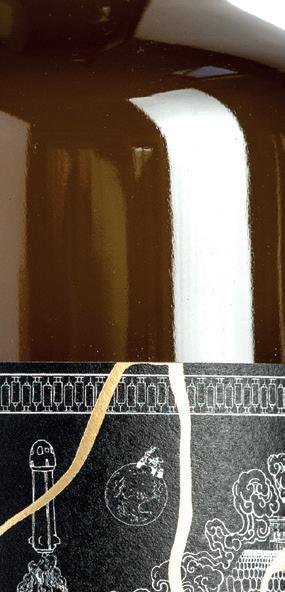

£22.00 www.castlewoodvineyard.co.uk
£26.00 www.forestwines.com www.bintwo.com




We are three vintages into the Artefact story, and while I have yet to taste the 2019 or 2020, I can tell you that this new 2021 release has more attitude than a pallet of run-of-the-mill Bacchus found elsewhere. Born of restless experimentation (an ‘envelope-pushing’ synonym), Artefact comes from a small plot of Bacchus clone GF1 vines lying west of block HH on the Castlewood property.
The grapes were crushed and destemmed into four 300 litre Tuscan amphorae. Twenty-one days of skin maceration was followed by indigenous fermentation and 11 months of lees contact. It was then racked into a stainless steel tank for a final three months. The label tells the story of the vintage, with curious etchings of the world rebuilding after the pandemic, following the

Japanese art style of kintsugi! See for yourself the vaccine rollout, the bike crashes at the Tour de France, lorries backed up outside Dover, the sad passing of Prince Philip, the ice cap melting, the Mars rover, and Jeff Bezos’ space race!
The bottle alone is arresting and unforgettable, but the wine… Orange blossom and blackthorn crowd the palate, and a bizarre, marzipanny texture is followed by a brutally dry finish. While the socks-and-sandals brigade will go nuts at the ancient and modern worthiness of this experience and, admittedly, this might have been a step too far for my innocent and unsullied palate, I bloody love it. It is a Tarantino of wines – with an extrovert, audacious, devil-may-care attitude, and it works. So I say to creators Rob Corbett and Luke Harbor – ‘the envelope has been pushed and pushed well.’
£54.00 www.wistonestate.com
£19.95 www.alburyvineyard.com

We all know by now that 2018 was a terrific vintage in the UK. It gave our industry a large and ripe harvest – the magic dice of ingredients for success.
This wine is one of the many successes in 2018, but it is more than that. It was whole bunch-pressed into old French oak barrels for fermentation and nine months later bottled and lees-aged for 42 months. A blend of 80% Pinot Noir and 20% Pinot Meunier, the resulting wine is one of the most quietly disruptive and punkish rosés on the market. Yes, demure, elegant, and sophisticated Wiston has made a rock ‘n’ roll rosé with a dark colour and a powerful, rich, and full palate.



This vinous and combative wine stands tall in a world of pale, weedy, undernourished wines. It challenges the palate, demands great food, and would only like to be opened for people with sufficient Wine IQ to cope with its exquisite flavours. This is not an envelope-pushing wine; it is an envelope-shredding wine. Its best years are ahead of it because it has serious potential thanks to the acid engine underpinning the glorious bittersweet red berry fruit. I love this wine, and I hope other wineries take note because this style of rosé will bring droves of wine-savvy people to their knees.


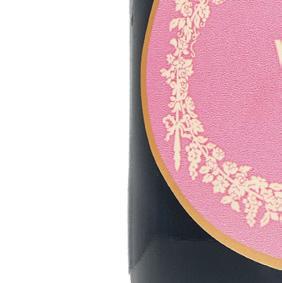



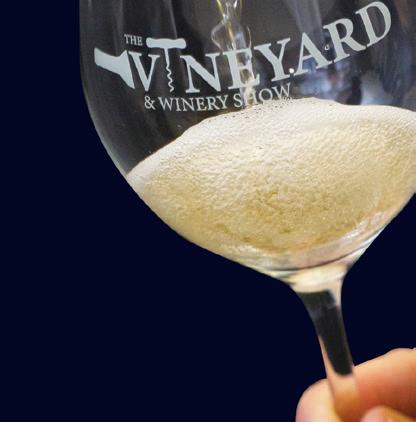




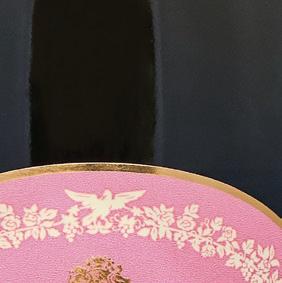





I am a massive fan of this wine, and we featured the 2017 vintage four years ago on this very page. So why is this wine, one that people might think is a conformer and not a rebel, part of this trio? The answer is that along with the neat new label tweaks, there ought to be a warning.


This is not an easy drink. It is not an innocent glugger. It is not a wine for beginners. While it starts with a hint of raspberry coulis on the nose, and a silkysmooth texture follows, the finish here involves so much tension and drama that you must sign a disclaimer before you are allowed to pour yourself a glass. The super-bracing herbal finish makes this a roller-coaster ride of excitement that puts it at the top of the English Rosé league table.


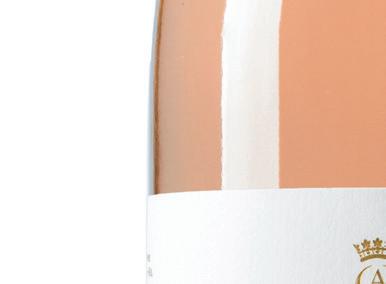
In addition, this wine has supreme ninja skills with all manner of global cuisine. Every Michelin star outfit in the UK take note. Silent Pool is a silent assassin, scared of no one and always on point. And when you take your parochial hat off and stare out at the big bad world, nothing changes – this is a sensational wine on a world stage. Envelope obliteration complete.

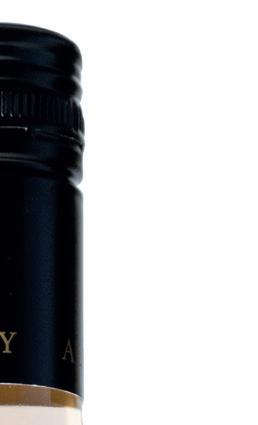
design, develop, produce and decorate glasses and barware for the world’s leading drinks brands.














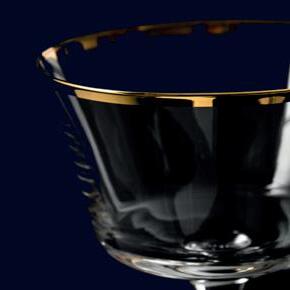

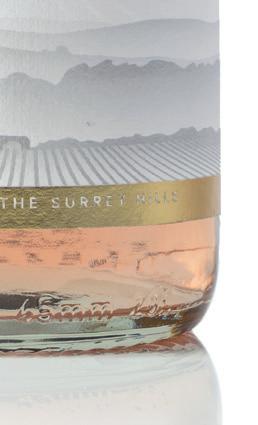





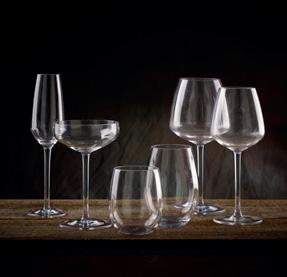

A knowledge of the past helps us move into the future. This was evident as Vineyard visited Sandridge Barton, the home of Sharpham Wine.
The name Sharpham Wine will be familiar to many within the sphere of English Wine. Indeed, Sharpham Wines have been produced on the banks of the River Dart since the late 1980’s winning many awards. However, in 2020 Sharpham Wine moved across the river Dart to a new home on the Sandridge Barton Estate. The links between Sandridge Barton and Sharpham Wine had been forged a decade before the move when Sandridge Barton became a supplier of grapes to Sharpham Wines. Now with this exciting new move the businesses will grow together and the metaphorical inflorescences have started to flower.
Arriving at Sandridge Barton brings to mind the works of Kenneth Grahame. In his well loved book the Wind in the Willows he wrote: “The call of lush meadow grass, wet orchards, warm, insect haunted ponds, of browsing cattle, of haymaking and all the farm buildings clustering round the House of the Perfect Eaves…a hungry longing to hear the cuckoo’s note again.”
The cuckoo’s note is a pleasant accompaniment to the entire visit at Sandridge Barton. An increasingly rare sound in our countryside it is an indication of the sensitivity to the surroundings that have been shown at this vineyard and winery situated on the slopes of the River Dart, Devon.
Sandridge Barton is an estate of about 450 acres with a farming history dating back 1,000 years, now being in the ownership of the Moon
family. A decade ago Sandridge Barton had 25 acres of vines and this number has now increased to 33 acres. Duncan Schwab CEO and Head Winemaker revealed: “In the next few months this figure will increase to 40 acres.”
The new plantings at the end of May will include Pinot Noir Précoce, Madeleine Angevine and Bacchus in a field that already has the name Reservoir View. Quite frankly the term view falls a long way short of the stunning scenery that surrounds Sandridge Barton.
The expansion of the vineyard has been overseen by Alex Davidson and his team “which varies in number from six to seven depending on the season,” he explained. Alex has been the vineyard manager at Sandridge Barton since 2012. During his long career in viticulture (35 years) he has worked across the South West. Starting at a small vineyard on the banks of the River Fowey Alex then moved to Camel Valley in Cornwall. At Camel Valley he gained experience of the whole industry “I even worked in the shop,” he said.
In 2021 vines were planted in what has always been known as Stoney Field. Stoney Field proved true to its name, “it took three weeks to remove stones from the surface in preparation before the team at VineWorks could plant the Pinot Noir and Chardonnay vines,” Duncan explained. “After we, as a team, had spent three weeks with four people, a tractor and a trailer, clearing stones by hand a local farmer said ‘I have got a stone picker,’” Duncan said laughing. Even after all

this preparation, planting took far longer than would normally be expected. The reason for this is that Stoney Field is part of a limestone ridge which runs from Torbay and Berry head and finishes under Sandridge Barton. It is a geological anomaly in the Devon area and it is still possible to find ammonite fossils in Stoney field. The stones that have been cleared have been put to good use on the estate for pathways and wall building and are also used under the vines to provide a source of warmth, clear evidence that at Sandridge Barton every effort is taken to make the most of available natural resources ensuring these are not wasted or neglected.
Limestone is linked to some of the world’s great viticultural regions such as Burgundy, Champagne and the Rhone but is not common in the UK so its discovery on the banks of the river Dart is great news for English wine lovers.
On other parts of the Sandridge Barton Estate the soil is very iron rich and a Scott Henry system has been adapted for the vines here. The system can leave a wall of canopy which brings disease pressure so Alex decided to adapt the system slightly to best fit the environmental conditions and the soil. “We put down three canes instead of four and punched some holes in the canopy to relieve disease pressure and increase air flow,” he explained. This adapted system is nicknamed “the half Scott,” by Alex and the vineyard team. <<
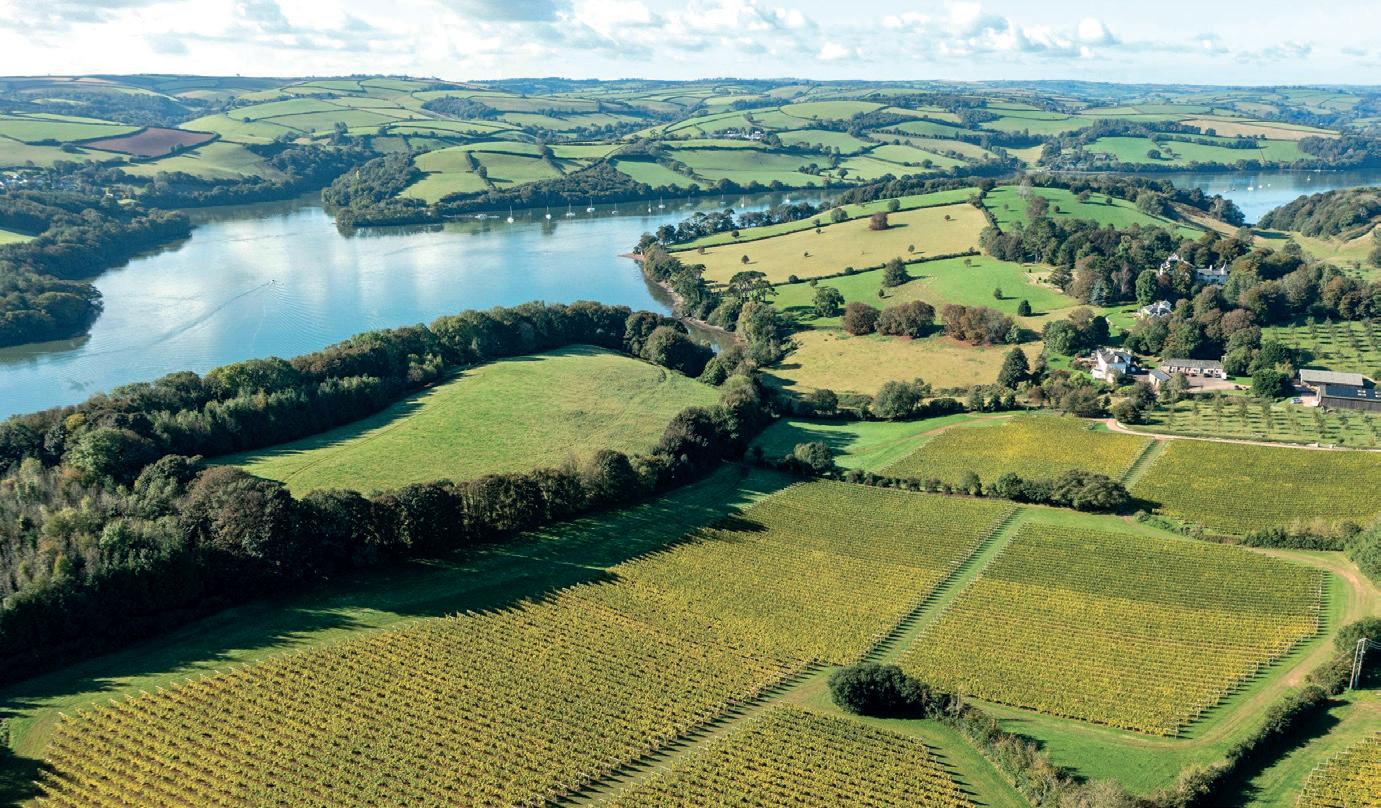


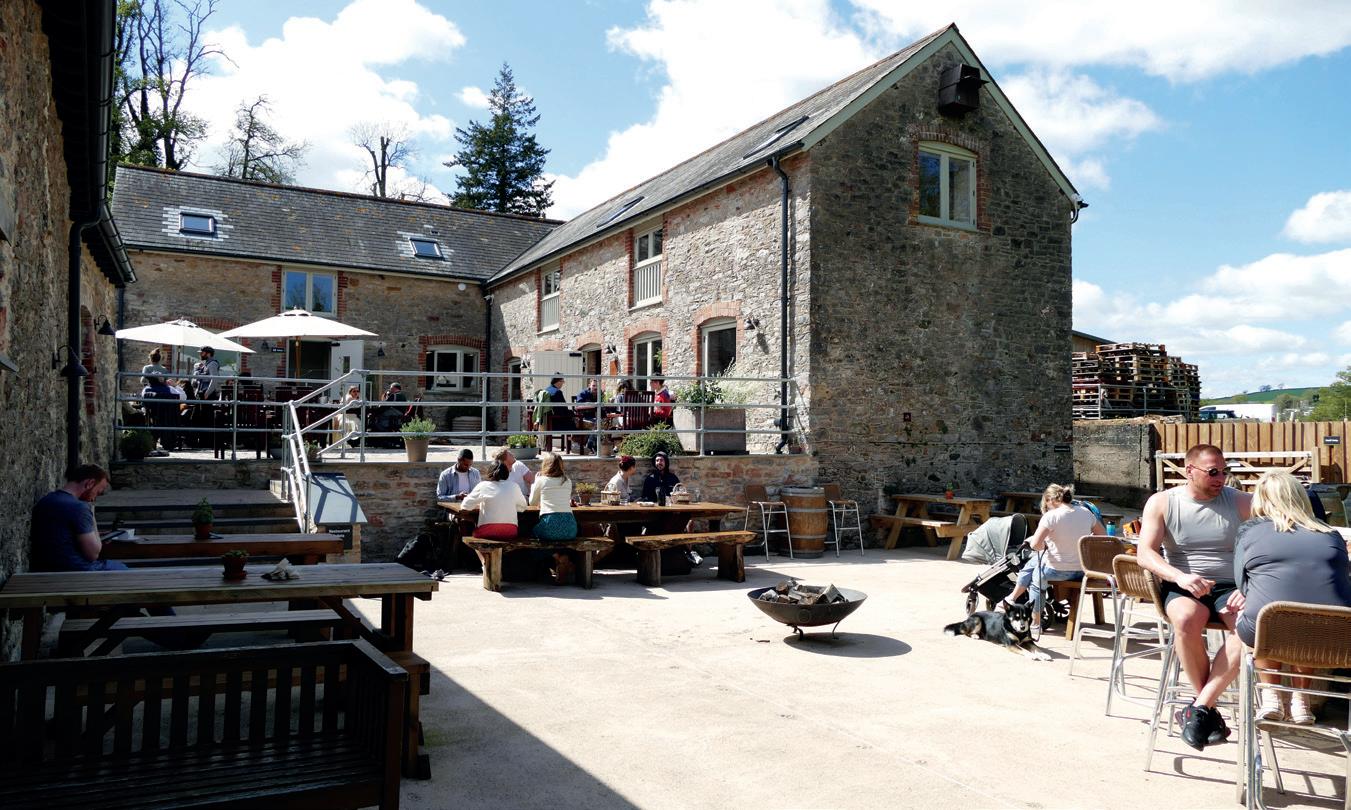
<<
The growing system for the limestone soil incorporates a double guyot “but if the vines are out of balance and start to produce internodal lengths of seven or eight inches then there is the ability to put more canes down if necessary,” said Duncan.
The system has been raised in height to accommodate Easy Care sheep (a breed that can be found on Dartmoor) which will be introduced into the Stoney Field site as part of the ever increasing efforts to produce wines in a sustainable way. Working with nature is an ongoing process and the move to the Sandridge Barton Estate has meant that this process can develop further.
Stoney Field contains a trial area of around half an acre and students on regenerative agriculture courses at Dartington college are working with the vineyard in these trial plots. One interesting technique is the application of a folic acid compound which utilises a waste product from the coal industry and provides beneficial compounds such as nitrogen, phosphorus and potash. The ability to explore new areas of regenerative viticulture has been made possible by the amalgamation of Sharpham Wines and Sandridge Barton on one site.

Speaking about the vineyard Duncan
explained that in Stoney Field there are six clones of Pinot Noir and five clones of chardonnay. There are burgundy and sparkling wine clones and the F105 clone which is a sparkling wine clone that Duncan said is also capable of making an amazing red.
Diversity is a point of distinction at Sandridge Barton. Duncan explained: “It is nice to showcase what you can achieve with Madeleine Angevine as a single grape variety and yet create four or five different styles of wine from it.” These wines include the Dart Valley Release; Sharpham Estate Selection, which goes well with seafood, a speciality of the area; New Release; Col Fondo; and a natural wine called Tipley Hill. “As winemakers we really enjoy pushing the boundaries a little bit, starting to make more wines that have not been messed about with in the winery and retaining those amazing

flavours. As soon as you start putting sulphur in and filtering you start changing those wines that are alive almost and dumb them down a little, so by unfiltering and unfining you have more fruit flavours. Using less sulphur also allows those fruit flavours to become incredible.”
The river Dart was a central part of the wines of Sharpham and that has continued with the move to the Sandridge Barton Estate. “We make wines in our locality from vines grown on the River Dart and we sell about 80% locally,” explained Duncan. Surrounded by tourist destinations including Salcombe, Dartmouth, Kingsbridge and Totnes there are plenty of places for food and wine lovers to visit. “Our remit is to sell to anyone who has a licence locally, in France the thought of drinking wine from another region would be unheard of and that is what we are trying to achieve,” Duncan added.
It is nice to showcase what you can achieve with Madeleine Angevine as a single grape variety and yet create four or five different styles of wine from it



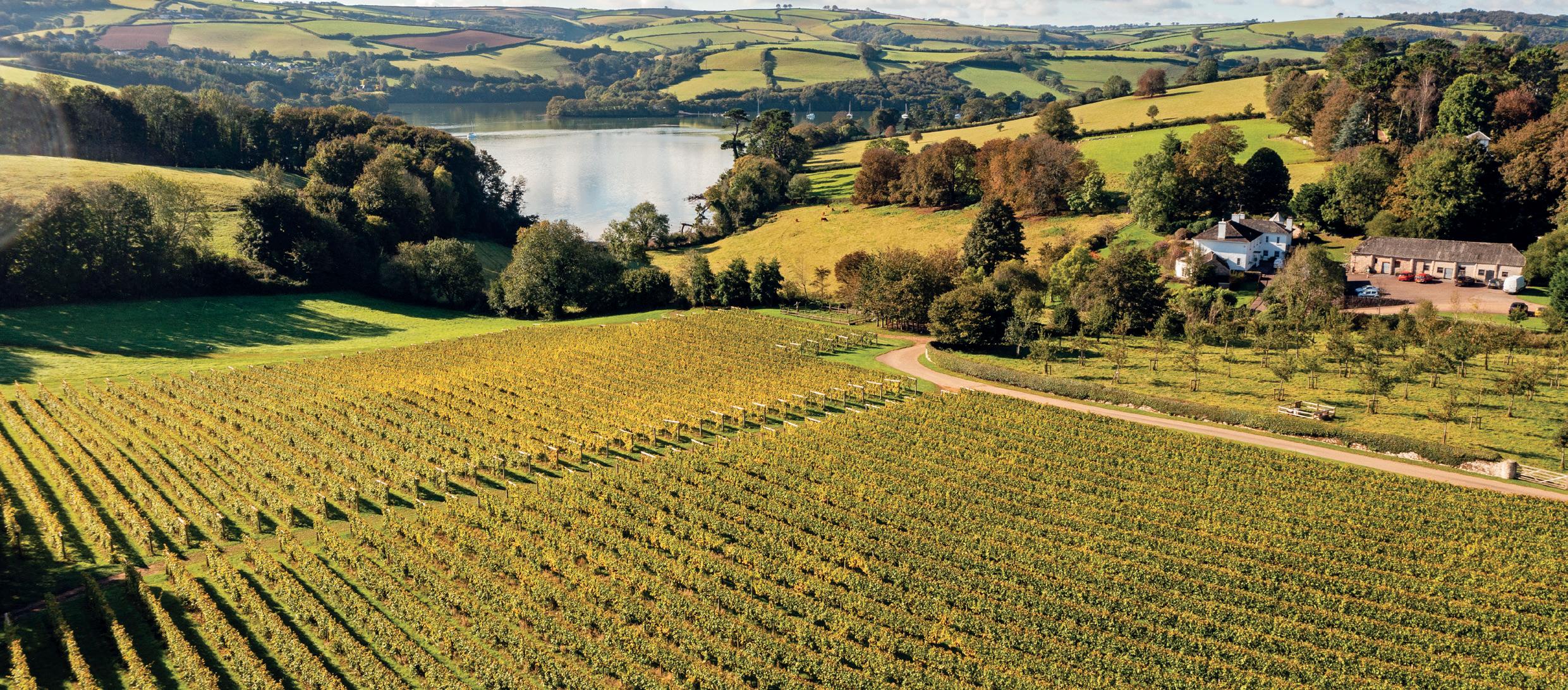
The south west tends to get a warmer longer finish time
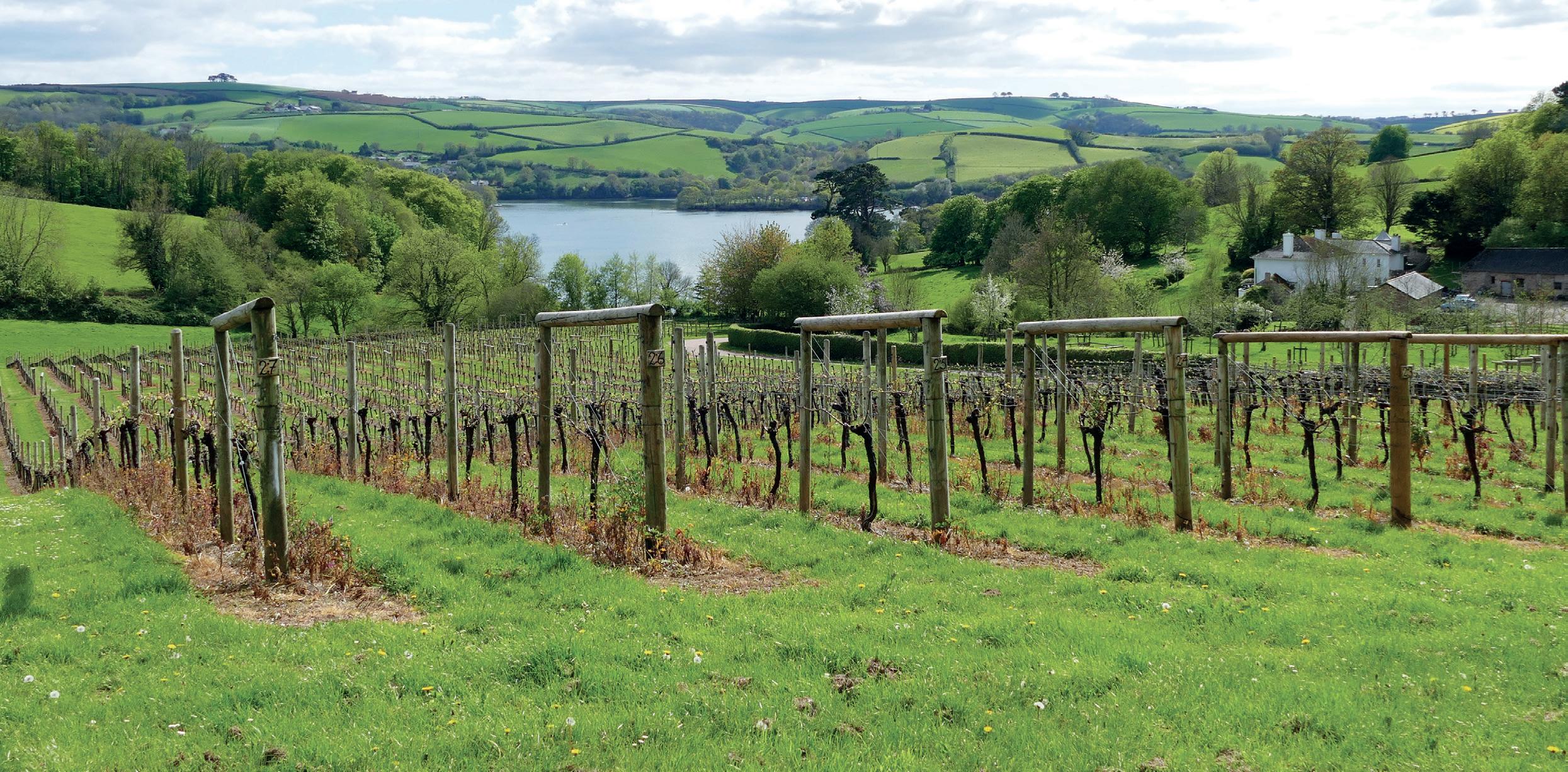
<<
Duncan has passed his love of the area onto his daughter. The natural wine range is named Don’t Feed The Ponies and was inspired by a campaign that started when Duncan was taking his daughter Sienna to school across the moors. They saw at the side of the road several dead ponies and foals that had been lured too close to traffic by people who were taking grass cuttings up onto the moors for the ponies to feed from. In conjunction with other school children from Widdecombe, Sienna created a poster that can be seen across Dartmoor with its message ‘Don’t Feed the Ponies’. The wines created for this range include the minimal intervention orange wine ‘Little Bee 2021’ made from Pinot Gris and using indigenous yeast.
Annually 30,000 bottles of the Dart Valley Reserve are produced “that is the house wine in a lot of restaurants. It is well known in the area and has a great reputation,” Duncan said. It is Madeleine Angevine sometimes with additions of Bacchus or Pinot Blanc. “For us Madeleine Angevine has been the banker if you like” said Duncan. The Dart Valley reserve is made from free run and pressed juice. Around 10% of the blend spends its life in oak and has a touch of residual sugar “it is an easy drinking wine suitable for drinking on its own or with food,” added Duncan.
There are plans for reserve wines to be released “every year there is a barrel of Pinot Noir that you taste and just think wow, but it needs another year, so that will be put aside and eventually form a Sandridge Barton Range.” That journey has already started and Reserve Wines will be released soon. The first of these releases will be a Blanc de Noirs 2020 with 0g dosage followed by an unfined and unfiltered Pinot Noir of which 1,000
bottles were produced along with a Bacchus.
On the day of our visit Vineyard magazine were delighted to be given a sneak preview of these exciting new wines. Visitors to the WineGB stand at the London Wine Fair were also treated to a preview of the Pinot Noir.
The tidal river brings climate benefits to the vines that grow in this part of the south west. “There are not really late or early frosts and there is the opportunity of extended hang time for those varieties that need it,” explained Duncan. “The south east seems to be hotter during the actual growing season but the south west tends to get a warmer longer finish time,” he added.
The influence of climate change has been quite obvious and Duncan explained how in the early years of his experience in the south west Pinot Noir would fully ripen “maybe twice in ten years but now the Pinot Noir Précoce ripens every year. Even in 2021, we made amazing red from Pinot Noir Précoce but all the rest of the Pinot Noir had to go into sparkling.”
The 2022 harvest was very special at Sandridge Barton. “For me 2022 was the perfect year in the vineyard,” explained Alex. “Usually we are able to pick around eight tonnes of fruit a day but on just one day in 2022, 24 pickers were able to pick 11 tonnes of quality grapes,” continued Alex. Confirming this assessment of the 2022 harvest Duncan added: “We usually make 6,000 bottles of red but in 2022 we produced 22,000 bottles of red.”
Duncan, who is a trained surveyor, was born in Africa and spent some of his early years in the Middle East. He started work at Sharpham Wine in 1992. His father had planted a small vineyard in England in the early 1980’s (despite the general opinion that this was not the wisest course of action) and employed Duncan to survey the steep south facing field on the banks of the river Fowey. To his surprise Duncan found the whole process of the establishment and maintenance of a vineyard in England fascinating and has spent many years on what he called “a steep learning curve.” Duncan also pointed out that there are “not generations of history,” within viticulture in the UK but three decades of experience gave Duncan the ability to see the potential of the redundant farm buildings at Sandridge Barton which have subsequently become the visitor centre, café and Circa (a quite exquisite restaurant). In June 2022 Oz Clarke officially opened the new facilities at Sandridge Barton.
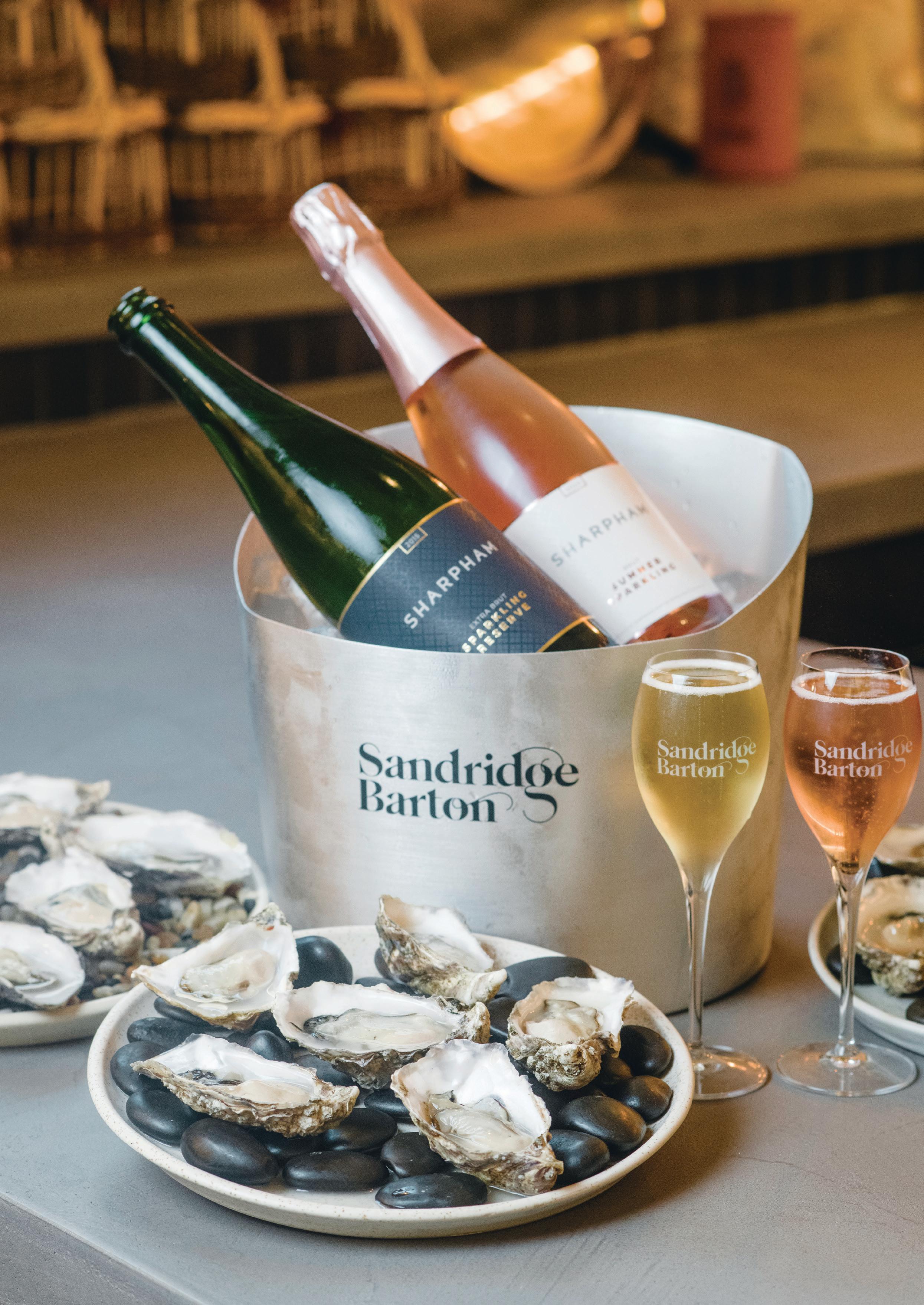
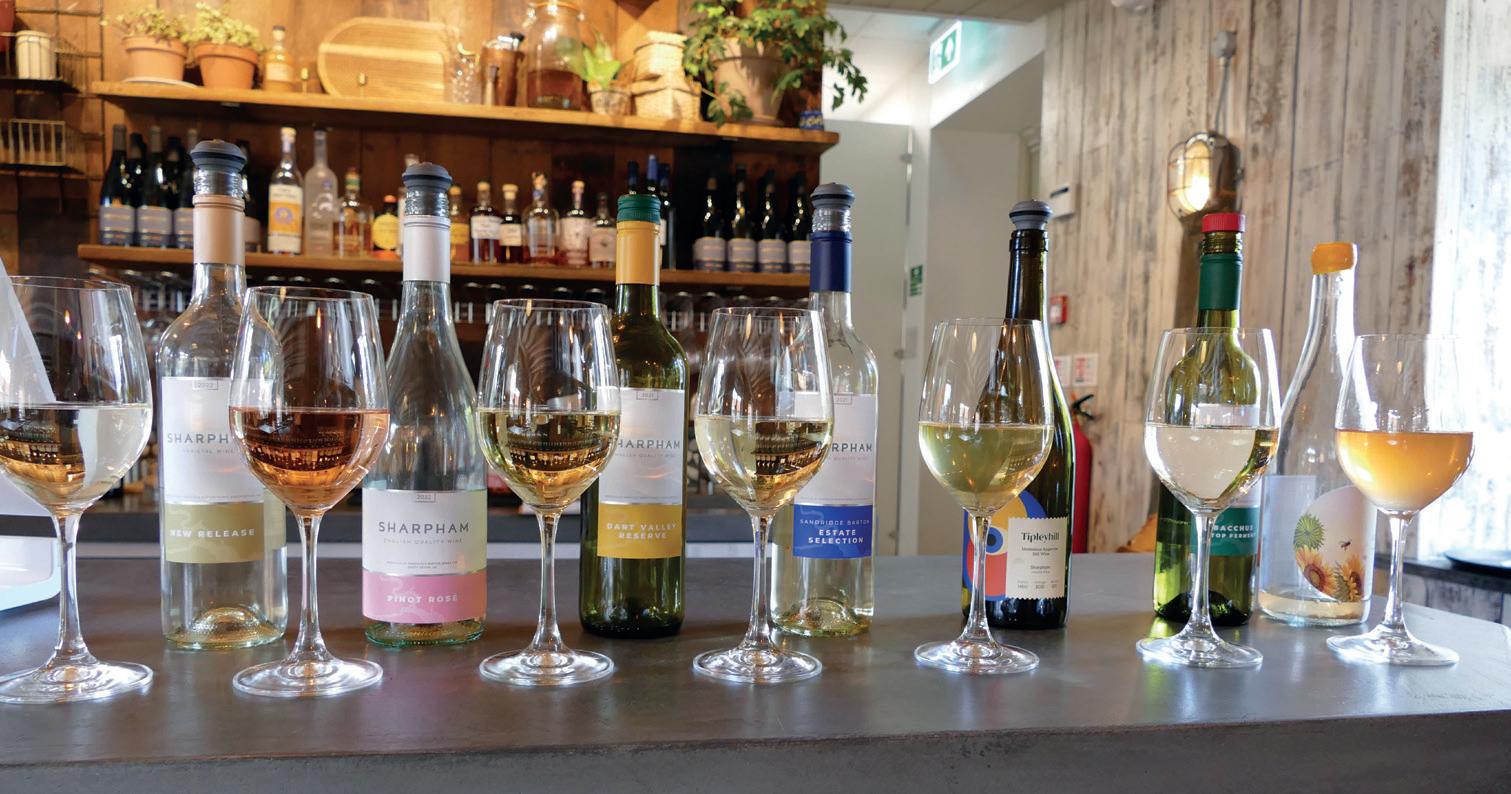

The visitor experience at Sandridge Barton is extensive and during visitor season there are two tours a day of the winery and vineyard. There were 10,000 visitors in 2022 and although this is not as many visitors as Sharpham received in their old location this number is sure to increase as word spreads that Sandridge Barton is the new home of Sharpham wine. As visitors tell their friends and family about the inclusive experience that encourages children to look for fossils and wildlife, allows adults to sample the amazing wines and gives the whole party an entertaining and enjoyable outdoor experience the reputation of Sandridge Barton as a tourist destination will develop. The reason that people take vineyard tours varies and Duncan said: “The experience in the vineyard is as important as the experience in the winery.” With this in mind
there are plans to improve the vineyard experiences in terms of creating a Vineyard Safari which allows the visitor to see the vines and then taste the single variety wines that come from those vines so they feel a connection to the story of the wines. “On tours the under forties are often looking for something different and want to be challenged on the palate,” said Charlie Brown an assistant winemaker. The Don’t Feed the Ponies Range is one way that this is being achieved but Sharpham has a history of exploring the challenging and different. Many years ago (at their previous location) using polytunnels and a lot of patience Sharpham actually managed to produce a Cabernet Sauvignon, Merlot wine blend of which there are just a few bottles remaining. This nicely illustrates how imaginative viticulture can be in the UK; something that
the industry should treasure and preserve.
At Sandridge Barton there is an onsite shop selling local produce including locally roasted coffee, candles, grow your own herb pots and an extensive selection of cheese alongside the extensive collection of wines. One of the highlights of any vineyard and winery experience is the ability to sample the wines. At Sandridge Barton this is beautifully presented in the form of tasting baskets in the café/bar as well as in the restaurant.
The atmosphere at Circa is refined but relaxed and the staff are friendly and welcoming – even the plants in the restaurant were home grown by Mia who works in there. The menu is all about local food cooked well and is designed to create a shared experience. Kate the restaurant manager and her team have really captured the essence of developing strong family
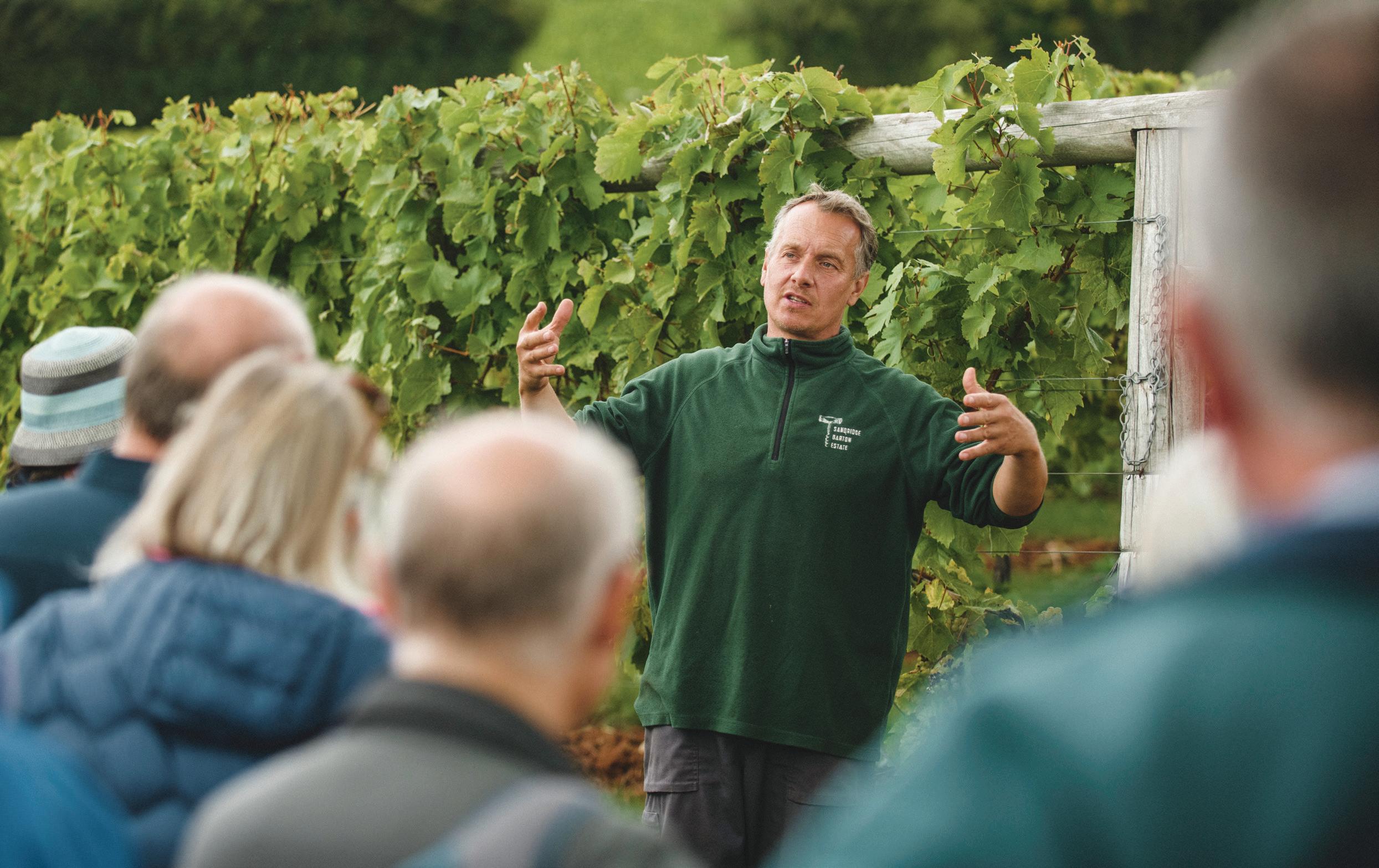
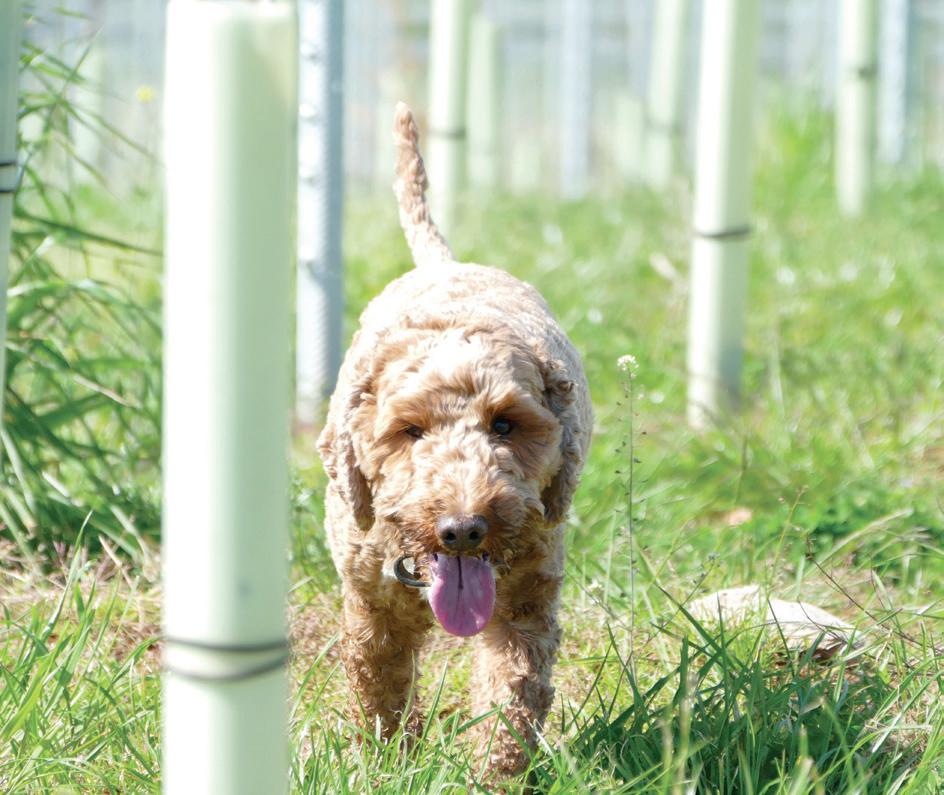
relationships through the unique joy that comes from the sharing of good food accompanied by good wine.
Whilst in the restaurant I reflected that throughout history strong societies such as the Egyptians, Greeks and the Romans placed high value on shared food experiences and the pandemic and subsequent lockdowns have proved to many just how precious these things are. All the wines served at Circa are produced on the estate which considering the choice available is astonishing.
On the day of our visit there was a very large party of diners who had decided to each have a glass of something different from the menu, a whim that most vineyards could not satisfy for such a large party but proved no challenge to the Circa team. With Sparkling, Rosé, White, Red and Natural wines there is something for every palate – even an estate produced sparkling cider is available (made using the same traditional method as sparkling wine) or sparkling elderflower made from wild estate elderflower (also made using the traditional method).
Sandridge Barton has wonderful accommodation available for visitors including The Boat House literally on the river Dart dating from the 18th Century and Sandridge Barton House, a six bedroomed Georgian Manor house. There is also Lower Well Farmhouse which is within sight of the visitor centre and winery.
The Winery at Sandridge Barton is purpose built and additionally there are offices and a conference space which will possibly be holding WSET classes in the future. The environment on the Sandridge Barton Estate which is the new home of Sharpham Wine will aid the education process by helping those enrolled on the courses to become fully immersed in the world of wine. Wine in the bottle can sometimes be divorced from the process of production and Duncan and his team work hard to establish this connection “ensuring the story of the wine justifies the purchase,” he said.



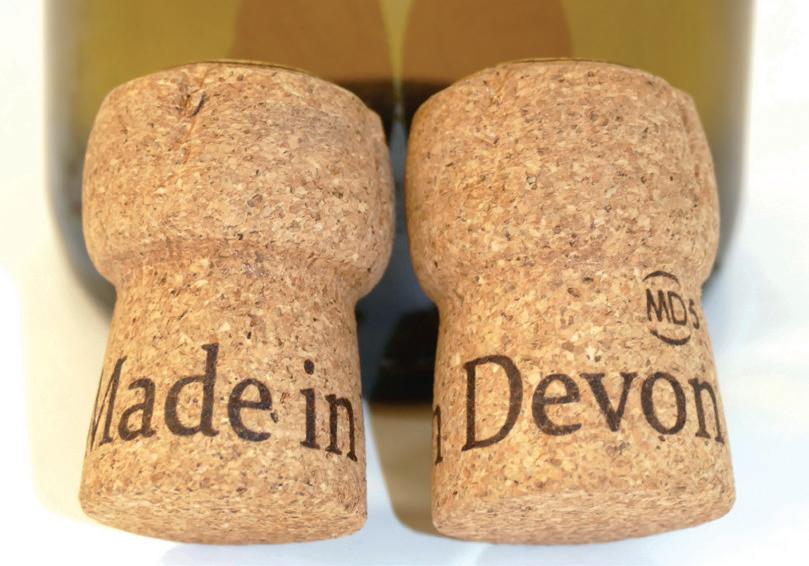
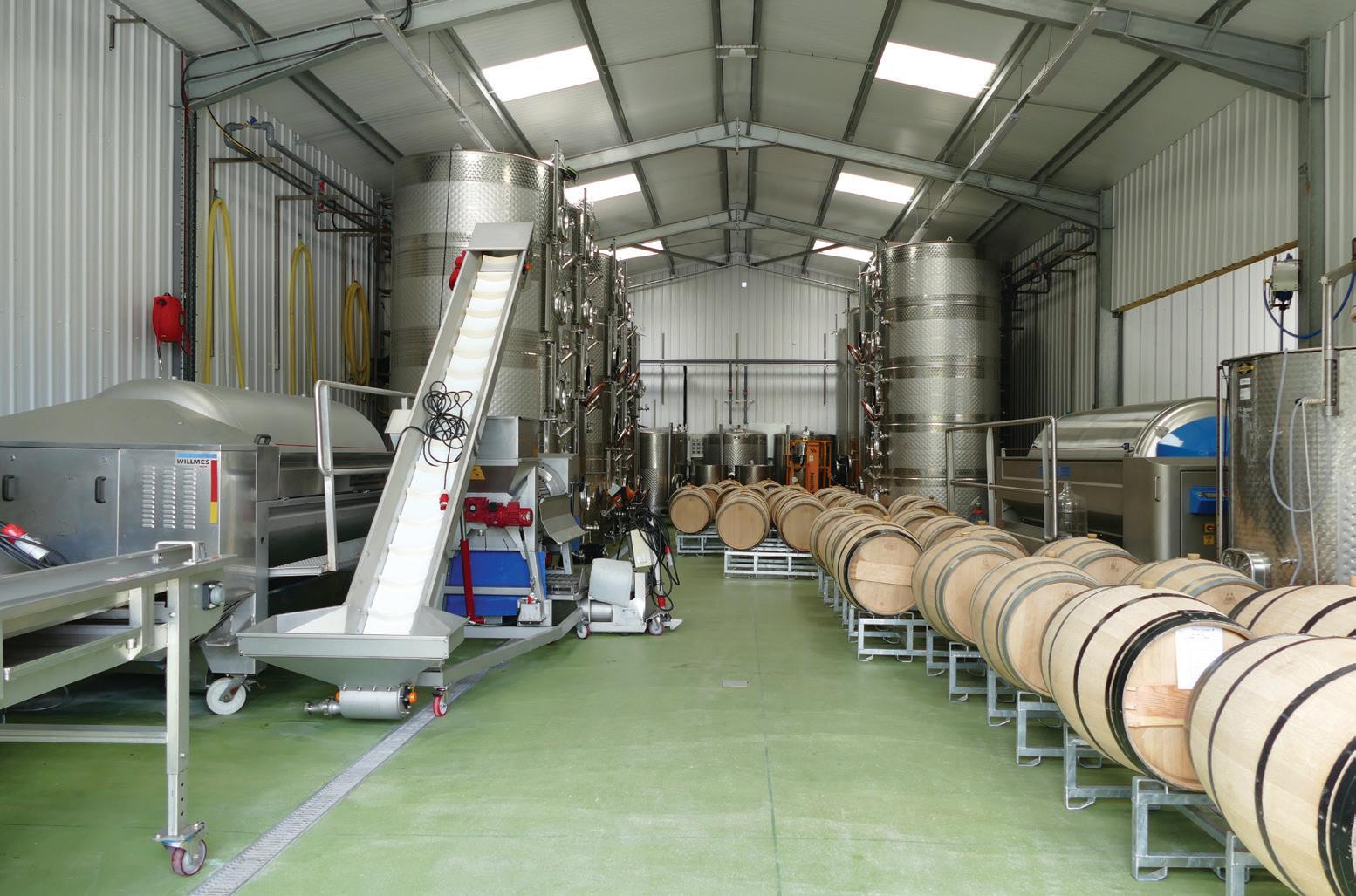
The fact that the winery is purpose built on site has been beneficial in many ways one of which is logistics. Sandridge Barton would previously have to move all the fruit from 25 acres across to the winery at Sharpham. “At harvest I would drive ten miles twice a day moving three tonnes of grapes each time,” explained Alex. Now with the purpose built winery on site, that fruit only has to travel a few hundred metres solving many a logistical headache at harvest.
The move to Sandridge Barton created an opportunity for the new winery to incorporate air source heat pumps, solar panels and rain water harvesting along with extra height
concrete panels in the barrel room to reduce the amount of cooling required to keep the room temperature steady. The vineyard is part of the SWGB scheme and the winery is also working to incorporate as many sustainable practices as possible.
On entry to the winery the compartmentalised stainless steel tanks are eye catching. The tanks were supplied by Vigo and Andy Pegman, Divisional Director of Vigo commented: “Duncan approached us with requirements for Speidel wine tanks for fermentation and a full temperature control system to cover chilling and heating, both at product and cellar level. We provided
Sandridge Barton with 83,000 litres of total tank capacity, a complete chilling system incorporating Quantor units for the white wine tanks, air-cooling for the barrel room, and a heating system for the red wine tanks. It was a privilege to work with Duncan and the Sandridge Barton team on this project.” The taller tanks that reach right to the ceiling hold 10,400 litres but are able to be separated into up to six compartments creating more possibilities for the winemaking team. The placement of a sorting table is also very noticeable. To improve quality at harvest two people stand on each side of the sorting table separating any sub standard fruit. Although

it seems that this would be a lengthy process when time is at a premium Duncan explained that the system allows a bin to be sorted quite quickly. The barrels are all second and third fill French oak Bordeaux, Duncan decided that new oak is too dominant for the wines he wants to make.
The wines that are produced at Sandridge Barton will continue to break new boundaries and will maintain the tradition of producing award winning wines that began decades ago at Sharpham. “Competitions are good for benchmarking,” said Paddy Gaunt a member of the winemaking team.
If the purpose built winery has provided
logistical benefits for the vineyard team it has also benefitted the winery team. Bottling was previously outsourced which could at times create issues with availability but the new bottling line supplied by Core equipment has given the winery team the freedom that comes with in house control and an ability to process 1,800 bottles an hour. The natural wines are bottled under cork with wax instead of foil. Duncan explained that it did not seem quite in keeping to put foil on a natural wine. This lead to a discussion about the difficulty of opening wax sealed wines. “We did try just leaving the wines without the seal but people kept saying we had forgotten something,” Duncan said with a smile.

The state of the art winery will undertake contract work for other local vineyards that share their ethos – local wines produced locally. This includes a producer of PIWI varieties which will be a new experience for the winemaking team that seems to thrive on the new, the experimental and the different.
At Sandridge Barton the new home of Sharpham Wine it feels like the past has been wrapped lovingly and with great care in a new blanket and that future growth has been made possible because of the roots put down decades ago with a connection that flows like the River Dart itself, moving but integral, changing but constant.




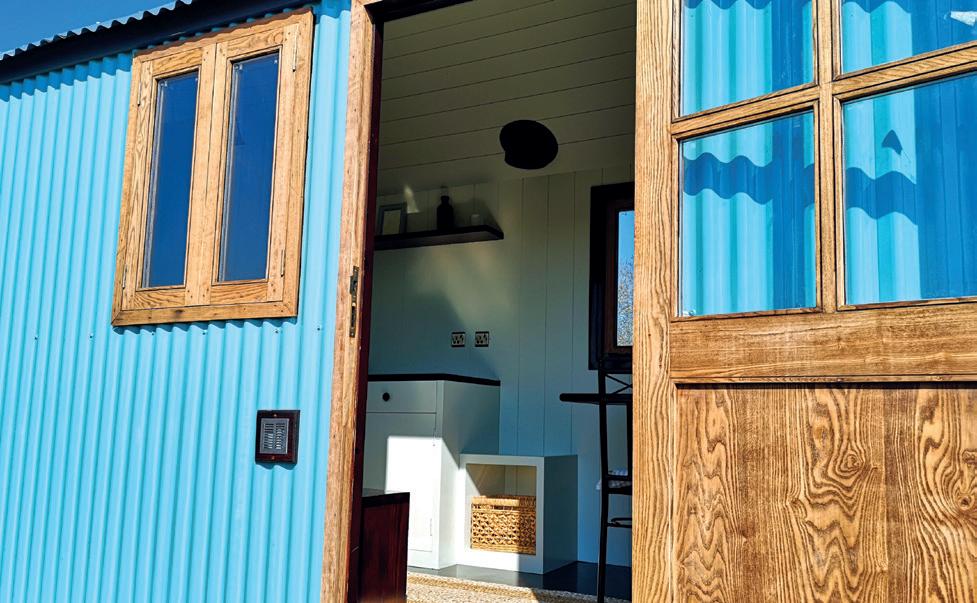

Into the Wild UK are shepherd hut manufacturers situated in the East Midlands. Owner, Phil Kerry and his son Jonny studied viticulture at Plumpton College in East Sussex. In 2007 three shepherd huts were placed within the family’s vineyard.
Unfortunately the vineyard suffered several years with no crop due to the late spring frosts and it became apparent at this time that far more income was being produced from the three shepherd huts than from the wine business. The feel of living amongst the vines is a wonderful experience especially during the summer months.
The shepherd huts have a kitchen, bathroom, double bed and small dining area that can sleep two people. Larger huts have pull out sides that can sleep four people. Some are made for severe winters and can be let out all year round. They include extra thick insulation, a space age thermal wrap, double glazing, thermostatically controlled heated pipe work and an insulated boiler housing. The huts are available with a wood burning stove.


Themed huts are available and include


images of vines, wine barrels or anything else that the customer desires.
Larger huts have pull out sides for extra space, some even have copper baths. A range of balconies are available.
◆ Shepherd huts start at £18,000 including VAT for a 12’ by 7’ model delivered flat pack for self-assembly.
◆ 18’ models with double bed, kitchen, bathroom and small dining area are £36,750 including VAT
◆ An all year super insulated version of the above is £39,900 including VAT.
At 60% occupancy each hut can earn £30,000. Some sites manage 100% occupancy and even have a waiting list. Most visitors are creatures of habit and will return on a regular basis.

From their vast knowledge of the industry, Into the Wild UK have developed a successful design for holiday purposes that is a realistic price and receive excellent reviews from all who stay in them. It is a lovely way to

encourage people to really connect with the vines and the wines that are made from them. A shepherd hut in the vineyard will generate direct income but will also enhance the visitor experience and encourage wine sales.
If shepherd huts are out of sight of neighbouring properties, public view and are safely accessed from the road, planning permission should not be an issue. This however can be an expensive and a lengthy process.
Into the Wild UK can offer an exemption licence which allow for up to five huts (plus tents) on an all-year-round basis without the need for formal planning permission. The process can take as little as three weeks. It is also an interesting fact that glamping sites operating under an exemption licence are more likely to be granted planning permission with future applications.


Other uses for shepherd huts in the vineyard include a wine tasting room, wine shop and a small winery.







After those darling buds of May (or thereabouts) have burst in your vineyard, the flowers will start to abscise and the new berries will go through a rapid period of development. New green shoots unfurl their leaves and photosynthesis begins in earnest. This means the plant can stop depending on the carbohydrates it stored in the previous season.
Managing your vines in the post-flowering period is crucial to grape quality and yield, not just in this season but also in the next. The hot topics are pruning and canopy management, but planning for pest and disease outbreaks as well as seasonal fertilisation is crucial at this time as the summer creeps towards us. There is no such thing as a textbook season these days, with annual variations in weather being the main source of unpredictability. Moreover, in the longer term, there are
warnings to consider – how will the changing climate affect life in the vineyard? Warmer temperatures in the growing season bring the vines’ growth cycle forward, but with it comes an increased risk from pests and disease pressures.
Pruning is an important tool for maintaining vine health and productivity. Successful pruning requires attention to bud fertility, vine vigour and the potential exposure of the grapes to sunlight. Your pruning programme will help to control the size of the vine and prevent overgrowth, where the fruit could be shaded and fail to reach its full potential in terms of quality. By removing excess shoots and canes, the plant’s energy is directed towards the most productive shoots, ensuring the bunches receive the optimal exposure to sunlight.

Pruning also plays an important role in disease management. Removing damaged wood reduces the risk of infection and prevents the spread of diseases like botrytis. There is also a yield control aspect. By removing excess buds, the number of grape clusters each vine produces is controlled which can help ensure consistent and high-quality yields from season to season.
“Size matters – the advantage of smaller vineyards lies in the time and focus that can be spent on pruning and bud management,” said co-owner of Fox & Fox at Mayfield in East Sussex, Jonica Fox. “It’s a luxury and workload we value. With a mix of older vines (20 years next year) and recently planted (2021/22) we have two goals:
“For the new vines, it’s all about gentle pruning and bud removal to balance top growth so that we help the vines develop

strong roots until they are fully established and cropping well. For the mature vines, everything we do is driven by ‘how good will the wines be’ – pruning to renew heads when needed but more often pruning to keep an open cane architecture, deliver a good crop and ensure wood ripening and productive buds for the following year.”
“We prune to slightly longer canes than we need, with kickers to mitigate frost risks. Once that risk is past, we rely on shoot selection to keep the fruit load within the vine’s capacity to support a healthy crop. Spending the time at the start of the season pays off; it’s all about delivering delicious fruit.”
This laser focus certainly appears to be paying dividends for sparkling wine producers Fox & Fox. To date, every wine they have released has won at least one gold medal over a spread of national and international competitions.
Alongside pruning and shoot thinning, leaf removal can also play an important role in vineyard management at this time of year. The leaf area index is a measurement of the total area of leaves per unit of ground area in a canopy. This important parameter is used in agronomy as a measure of the amount of photosynthetically active surface area available to the plant for taking in light, photosynthesis and transpiration.
The index is usually expressed as a dimensionless index, representing the ratio of total leaf area to the area of ground covered by the canopy. Although the optimum ratio varies slightly between cultivars, there seems to be a general consensus in the research that a rate of 1.5-2 is the golden zone – that is where the total area of leaves in the canopy is one and a half to twice the area of the ground covered by that canopy.
Leaf removal doesn’t just give the berries access to more light; it also improves air circulation and alleviates disease pressure. However, the timing and extent of the removal need to be carefully managed so that young grapes are not exposed to additional risks from late frosts at the beginning of the season or sunburn and dehydration as the summer progresses.
A study in the 2018-19 growing season in Bolgheri, Italy examined the effects of basal leaf removal on Cabernet Sauvignon

vine physiology, berry temperature and grape quality. This research suggested that moderate leaf removal encouraged higher photosynthesis levels in the remaining leaves and produced berries with higher sugar content.
After flowering, vines require nutrients to develop and ripen their fruit. “It is true that apart from losing crops to disease; the two limiting factors for yield are loss from frost damage and disappointing temperatures over the flowering period (‘Wimbledon weather factor’) and set” said agronomist at Agrii Julian Searle. “The fact is that the UK climate is still marginal for sustainable yield. The status of a few key nutrients for flowering fruit crops can make a difference and vines are no exception. Current research backs up known understanding – the importance of good levels of zinc, boron, nitrogen and calcium going into flowering and also during the period for next year's floral bud initiation, soon after flowering.”
Nitrogen is necessary to support shoot growth and fruit development. High levels of calcium in the fruit will give the berries a firmer flesh and reduce bunch shatter. Micronutrients
like zinc and boron are also vital for the development of healthy, flavourful grapes.
Mineral nutrition also helps to protect plants from environmental stress. They have physiological functions which help the plants to enhance their tolerance to an excess of heat or light, or drought conditions, for example, maintaining the stability of the yield under stressful conditions. However, Julian stressed nutrition is a big subject and the importance of some basic principles such as Liebeg’s Law of the Minimum; ensuring application of nutrients in a way that none becomes a limiting factor for optimal crop development.
The role of bio-stimulants is under research. “This is a huge subject area,” Julian explained, “but in particular amino acids, e.g. Physiocrop or Zonda, are being examined for their role in assisting quality and yield although this is not yet fully understood. Related materials such as peptides in ProAct are also being investigated. We are noting benefits from a combination of the two in the field though it is not fully quantified yet.” Agrii’s Vineyard Toolkit has unpacked the current state of knowledge and considers how a nutrient programme may be designed – see www.agrii.co.uk for tools and resources.
For the more adventurous or technologically inclined, remote sensing equipment like drones and satellites can be used to collect data on vineyard health and grape ripeness. In turn, this will inform vineyard management practices like fertilisation. Drones can give an incredibly detailed perspective, while satellite imaging is more broad brush. The data from these sources can help to pinpoint areas that need a nutrient boost, troubleshooting specific issues in a quick, cost-effective way – after the initial outlay of course.
JoJo’s Vineyard in the Chiltern Hills near Henley on Thames tags itself as ‘The Digital Vineyard’. They are just beginning their drone journey.
“We’ll be using robots and drones during the year to help understand if and how technology can play a practical role in vineyard management,” explains Ian Beecher-Jones, co-founder of JoJo’s. “We will be using the Triple A approach (acquire, analyse, apply), of acquiring data through a range of sensors, analysing that data to understand what it can and should be telling us and then most importantly how we can apply any remedial action practically in the vineyard. We’ll be looking at bunch counting and yield forecasting in the first instance, and comparing that information to our soil type, canopy density and vine health during the year. Crate-bycrate yield mapping at harvest will provide high-resolution feedback on what has happened during the season. We will compare this to our yield prediction models on a granular scale.”
Effective management of diseases and pests is critical to maintaining vineyard health and maximizing yield. Increasingly, vineyard managers are searching for integrated pest management strategies that minimize the use of pesticides and fungicides. So what options are available to you if you want to reduce your use of chemicals?
Animal and insect pests become particular nuisances when grapes are beginning to form and ripen. Unfortunately, some of our most common British birds turn into determined thieves when grapes are on offer! Blackbirds, starlings, thrushes and more will try to get in on the action. Netting, visual deterrents and audio bird scarers can all be employed to discourage them.
The easy availability of fruit sugars attracts a host of insect pests. Wasps are perhaps the most obvious culprit, damaging grapes by puncturing their skins to feed off the juice. Vineyard managers can use traps and bait stations to control wasp populations. A less common pest in the UK, but still to be found in the south east of England and South Wales, is the grapevine moth. Their larvae cause damage by feeding on the berries. Pheromone traps may be employed to monitor their populations.
In the post-flowering period, grapevines are susceptible to a range of diseases that can significantly impact fruit quality and overall vine health. Fungicides are the go-to remedy for these problems, and arguably the most effective solution, but there are alternatives for managing them without chemicals.
◆ Powdery mildew is a fungal disease that typically presents as a powdery white coating on the leaves. It can reduce levels of photosynthesis, stunt growth and affect fruit quality, causing off flavours in wine. Certain grape varieties may be more or less susceptible to infection; piwi varieties have been specifically crossed with disease tolerance in mind.

– Exposure to natural sunlight and good air movement can stop the disease from establishing. Organic growers may use sulphur as a preventative spray throughout the growing season and potassium bicarbonate as a cleaner.
◆ Botrytis is another fungus that strikes most vehemently in humid and wet conditions. It appears as grey mould on the berries leading to a reduced yield and poor fruit quality.
– To prevent the likelihood of a botrytis infection, canopy management is key so that air circulation is optimised. Feeding to avoid a boron deficiency can help the vine to produce strong pollen tubes on its flowers, a key entry point for a Botrytis infection in wet conditions.
◆ Downy mildew appears as yellow or brown leaf spots, leading to leaf drop along with a reduced yield of poor-quality fruit. Prevention is key, maintaining good vineyard hygiene and monitoring vines carefully for signs of infection. Most of the work to reduce the risk of downy mildew taking hold is therefore undertaken through vineyard hygiene practices in the autumn and winter, but at this point foliar nutrition of copper, zinc, sulphur and phosphorus can also help to trigger the plants’ natural defence mechanism.
◆ Phomopsis cane and leaf spot presents as
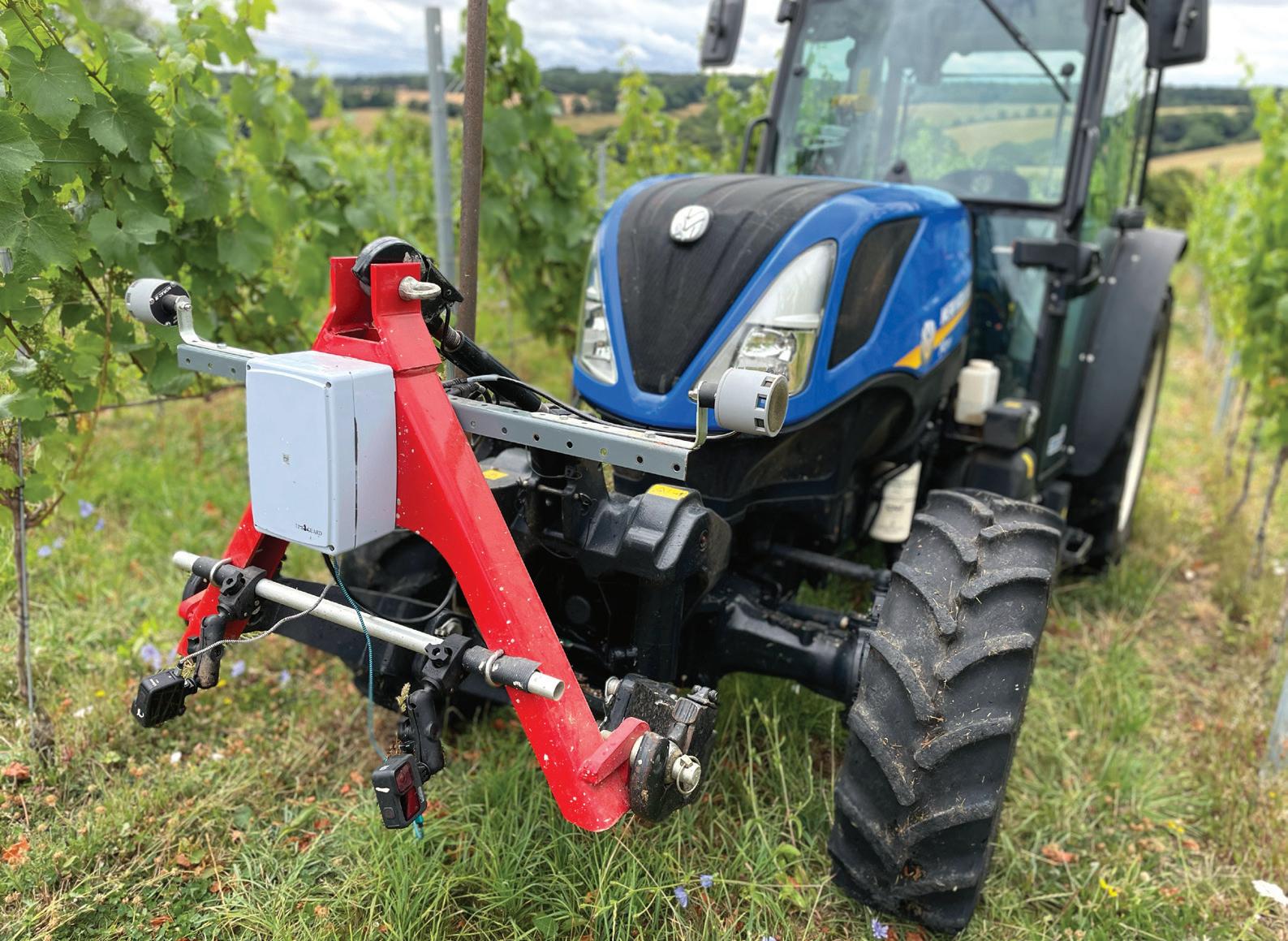
small black spots on the leaves and canes, as the name suggests. It can impact on fruit quality and yield if left untreated.
– Pruning infected canes can help to prevent further spread of the disease, as can removing plant matter from the ground to keep the undervine area clean. Current research is focusing on the use of various biopesticides in a bid to move away from traditional pesticides. Bacillus-based products and other microbial agents are being investigated for controlling common grapevine diseases such as downy mildew and Botrytis.

Weed growth puts pressure on the supply of water and nutrients to the vines. Even though UK vineyards are not short on water and quite often have fertile soils, research by the NIAB-EMR plant research centre at East Malling in Kent has indicated that vines do still experience reduced vigour and yield where weeds are left completely unchecked. Weeding is easily one of the biggest ongoing challenges that irk vineyard managers across the country. Weeds and cover crops grow continuously in our climate without the period of dieback over the summer that our European neighbours in warmer countries enjoy.
An entirely weed-free vineyard with bare soil is only really achievable through the use of herbicides. This leaves the soil vulnerable to erosion and the chemicals themselves are detrimental to soil health. Alternative options are mainly centred around mechanical weeding, which may be tractor mounted or rather more manual in nature, depending on the size of the vineyard and available budget! Mowing will of course keep weeds and cover crops under control, and it is relatively quick to implement. As the weeds’ roots are unaffected, it is just a temporary solution. Weeding the inter-vine areas also requires more specialist equipment to take the weeds back to ground level without disturbing or damaging the trunks and roots of the grapevines themselves.
Mulching inhibits weed growth and can be made from a range of organic materials like green waste or wood chips. The mulch layer has to be sufficiently thick to be effective, meaning that spreading it can be timeconsuming and costly, depending on the size of the vineyard in question.
The government grants system can be fiendishly complicated, so it’s no surprise that some vineyard owners may be unaware of funding they may be eligible for.
The whole structure of public funding in the countryside is changing. For many in the agricultural sector, understanding the new system is challenging, but they have some experience of claiming payments. But viticulturalists may have never applied for such support before – so establishing what’s on offer, understanding the small print and conditions, and completing the paperwork can be a daunting prospect.
It’s well worth exploring, however, with thousands of pounds on offer –and some of it might even be for work you’re already doing so will require little or no change in your approach.
Payments from some of the various schemes can also be ‘stacked’, so even relatively small sums from different ‘pots’ can add up.
It rarely makes sense to shape a business around the available subsidies, but once you’ve decided your strategy, then it’s worth looking at what funding might be available.
Although some payments are more relevant to those who run a wider agricultural enterprise in tandem with their viticulture business, some may be applicable for pure viticulturists.
Here are some options worth considering:
Although the application period is now closed for 2023, this fund is expected to be available again next year. It offers grants between £1,000 and £25,000 for specific items of equipment to increase productivity, boost environmental sustainability and improve animal health and welfare. The grants go towards the cost of specific items from a prescribed list – including items such as rainwater gauges and harvesting equipment. You can view it like a shopping list – have a scroll through and consider if there are any items you might be looking to purchase anyway. It’s important to remember that the item would need to be approved before it is purchased, then once paid for, the claim can be submitted. We recently suggested to a viticulture client they considered sourcing UV water treatment systems, cameras for monitoring the property, mobile frost fans and rainwater harvesting kit. Other items, such as smaller tractors and cultivation machinery suitable for a vineyard, could also secure funding.
The Woodland Trust charity offers financial help for planting new woodland if you’re considering 500-plus trees on at least half a hectare. A woodland advisor will visit your site, help design your woodland, create a bespoke species mix, supply the agreed trees and tree protection, and cover up to 75% of costs as a one-off capital payment. They can also

arrange and contribute to the cost of a contractor, if you use one for the planting. This scheme can be perfect for small plantations or buffer strips and doesn’t all need to be in one woodland, so you could make an application comprising various shelterbelts and field corners, for example. Some viticulturalists may plant trees purely for environmental reasons, but they can also increase a site’s amenity, biodiversity and visual value, potentially making it more make attractive as a visitor destination.
This is a Forestry Commission initiative supporting woodland creation and tree planting across England on areas as small as one hectare, offering up to £13,000/hectare. The application stage is more involved than a MOREwoods application, but also offers payment uplifts if a plan has additional desirable ‘outcomes’ such as improvements in biodiversity or water quality. As well as the maintenance payments, capital payments are also available, such as for fencing. Any type of tree planting is a longterm commitment so we always advise clients to make sure they are comfortable tying land up in this way, but there are going to be more payments for environmental good and carbon offsetting so woodland planted now could yield additional public or private funding in future.
If you manage farmland alongside your vineyard, the CS scheme is worth exploring. Just one example of the many ‘options’ is to plant a winter bird food seed mix in blocks or strips (known as AB9) which pays £732/ha/year. The nectar flower mix (AB8) pays £673/ha/year. There have recently been some encouraging increases to some of the annual and capital payment rates. Livestock fencing, for example, is now funded at £7.47/m. To make stewardship work, you might want to opt for a suite of options, but the capital grants can stand alone. The deadline for ‘Mid Tier’ schemes, starting January 1, 2024 is August 18 this year.
SFI is a new government scheme split into ‘standards’ which prescribe certain land management practices in return for a per hectare payment. The current standards available include ‘arable and horticultural soils', ‘improved grassland soils' and ‘moorland and rough grazing'. More are to be released in 2023 including ones for hedgerows, integrated pest management, nutrient management, agricultural and horticultural land standards, improved grassland standard and low-input grassland. In time, each will have three levels of ambition (introductory, intermediate and advanced). We are finding that many clients are already meeting most of the criteria for the standards and so it is worth considering this scheme for your land.

With this year’s planting season now in full swing, our attention in the Vineyard Services department will soon turn to taking these newly planted vines through their foundation years (years 1, 2 & 3) to their first, but small harvest.
It’s an exciting time for both the customer and us, a dedicated viticultural support company. Whilst some plantings will be for established clients who know exactly what to expect from the varieties being planted and on sites they are already very familiar with, for the newcomers and those diversifying into grapes, (whether this be as a grower or as a producer) it is the culmination of months, sometimes years of work and due diligence. Including isolating the best fields and selecting the most appropriate varieties/clones/rootstocks to complement the anticipated microclimate and the end destination of the fruit. It’s a journey which requires patience as those first grapes are a few years off, but I’ve set out some points below for each season as to how to get there in good shape.
The overriding thread throughout these first three years is creating the best environment for the plant to establish a significant root system as well as a strong trunk. We cannot stress the importance of getting this right as soundly established vineyards are those that have the building blocks to crop reliably and be healthy, (providing you continue to look after them of course).
◆ Prepare the topsoil and the subsoil region so as not to inhibit development of vine root systems ready for planting.
◆ In consultation with your nominated agronomist, make necessary ameliorations to the land. A strong relationship with an experienced BASIS accredited agronomist is incredibly important.
◆ Remove unwanted competition from weeds on or around the vine. Reducing competition in those early years is important for the vine to access all available nutrients and water.
◆ Use a grow guard. These create the perfect microclimate to aid growth and keep pests from nibbling.
◆ Use a tutor, (preferably metal). These will give the vine something strong to support itself with.
◆ Shoot selection! Reducing the number of shoots to two midway in the first season will help direct the vine’s energy into just these shoots.
◆ Install the trellis in the first season. Whilst it is tempting to leave this until the following season, it is best done in this first year. The vines will need the trellis fairly early in the second season, and having the trellising in situ means you can conduct activities such as seeding the alleys.
◆ Install deer fencing if required. Whilst nibbling deer are unlikely to kill the vine in the first year it is certainly not encouraged.
◆ Fungicide applications. Once the vine is out of the tube, apply a handful of crop protection sprays in the first season to help prolong the growing season for the vine.
◆ Purchasing machinery and kit – often overlooked but important. If the tools are not on site, you have no means to complete the task. If you're not purchasing equipment, then lining up an experienced contractor with the appropriate kit is the next best solution.
◆ Install a weather station. Collection of data is important for accurate disease modelling as well as understanding performance within the vineyard.
◆ Prune your vines back to two buds. Pruning hard like this will direct all the energy of the vine into just those two shoots. These will ultimately form the two options for the vine’s trunk.
◆ Continue as per previous season with removal and reduction of unwanted weeds from on/around the vine.
◆ Watch out for frost! One of the negatives of opaque grow guards is that sometimes unwanted cold air can occasionally get trapped in the tubes. Make sure your frost defence measures are in place in advance of such events.
◆ Shoot selection: Remove stunted and short growth and focus on choosing two of the
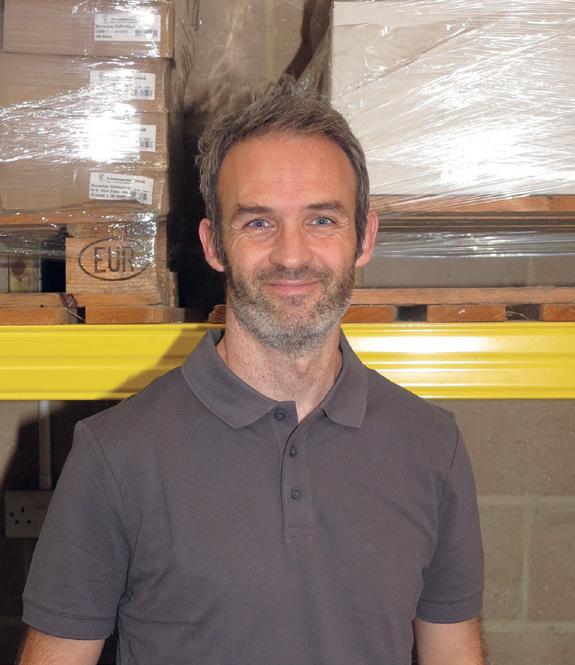
strongest shoots to become your choices for a trunk at next year’s pruning.
◆ Train the shoot growth onto the trellis system, tucking in regularly.
◆ Monitor for pests and diseases. Regular crop walking is essential for identifying diseases, pests, and plant deficiencies.
◆ Fungicide applications: Follow your spray program as set out by your agronomist.
◆ At pruning, select the strongest and straightest cane as the trunk and top at just above the fruiting wire.
◆ Continue as per previous season with removal and reduction of unwanted weeds from on/around the vine.
◆ Keep the grow guard on! Whilst the temptation with now having a trunk is to take the guards off, they are best left on for one more season until the trunk is fatter and stronger.
◆ Affix the new trunk to the metal tutor. Using band ties, this will help maintain the integrity and prevent bending and breakages.
◆ Monitor for pests and diseases. Regular crop walking is essential to identify diseases, pests and plant deficiencies.
◆ Bud rub. Once frost risk has passed, remove all unwanted buds from the top of the grow guard to the base, leaving you with a group of buds to form the crown of the vine.
◆ Train the shoot growth that emerges from the ‘crown’ area of the vine onto the trellising system.
◆ Harvest – to do or not? Depending upon the season, the vigour and crop load of the vines might mean there is the potential for a small harvest. This is a judgement call to make just after flowering as to whether to drop the fruit or not.
Whilst it’s not always a smooth ride, mother nature will inevitably throw some curveballs into the mix, but following these basic rules will get your vineyard safely, healthily to the beginning of year 4 and that first true cropping season, one vine at a time. Here at VineWorks we look forward to tasting the results!
Are you thinking of buying or selling your vineyard business? Or perhaps you are getting a new investor into your business, valuing your business or raising finance?
Carpenter Box have a well-connected and highly experienced, specialist vineyard team. Combined with our dedicated Corporate Finance expertise, we have the skills and sector knowledge you need for all your Corporate Finance requirements.





John Billings
E: john.billings@carpenterbox.com
As head of our sector, he looks after a portfolio of family and owner managed vineyards, wineries and associated businesses.
John has a real passion for the success of his clients, helping owners and families to achieve their goals as well as pass on their business to the next generation.


Alistair Aird
Corporate Finance Director
E: alistair.aird@carpenterbox.com
Following his Finance MBA, Alistair spent 15 years providing Corporate Finance Lead Advisory services. His work covered disposals, acquisitions, MBOs and MBIs, valuations, debt and equity raising.
Alistair works with owners and managers of businesses to help them achieve their strategic corporate goals, should they be looking to grow or exit, either fully or partially.

establishing
The cool, damp start to spring has slowed bud development, but with some sunshine and heat, inflorescences are quickly becoming visible. Although behind the 2022 season by 7-10 days, generally flower initiation has been good, with little frost damage to date, plus a reasonably even bud break.
The 2023 crop looks very promising, although it is important to be realistic about the quality and quantity vines can support and carry through to harvest.
Flowering is a critical time for disease control. The fast, lush growth from primary buds, which if combined with prolonged flowering due to cool, wet conditions, provides ideal opportunities for infection, especially as flowers and inflorescences, where caps don’t dislodge, offer an entry point for Botrytis.
Preventing establishment of Downy mildew around now is difficult, due to warm, wet conditions with plenty of lush green leaves to infect.
Early application of products that enhance the plant’s resilience to stressful conditions, such as Procrop ISR (a blend of natural ingredients), and Zynergy, can be a useful part of the overall crop management strategy. At this growth stage it will be time to add in something more robust though. Fungicides are relatively limited, with the main options being potassium phosphite, ametoctradin + dimethomorph, metalaxyl-M, cymoxanil, or amisulbrom.
Another disease priority at flowering is Botrytis. Latent Botrytis infection can remain ‘hidden’ until developing berries begin to soften in late summer/early autumn, when the concentration of natural anti-fungal
compounds declines, and disease develops, causing rots to occur.
Now is the time to monitor vineyards for Light Brown Apple Moths (LBAM) with pheromone traps, and treat as required. Should LBAM be permitted to feed within inflorescences, berries will be lost or damaged, and Botrytis risk is increased.
There is a good armoury of botryticides available for use later in the season, however, on high-yielding sites and tight bunch varieties, such as some Pinot, Chardonnay, or Bacchus clones, it may be feasible to help reduce Botrytis risk by altering bunch architecture at flowering.
The turgor pressure that builds up as berries swell in tight bunches can cause some in the middle of the bunch to split, releasing juice that will raise the risk of Botrytis. Decompacting the bunch, allowing a greater area to swell, does cut infection risk.
Applying the growth regulator Regalis Plus (prohexadione) at 30-50% open flower has proven a useful way of manipulating berry set, thereby allowing more space in the bunch, reducing splitting, and minimising infection risk. The 90-day harvest interval precludes its use after flowering.
It is an approach most suited to productive vineyards, where yields are good, and it is used to optimise quality mainly by increasing sugar levels.
Conversely, for those where vines struggle to yield well, the focus will generally remain on maximising flowering and berry set. Over the last three seasons, grower field trials have shown increased setting when using Lallemand Vineus Pro-Flowering, particularly at the start of flowering in Pinot varieties and Chardonnay.
Limited European research indicates an early application of Procrop ISR can also improve bunch architecture by elongating the rachis, however, experience of this feature in UK


conditions is limited.
Gibberellin-based products that facilitate cell elongation can also decompact bunches, however, adverse effects on the following year’s floral bud formation have been observed in some situations, whereas prohexadione does not appear to do so.
The final key disease around flowering is Phomopsis, and once again, control strategies are changing.
Sulphur is useful early in the season, but once vines reach inflorescence exposed, kresoxim-methyl is the preferred approach, offering both Phomopsis, and Powdery mildew control. There is a limit of two applications per season, so where required, it is best applied at the start of flowering, then again at mid to late flowering. These sprays should be used in conjunction with cultural controls.
Early flowering is an important period for petiole tissue testing, as there is still time to react to the results and avoid nutritional deficiencies compromising growth.
Prioritise crops where there are suspected, or historical issues, or where soil sampling has identified deficiencies.
Boron is a key micronutrient, often not held well in certain soil types. It plays a central role in pollen tube development and pollen viability, so any deficiency could compromise fertilisation and fruit set.
Boron, and calcium, have key roles in protecting vines against Botrytis infection too. Indeed, calcium is key to building resilient cell wall structures.
Kayleigh


“Having recently joined the firm’s Agricultural and Rural Land team and both having a love for the outdoors, we were keen to start to learn about the finer detail of the sector. With wine making being one of the fastest growing industries in the agricultural sector in England (particularly in Kent), we thought we would start there. Not only do we have a love of the outdoors, but also a love for wine!
Mereworth provides a great example of the high-quality wine being produced here in Kent. Mereworth's first harvest was in 2018 and they have since made an award-winning English sparkling wine. They produce three types of sparkling wines – Pink, White from White and White from Black, as well as Harvest Gin and Oak Aged Gin.
Mereworth's Head of Production, Scott Gebbie, gave us a tour of the winery which is located in Brewer’s Hall Oast. The tour gave us a behind the scenes insight into the complexities and processes of wine making. As we walked through the production areas and tank rooms, Scott talked us through the wine production process after the grapes are harvested from fermentation to blending. At the time of our visit, Scott and his team were in the process of pruning and tying the vines and were soon to be bottling.
Following on from the tour, we were invited to Mereworth's on site bar which gave us a chance to taste their signature sparkling wine we had just learned all about. We also had the pleasure of tasting Mereworth's Marourde Aperitif (made with the estate’s honey wine) and both were thoroughly enjoyed!”
Kayleigh and Director of Whitehead Monckton, Marsha Marriner, visited Scott at Mereworth Wine’s Vineyard in Wateringbury on a sunny May afternoon to witness “Budburst”, a very important time in the year of a vineyard. “With the vines having recently been pruned and the canes tied down onto the horizontal wires that had been installed, the growing vines would have plenty of support as they continued to grow. This year, Scott and his team had chosen to use the Pendelbogen
Every Friday. Food served 12-8pm
Every Saturday. Food Served 12-6pm
Every Sunday. Food served 12-6pm Live music 12-5pm
system of arching the canes which acts to encourage more sap distribution, improving the evenness of the Budburst along the length of the canes and reducing frost risk.
The vineyard is 2.5 hectares in size and the vines were planted in 2016 consisting of Burgundian Chardonnay (60%), Burgundian Pinot Noir (35%) and Champagne Pinot Meunier (5%). All these varieties of grape contribute towards the high-quality sparkling wine that Mereworth Wine’s produce. The process of planting to production takes in the region of three to four years and is not one that should be rushed to ensure that the vines establish strong roots and provide an abundant crop.
The vineyard has a great position, being south facing and, on a gradient, allowing drainage and movement of frost and fog down the valley away from the vines. The end of the frost window comes around mid-May and so the threat of frost lasts for many months for wine producers. If there is a frost, the frost can kill the buds which will set production back two to three weeks. It is best to harvest the crop late September to early October, so for every frost that damages the crop, harvest is delayed and so this is a real concern for wine producers.
The most common threat for vines other than frost are downy mildew, powdery mildew, moths and fruit fly. The vines are sprayed to protect against mites, as well as against these other pests. The presence of beneficial insects are also encouraged at the vineyard to help keep these issues at bay.
The busiest time for Scott and other wine producers in Kent is towards the end of June through to early August. This is when the vines are flowering, the grapes begin to set, and berries are forming.
We very much look forward to visiting the vineyard a little later in the season once the vines are flowering to learn more about the intricacies of viticulture.”
Tom Newham who is the Vineyard Instructor at Plumpton College said: "Two second year wine production students Leith Drummond and Rory Wood took part in the 2023 EWC in Stryia, Austria. The competition pits two students from over thirty European wine schools, competing in everything from tractor maintenance and winemaking practices to oenology product identification over four strenuous days.
"Team Austria were the overall winners but Rory and Leith came in the top third of all five categories. A good fun and sociable time was had with our fellow Europeans! I know they put a lot of study into this, so well done chaps!"
As one of the participants Leith summed up the experience: "The 2023 Europe's wine competition in Austria was an incredible event to participate in. As a young professional learning to make quality wines in the UK, learning and competing against my international peers was an exciting challenge. For me, I loved seeing the blend of rich

traditional styles of winemaking with the innovative practices of the European wine schools. Plumpton College's participation in this competition allowed me to explore new methods and techniques that I will try to incorporate into my own winemaking and grape-growing style. Moreover, the event fostered a sense of camaraderie and collaboration for not just myself but all of the young aspiring winemakers and viticulturists. The competition offered an opportunity to build relationships and networks with one another,

which will lead to future collaboration and partnerships in the industry."
Commenting on his experience of the event in Austria Rory said: "In April, Leith and I went to Styria in Austria for the annual European viticulture and oenology competition to represent Plumpton College and England. We were tested on everything we studied on our course at Plumpton, from viticulture, machinery, winemaking, chemistry and technical sensory tasting, amongst many other things. Silberberg College provided us with great trips to dramatic vineyards and historic wineries and tastings of the typical wines made in Styria, mostly from Sauvignon Blanc, however, there were some excellent Rieslings too! The trip's highlight was socialising and collaborating with all the other young winemakers and grape growers from across Europe. Despite our cultural and language differences, we all got on extremely well. We spent the five days tasting and talking about the different wines we brought from our regions and our cultural quirks and mannerisms, often providing great comedic material.
Even in such a short time, Leith and I came away with great friendships and contacts from around Europe, making it a thoroughly worthwhile and excellent trip."
Working in partnership with Vineyard magazine for a developing UK wine industry.
WineGB is the national trade body representing the vine growers and winemakers of Great Britain from the largest producers to small hobbyists. Our members work together with the organisation to develop strategy, expertise and marketing opportunities for long-term, sustainable success.





Welsh Wine Week is the perfect time to try something new. Grapes are grown in Wales’s wonderfully unique microclimates, so if you’ve tried a wine from South Wales and never from the North, now’s your time to give it a go!
Many Welsh vineyards are open to the public, so you can make a visit and sample the local produce first hand.
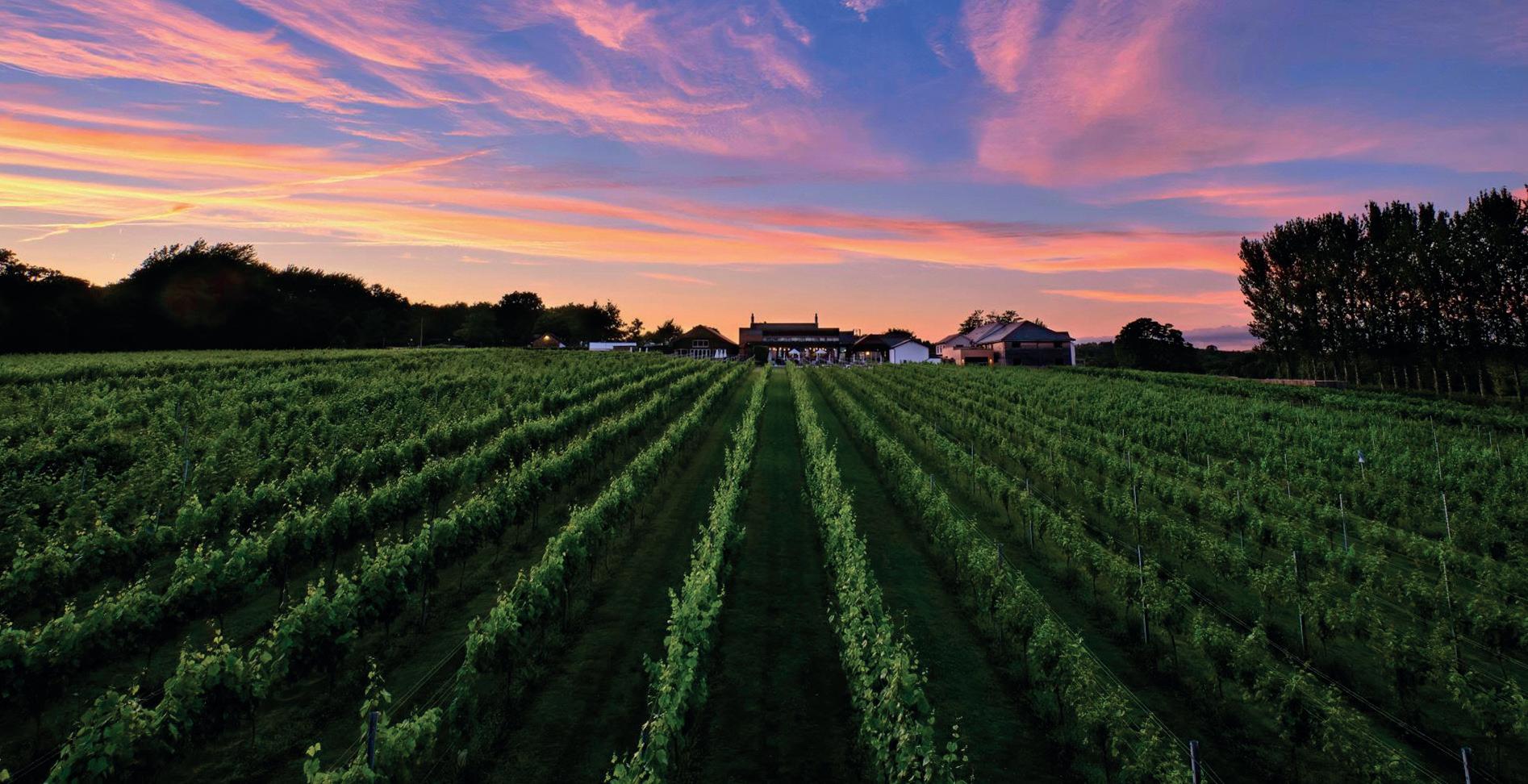
Visit the dedicated Welsh Wine Week website to find out more about the events and activities taking place this year, and how you can get involved: www.welshwineweek.co.uk
Join us on 5 September for our annual Trade & Press Tasting, the key event for the English and Welsh wine industry; bringing producers together. This year, the tasting is being held at a new location: the stunning
Battersea Arts Centre in London.
Key features include:
◆ Individual exhibitor stands
◆ Stands representing regional vineyard associations, featuring smaller
commercial producers
◆ Focus tables to highlight some of the styles now produced in Britain
◆ Focus tasting table featuring the Trophy winners in the WineGB Awards 2023.


English Wine Week, taking place from 17 to 25 June, highlights English wines and their wide availability across the country through retail outlets – from supermarkets to independent wine merchants – hotels, pubs, bars and restaurants.
Importantly, vineyards will also be opening their doors to welcome visitors, offering tours, tastings, special offers and many other attractions. Visit the Producer Directory on the WineGB website to explore the vineyards in your region, and visit our ‘What’s On’ page to view the dedicated events happening during English Wine Week. If you’re holding an event or offer during English Wine Week, let us know!
Over the week there will be a host of events, promotions and activities, as well as social media engagement and a focus on English wines throughout the media.
Our overall objectives are:
◆ To help producers and resellers sell more wines
◆ To facilitate more visits to English vineyards
◆ To increase consumer awareness of English wines and vineyards
◆ To increase trade engagement with English wines and vineyards
To help achieve these objectives, we have published a selection of English Wine Week assets on the WineGB website, along with point-of-sale material that can be ordered in advance. Visit the English Wine Week page to find out more:
www.winegb.co.uk/english-wine-week
For a full list of events, including workshops and training courses, please visit the ‘What’s On’ page on the WineGB website: www.winegb.co.uk/events
24-25 June 2023
Vineyards of the Surrey Hills
Summer Spectacular
7 July 2023
WineGB Awards Lunch, Drapers’ Hall, London
23 July 2023
Vineyards of Hampshire Fizz Fest, Hambledon Vineyard
5 September 2023
WineGB Trade & Press Tasting, Battersea Arts Centre, London
2023
22 November 2023
Vineyard & Winery Show
WineGB members receive discounts on training courses provided by Vinescapes. If you’re a WineGB member, email Phoebe for the discount code: phoebe@winegb.co.uk
Wine contact with lees and oak is a very old practice, so deep in our culture that it is considered a natural intervention. Wisely used in various techniques they can give some of the biggest positive impact on wine quality and style. It’s an area with complex dynamics and experimentation takes time: however, many advances have been made at a slow and steady pace.
The common scenario in the UK is that we have many vintages where we’re forced to pick earlier because of disease pressure instead of being able to wait for the desired level of ripeness or cold years with sharp acidity. In these situations, oak and lees, (grape and yeast lees), can make the difference changing the attitude of a wine. In “good vintages”, they make an even a better job of course; however, let’s not forget that everything depends, and something that works for one particular wine or style, might not work for another.
Let’s summarise three key points:
◆ Wine style
◆ Balance and complexity
◆ Management.
Almost every wine can benefit from oak and lees contact: depending on the technique, they can easily pass unnoticed even to an expert palate. They both extend the shelf life and provide some very elegant and enjoyable aspects such as: influencing the volatility of aromatic compounds, add/generate new ones, improve the resilience to oxidation or stability.
Sometimes, it’s just a case of lowering the acidic feel and keeping a low pH (e.g. rosé
wines), smoothing the texture and providing natural sweetness while keeping a wine dry with less SO2 (this applies to any wine).
I’m sure you noticed that I’ve just scratched the surface of some of the most interesting effects without even talking about which lees to use, when, how much, for how long, from which wine and how to manage them. Same considerations apply to oak flavours, fermentation, micro-oxygenation, the kind of oak, toast, grain, terroir, storage condition, bâtonnage, chips, staves, barrels, inserts, tannins, polysaccharides, age, time etc. It’s a fascinating subject that needs its own space to be discovered and digested with a never ending learning curve.
Filling a barrel with wine or adding oak and lees is easy, although, achieving a balanced and elegant complexity can be a different story and that’s what in my opinion makes great wines. It’s an area of fine winemaking that takes dedication and experience.
Each different wine needs to be seen in its own context and its purpose. Some applications related to the use of oak and lees can have a relatively quick effect; perfect for early release wines, while some other actions, can take years and need to be seen in perspective as they change with the evolution of a specific wine.
We achieve balance when the nose descriptors and the tactile sensations of alcohol, acids, tannins, minerality and mouthfeel are in harmony without overpowering each other. We find complexity


I’ve been in the UK for 10 years offering my experiences and I’d be happy discuss your project.
DESKTOP www.enologie.wine
phone-alt +39 3349 769 839
ENVELOPE salvatore@enologie.wine
and elegance, when the combination of all the above interact and enhance each other; creating a pleasant third dimension difficult to describe in a tasting.
This creates pure joy with an intricate and fascinating tasting experience.
You might recall my past article in the March edition about the creation of blending components, well, that is what I mean with management. It relates very much to trials, time, experience, knowledge of the terroir, constant observation, adjustments and ultimately, personal taste.
These practices are relatively well known for red wine and oaked styles of still white wines. They work very well with almost all sparkling wines even without providing any oak character (if wanted), to increase complexity or just to enhance the autolysis character. They definitely help with the reduction or elimination of sugar in the liqueur de expedition. They can also provide very subtle and often unnoticeable layers of complexity in rosé and aromatic white wines.
Because of the extended shelf life, resistance to oxidation, polysaccharides and mannoproteins interactions, protein and chill stability, in some cases, they also represent a very good choice for organic, low intervention and biodynamic wines as they tend to be higher in acidity and the grapes are richer in oxidising enzymes due to the vulnerability to diseases at least with classic varieties.





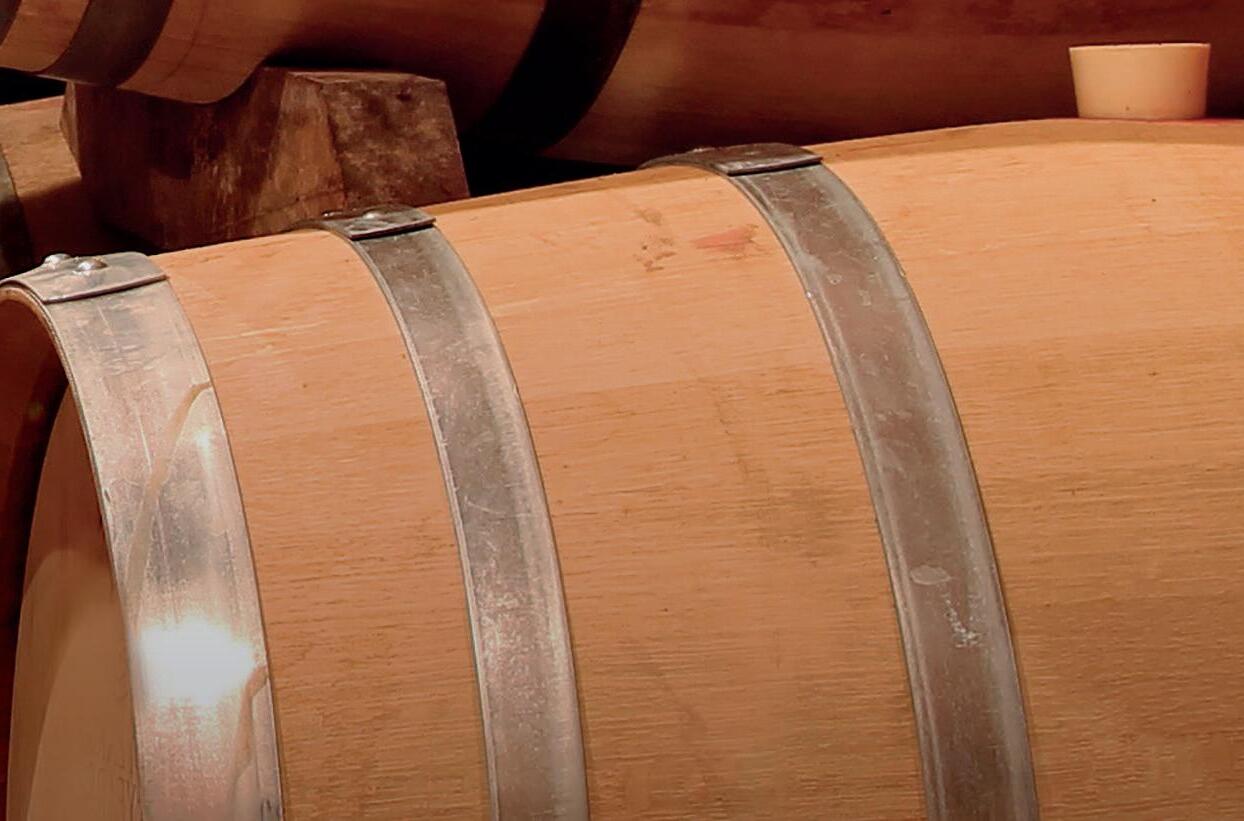



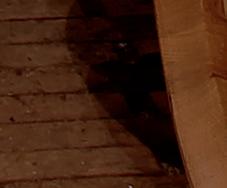



At Vogelsang, we never lose sight of what matters to you: economy and ease of use.
As innovators in the field of pumping techniques, we have developed a pump especially for the winemaking industry to help move liquids and solids without losing any vital flavour and quality of the wine.
The compact, intelligently designed rotary lobe wine pump is created specifically to reduce wine oxygenation through its quiet and gentle operation, and is ideal for recirculation or pumping to and from the cellar, and use in transportation, storage and bottling.
Grapes, seeds, must and wine, everything remains unchanged during the transport process, for the highest quality of the final product.
Contact person: Richard Love
Mobile: +44 7765 902140 | richard.love@vogelsang.info
vogelsang.info





























Taking into consideration the costs of hand labour, alongside the admin time and logistics of finding and organising workers, mechanical defoliators are an easily justifiable expense for all commercial vineyards.
Germany’s leading manufacturer of specialist viticulture machinery, ERO, has long offered growers a range of high-quality leaf removal tools including the Elite, the ‘suck and pluck’ roller defoliation method, and VITIpulse, the pneumatic air blast method.
Wanting to combine these two technologies into one machine, ERO developed the VITIpulse Combi to give growers the best of both worlds – a defoliator with rollers to strip from the exterior and air to get right into the centre of the canopy.
There are now two VITIpulse Combi machines operating in the UK, both supplied by NP Seymour.
We caught up with viticultural contractor Sam Barnes, of SJ Barnes Ltd, to find out more about his machine.
Having greatly increased its canopy management client base over the years, SJ Barnes, which now completes around 400ha of contract defoliation work each year across Kent, Sussex and Surrey, invested in the ERO VitiPulse Combi for summer 2022 to sit alongside the firm’s existing ERO Elite defoliator. With the VITIpulse Combi, more targeted defoliation results can be achieved as the roller removes the external leaves which then allows the air blast to better penetrate through to the inner part of the canopy.
“The Combi really lends itself to still wine
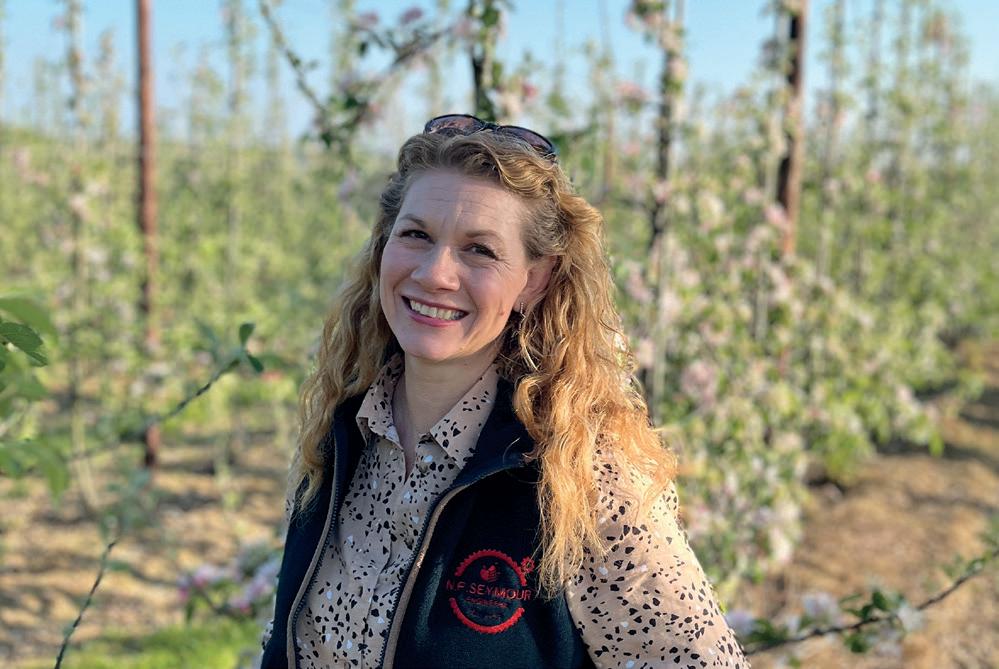
production because you are exposing the fruit and blowing away trash and debris so that the grapes are kept clean, allowing for longer hanging times and riper berries,” said Sam. “It is particularly useful for Bacchus too as the air blast system can remove the flower caps which so often lead to Botrytis.”
One of the key benefits of the VITIpulse Combi is that it allows for flexible use of the two defoliation systems. Operators can choose to either combine the use of both systems or run them individually and independently from each other.
According to Sam, what method the growers choose to operate will greatly depend on the season.
“We ran the Combi a lot in 2022 as a standard leaf stripper with the ‘suck and pluck’ system because it was a clean, dry year and we didn't want to expose the fruit too much due to the risk of sunburn,” said Sam.
“In a year like 2021, however, we would probably have used the air blast system more as it shatters the leaves and blows trash out from the middle, helping to keep disease pressure down.”
Those using the machine early on in the season will also be able to use the VITIpulse Combi for fruit thinning as the air blast method successfully removes any unset berries.
“Growers do however need to be aware that the air blast system can only be used at certain times of the year,” said Sam. “Ideally you want to use it before bunch set, otherwise you risk blowing trash into the bunch. Once the skins get soft, you then risk causing damage from debris which is blown through the canopy. You

can then use it just before harvest to remove leaves and make it easier for harvest, but you need to have a skilled operator who is confident that they won’t hit and damage any fruit with the rollers.”
The combination of pneumatic air blast and roller defoliation technology in one head not only gives growers this premium defoliation quality, the VITIpulse can also be operated at the highest possible forward speeds. In comparison to the ERO Elite, the Combi can work at 5 to 5.5 km/h compared to 4km/h.
To operate the VITIpulse, growers will need a tractor with variable controlled oil flow rates capable of 80 litres per minute.
“We run the VITIpulse on our Fendt 211V and 211F,” said Sam. “You could get away with a lower horsepower tractor, but you really do need the oil flow as one spool will be running the rollers for the suck and pluck system, and another will be running the mast and driving the air veins and rotor.”
From the in-cab VITIpulse terminal, operators can control the number of rotations per minute as well as the pressure and intensity of the air. There is also the option to set the machine up to strip the east-side more than the west and have the machine automatically adjust as you turn into the next row.
With a ballpark figure of labour costing £1,500 per ha for double-sided hand leaf removal, growers looking to invest in their own VITIPulse Combi could expect the machine to pay for itself in 32ha.
On the contracting side, SJ Barnes services growers from 2ha upwards, costing around one-fifth of manual hand stripping.
For more information on purchasing a machine, please contact NP Seymour on 01580 712200. For contracting, Sam Barnes can be reached on 07792 879337
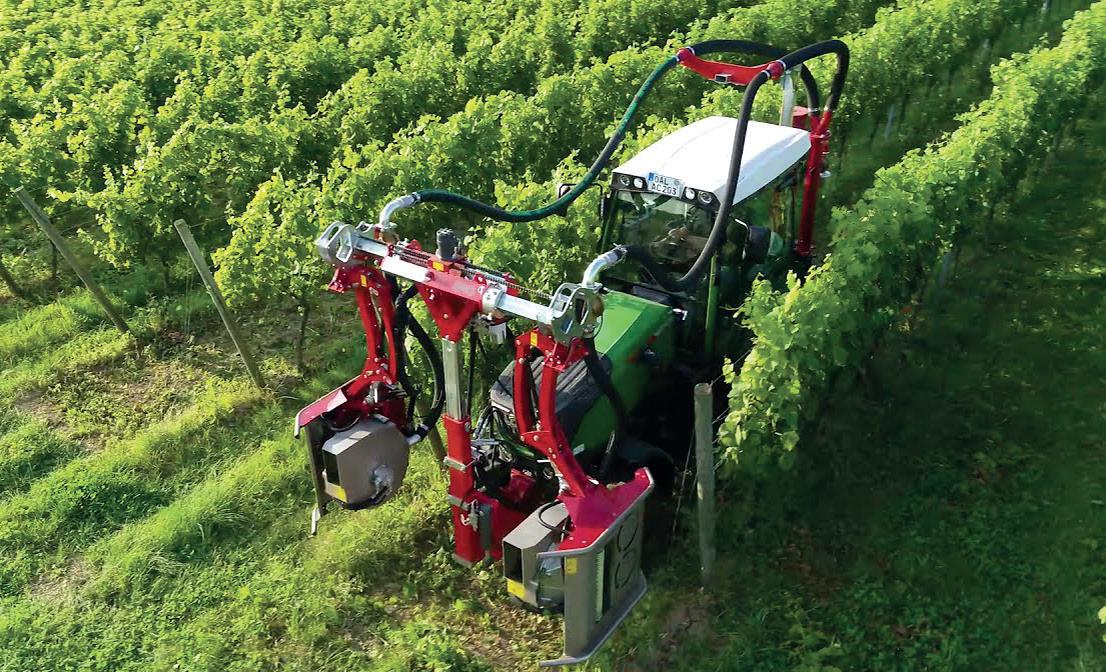











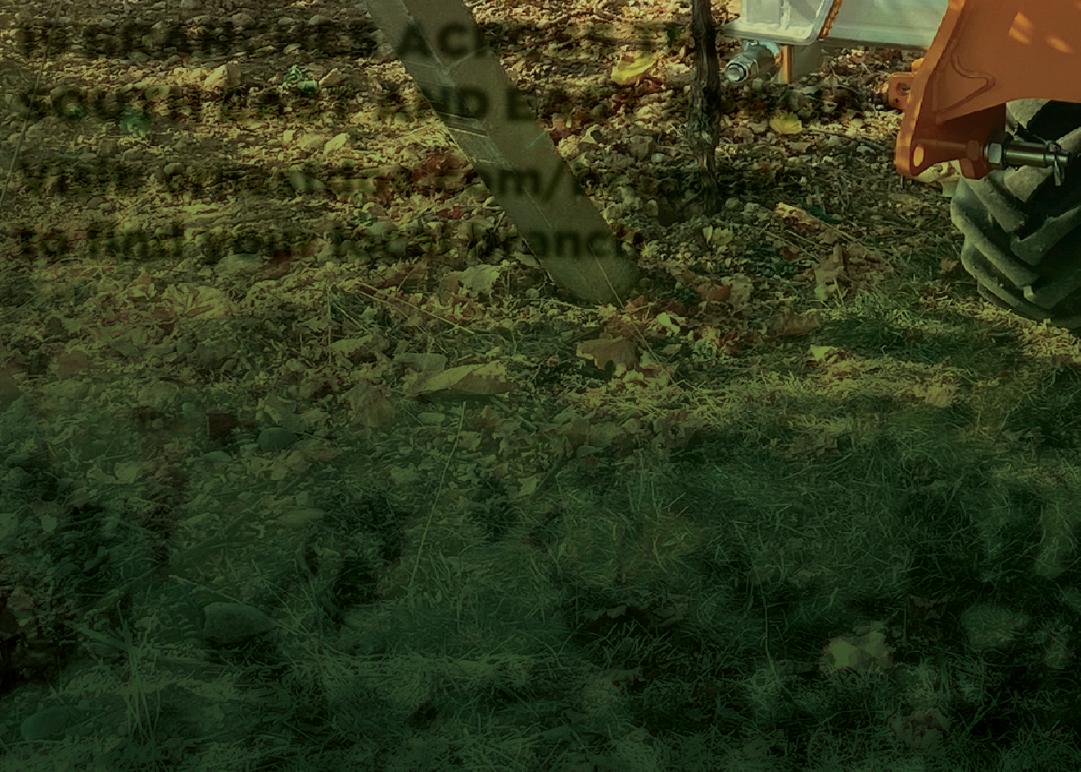








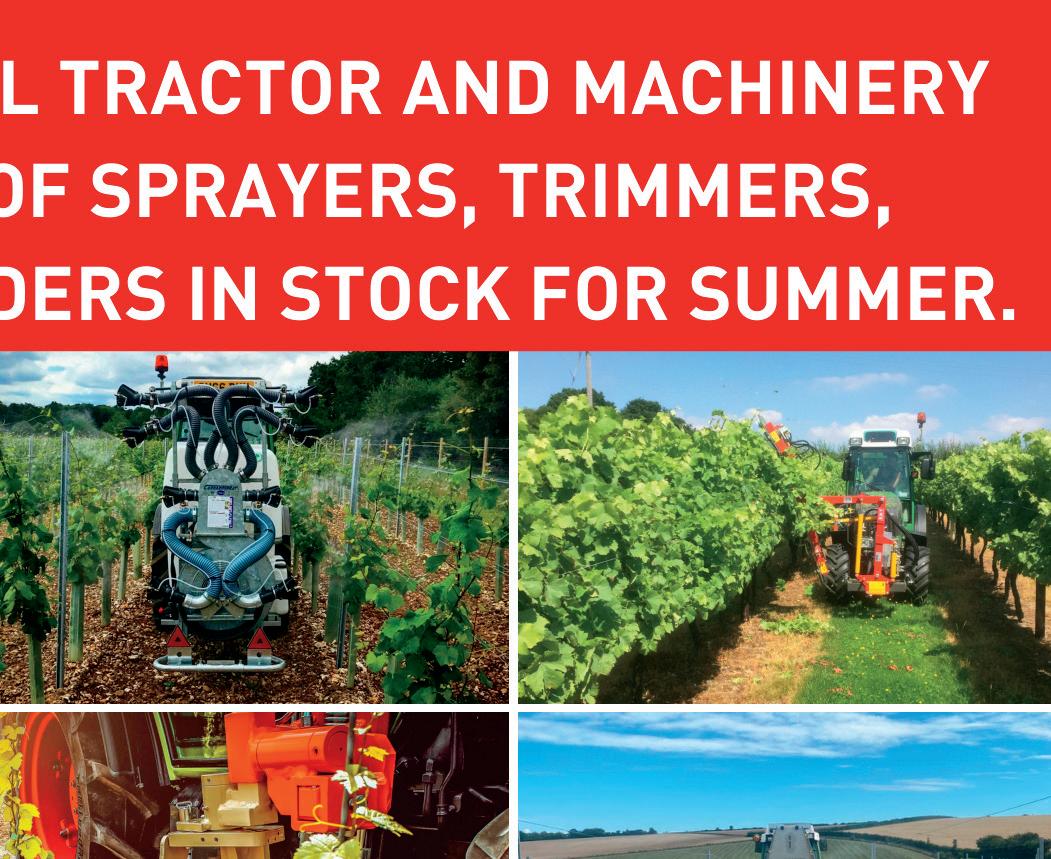

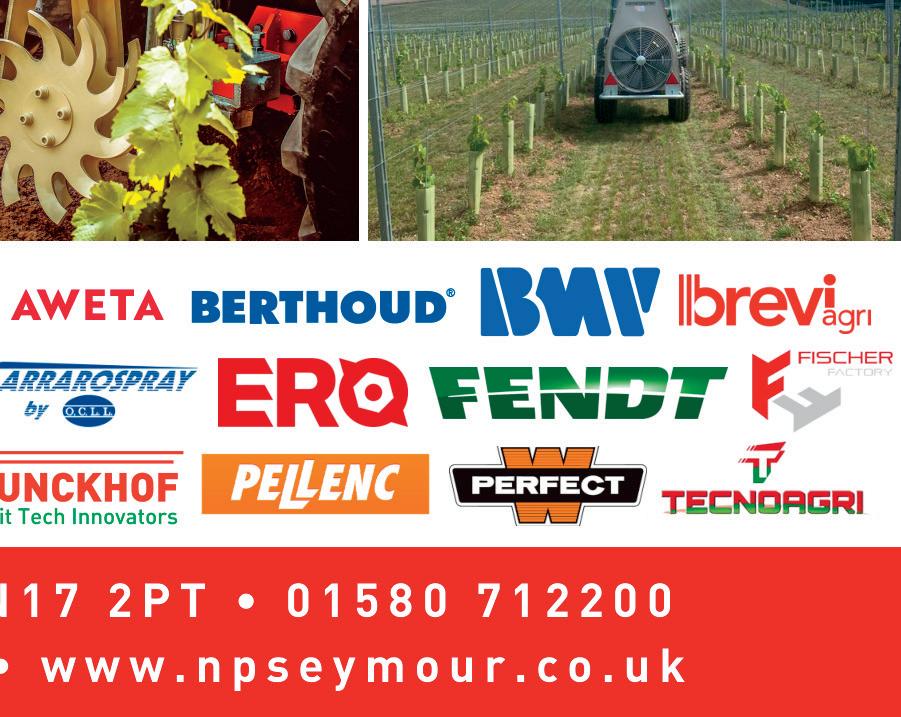
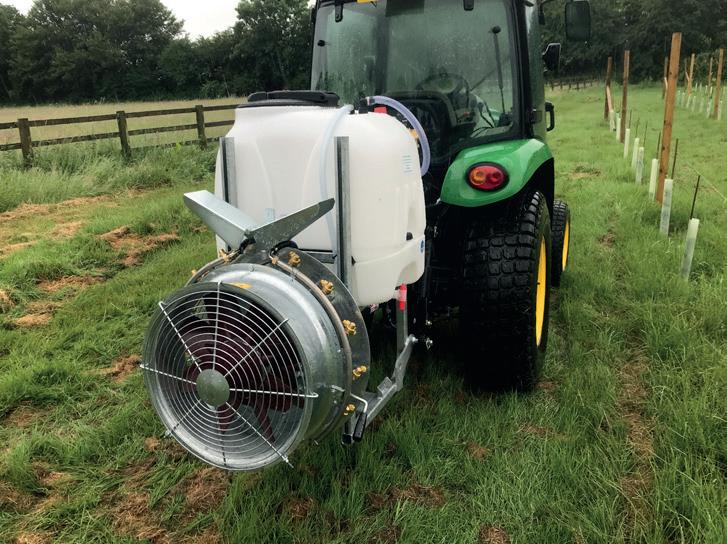
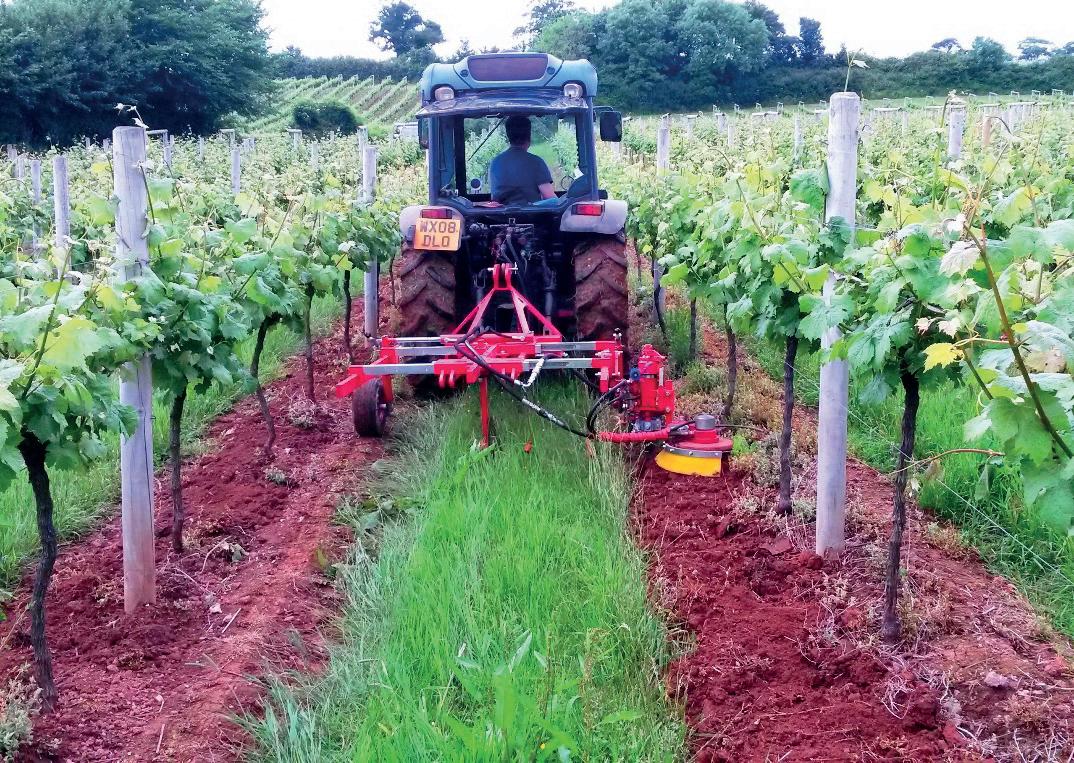


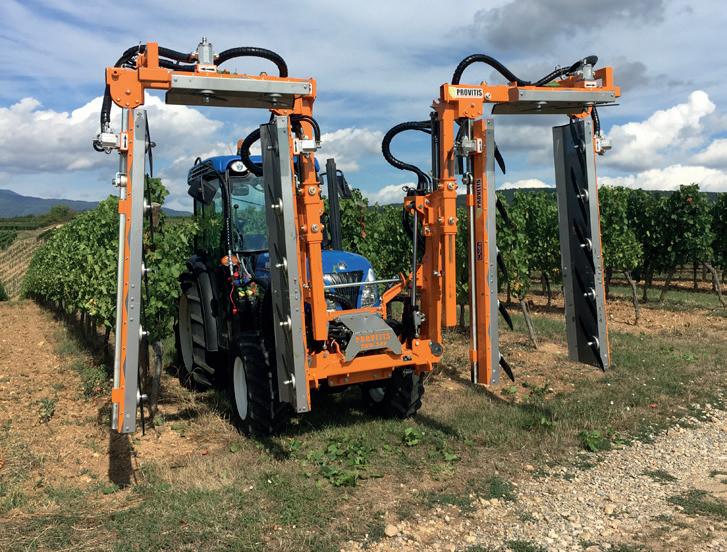


Gripple, the Sheffield-based manufacturer of wire joiners and tensioners for agriculture and suspension solutions for construction and the solar industry, is celebrating an incredible milestone – producing its one billionth fastener.
A celebration event was held at Riverside, Sheffield, one of Gripple’s six manufacturing facilities in South Yorkshire to mark the milestone, which included current staff and retired employees, who had been involved with the manufacture of the first generation of Gripple fasteners.
With 85% of Gripple’s fasteners going to export markets, their products have been used in a wide range of agricultural and construction applications, since production started at the original factory in Sheffield 35 years ago. This now includes such varied
applications as viticulture, fruit growing, agricultural wire fencing, garden trellising, greenhousing, utility scale solar, mechanical, electrical, plumbing, lighting and acoustic applications, to name but a few!
Kevin St Clair, UK Managing Director for Gripple, said: “Our one billionth Gripple fastener is a truly remarkable achievement. Our fasteners are used in such a diverse range of applications and it is testament to their high-quality design and our reliable quality production that they are renowned throughout the world – many of the original Gripple fasteners are still in use today!”
Kevin adds “When I joined Gripple in 2002, we were based on just one site and manufactured around 15 wire joiner variants at a rate of 20,000,000 per year. Here we are 20 years later with six sites, and in 2022 we manufactured 70,000,000 units across 100
variants. I am very excited about what the next 20 years will mean for Gripple as we are constantly innovating to solve fastening and tensioning issues for people in different industries across the world.”
Over the past 35 years, production at Gripple has advanced dramatically from hand assembly in the early days producing 800 per shift to becoming semi-automated to make 3,000 per shift to many variants now being fully automated and manufacturing 25,000 per shift. Gripple’s own Automation division is currently developing an 80 fasteners-perminute machine, which will further speed up production and the checking process.
From originally carrying out manual checks within the business, Gripple has advanced to 100% automatic visual checks carried out by state-of-the-art camera technology, ensuring the very highest quality standards.
Exciting industry newcomer, Electric Wheels, will be showing their range of electric UTVs at events around the country. Visitors will be able to ask questions about how they can transition to a cheaper and greener form of transport around the vineyard.
The Nipper is designed for versatility it is perfect for accessing hard-to-reach parts of a farm, has an electric rear tipper and boasts
an impressive range of up to 75 miles on one charge. Also on display will be the HiSun Worker, offering similar capabilities to The Nipper, and the HiSun Beast. There is also a prototype that Electric Wheels’ engineering team have customised. A flatbed has been fitted to a long-wheelbase model of the Beast, which gives it the largest load capacity of any electric UTV on the market.

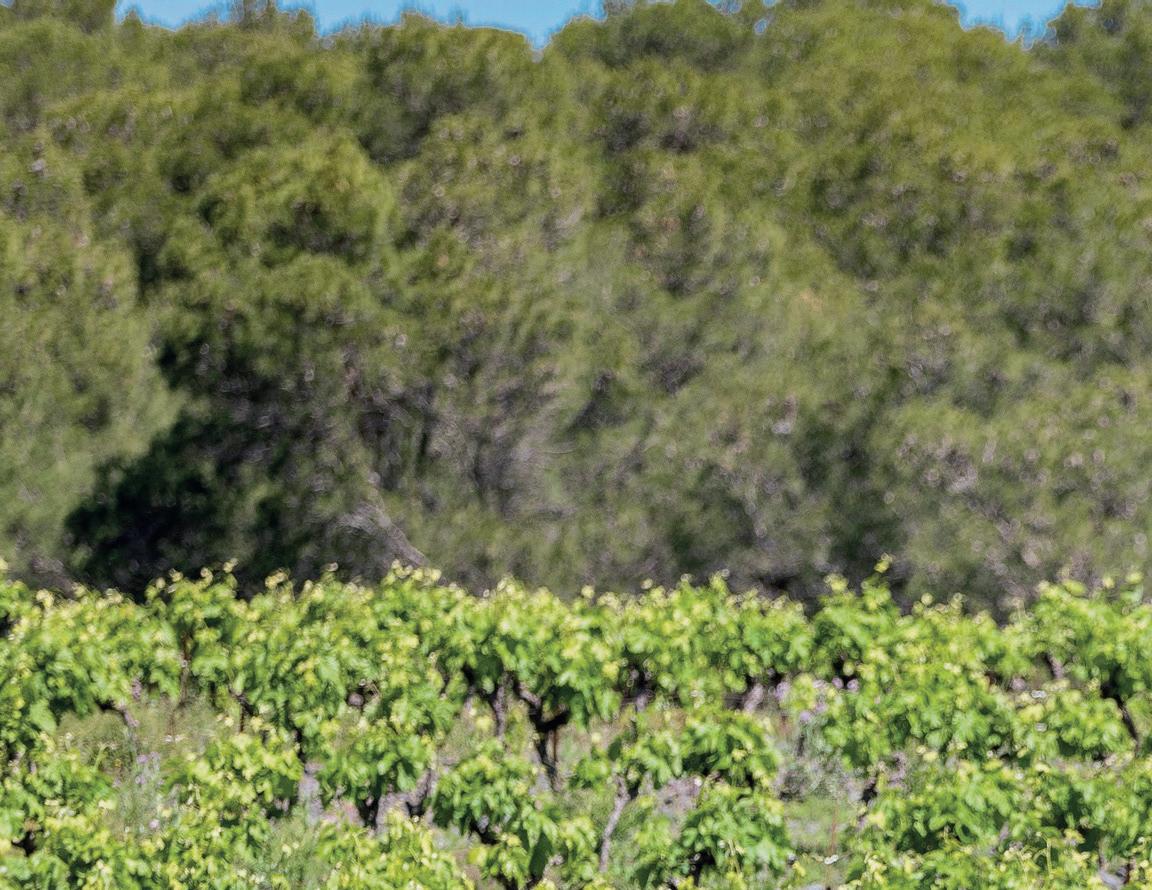




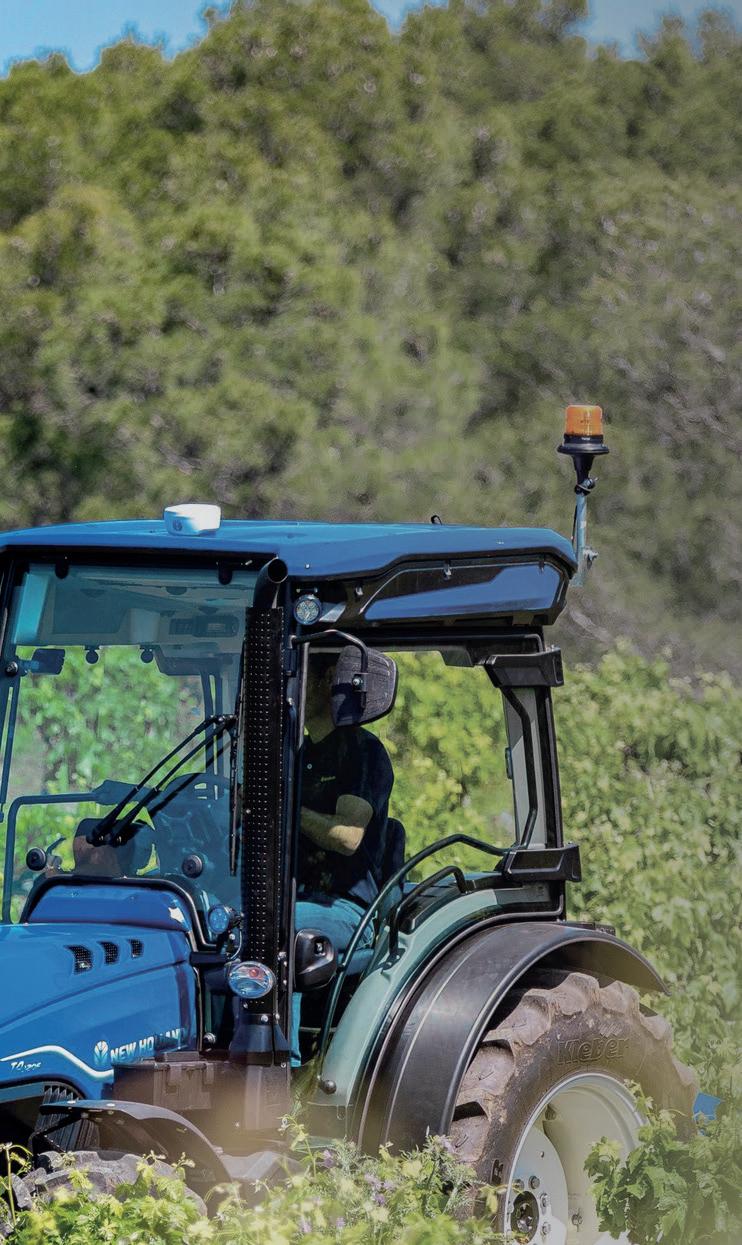



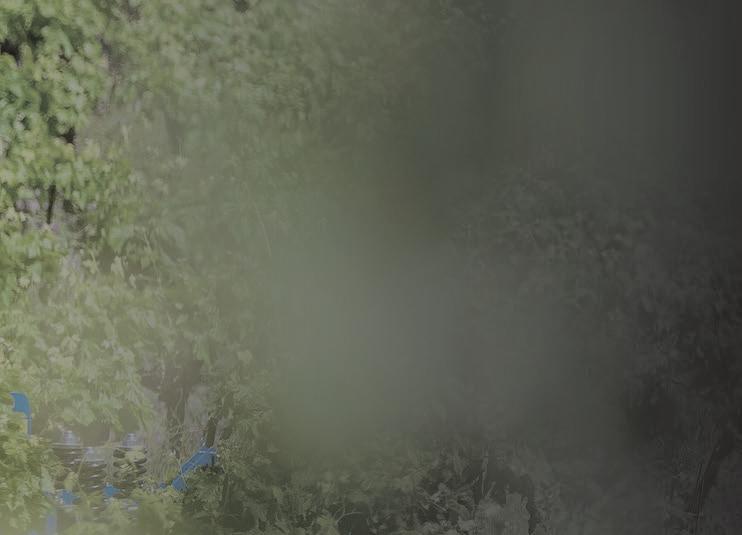













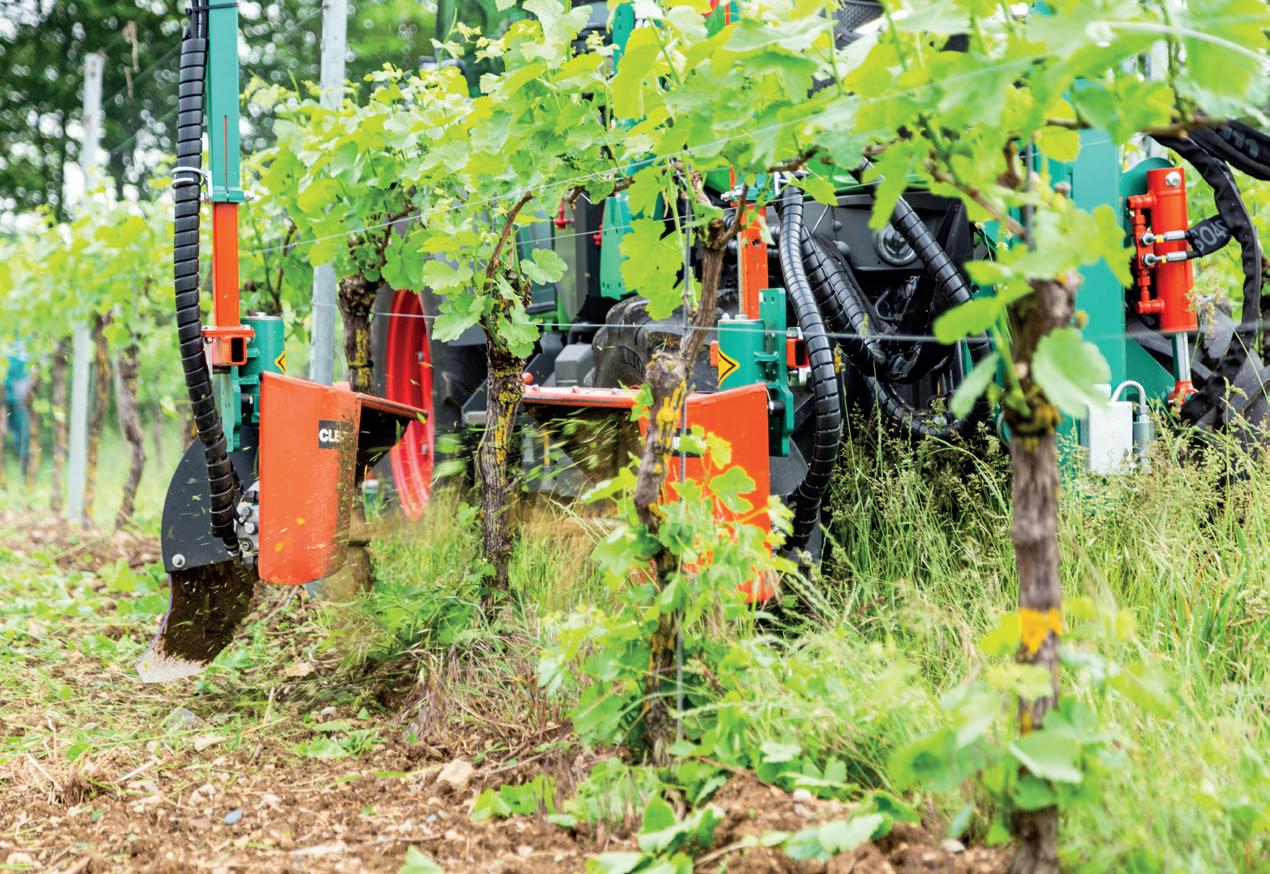
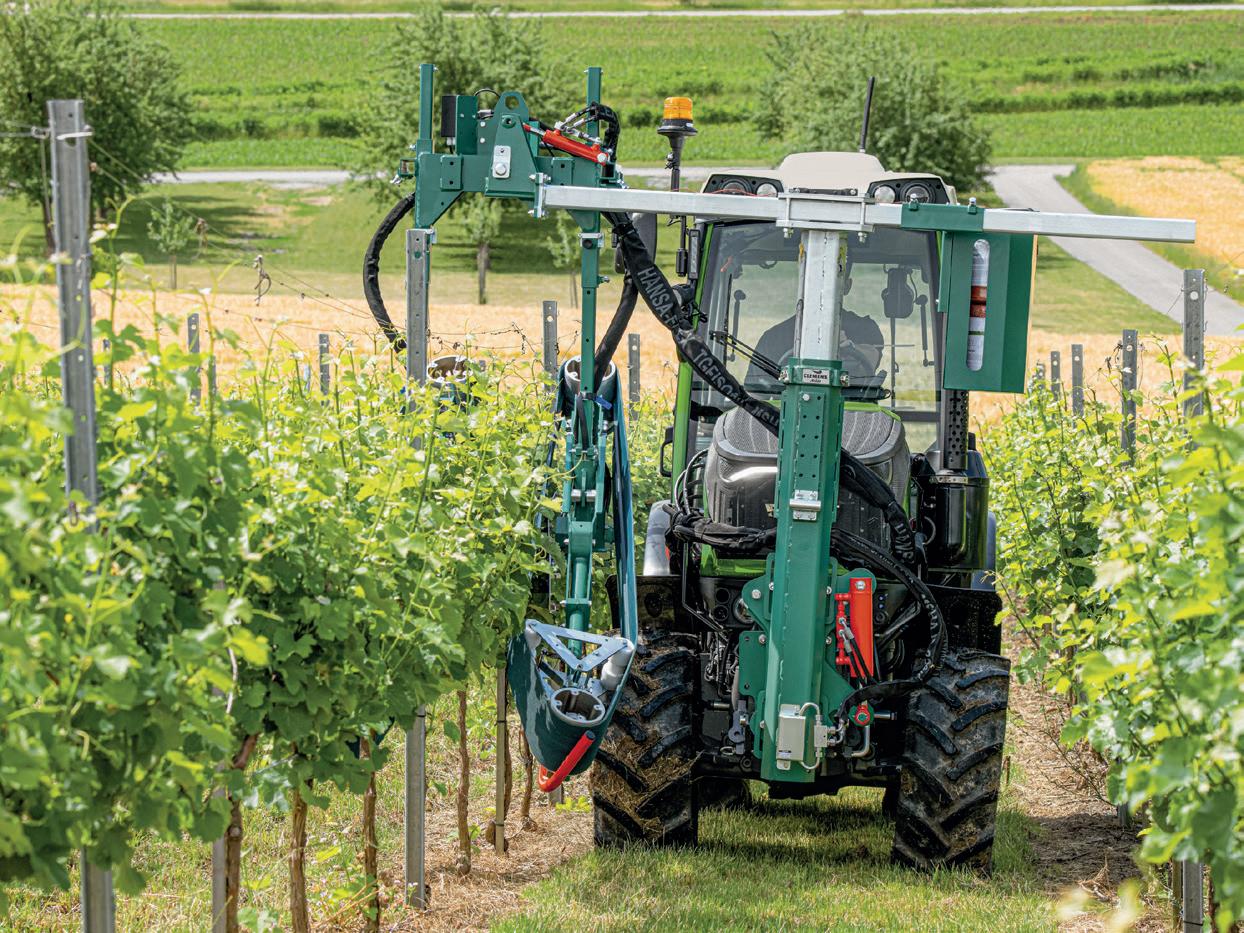


Leaf removal by hand is labour intensive and expensive so the alternative is to mechanise.
Various systems have evolved over the years with the early ones being rather rough and ready but the recent ones being refined, safe and able to cover a lot of ground in a day.
Vitifruit Equipment have been selling and hiring them for over twenty years and have seen a growth in use across the country as more people try them and get used to them.
There are two basic types, first the one which sucks the leaves into contra rotating rollers which pluck them off and second the type which jets fast moving air into the leaves and blast them off. Both types have their place with the plucking type being used all through the season right up to the day of harvest but the jet type being used more mid season before the berries get too soft, however that type is more capable of removing all the leaves particularly those in the densest centre of the trellis.
Of the types on the market it has become more popular to follow the Provitis systems approach whereby the tool is just one of many which mount onto a common mast however the Stockmayer system remains popular and is equally proficient and a little more manoeuvrable. Optional equipment such as a turnover device and auto sensing are available.
Generally it's advisable to trim before using these tools but if that's not possible the plucking models can be fitted with blades to trim off any branches or thick vegetation which is in the way.










